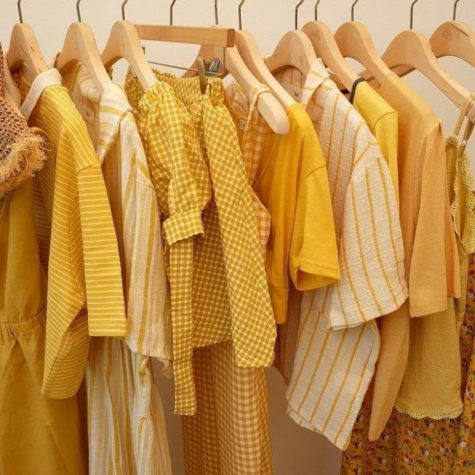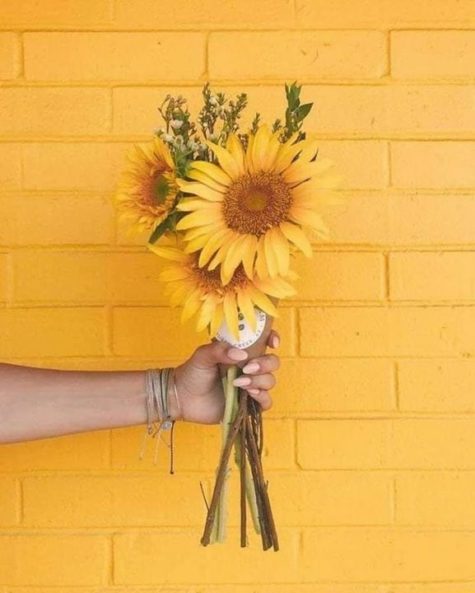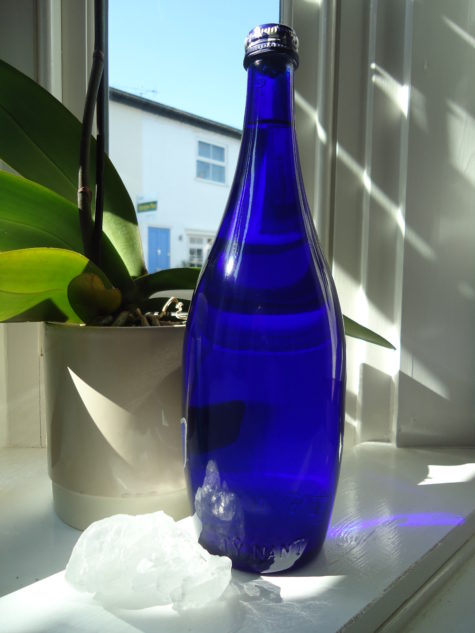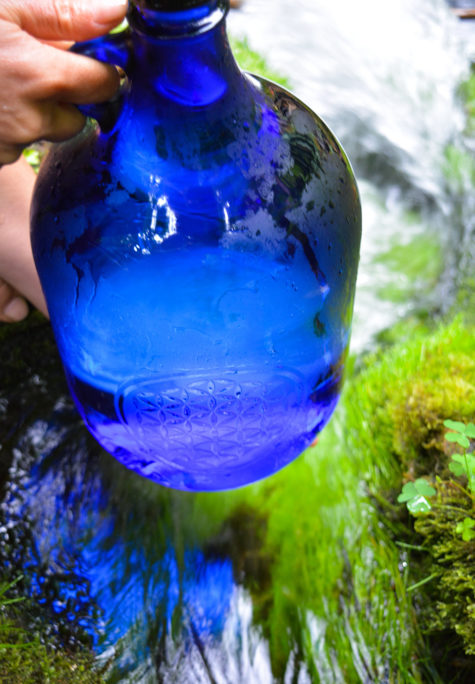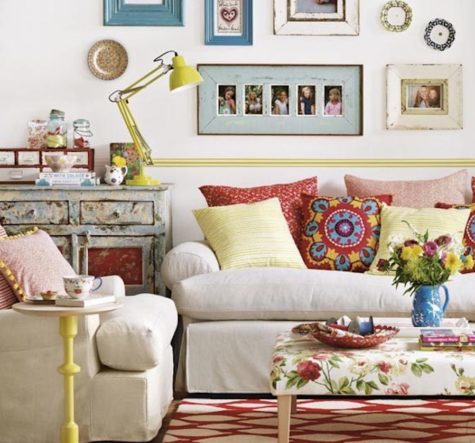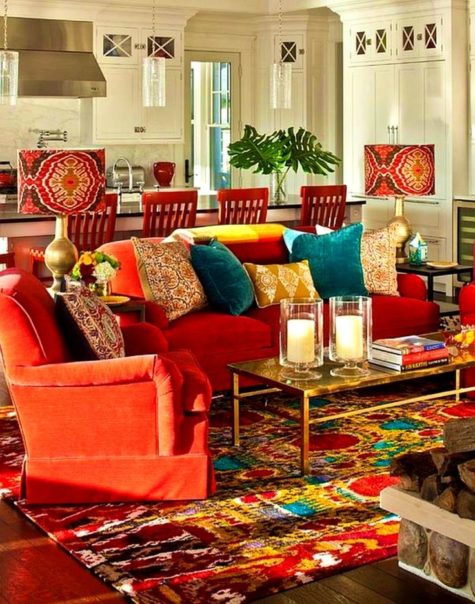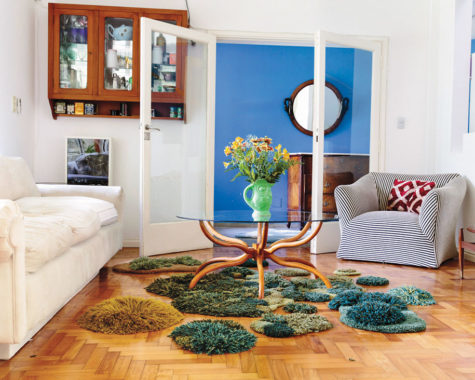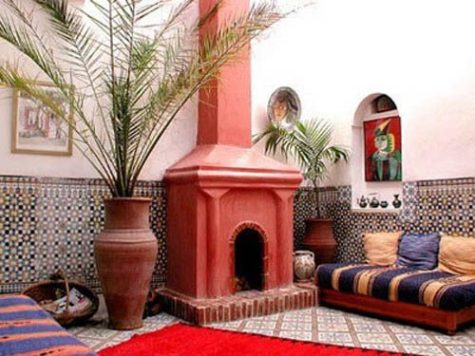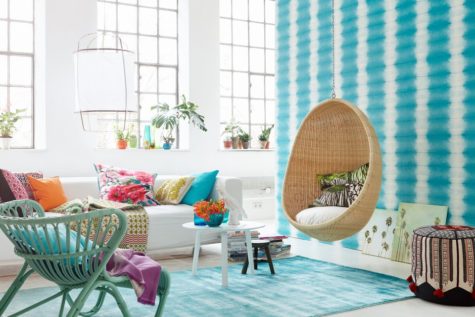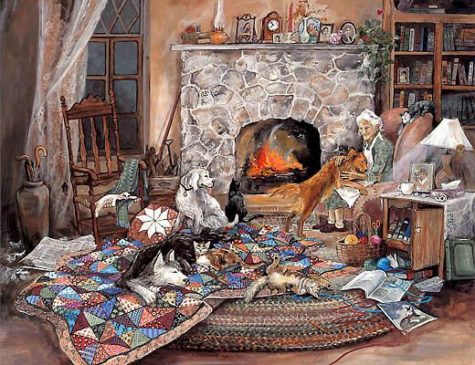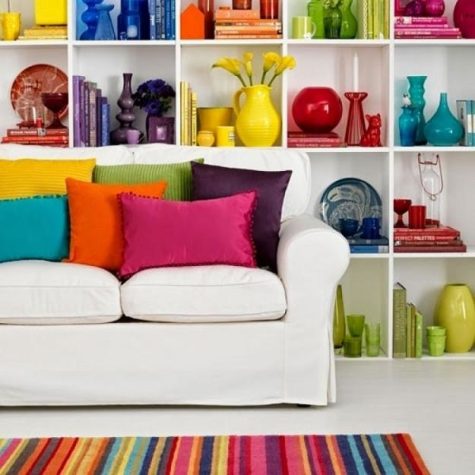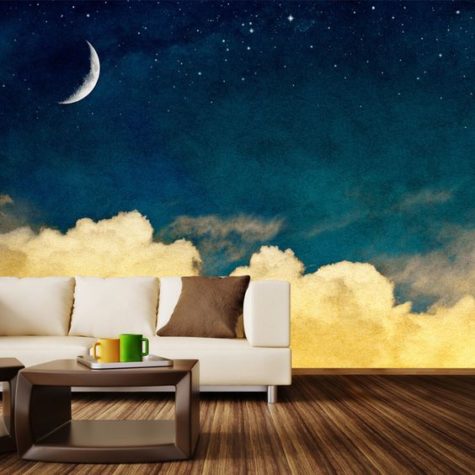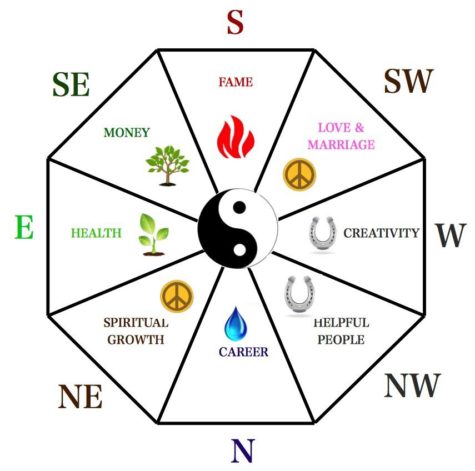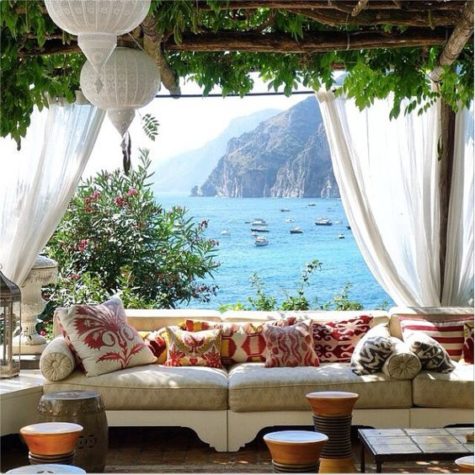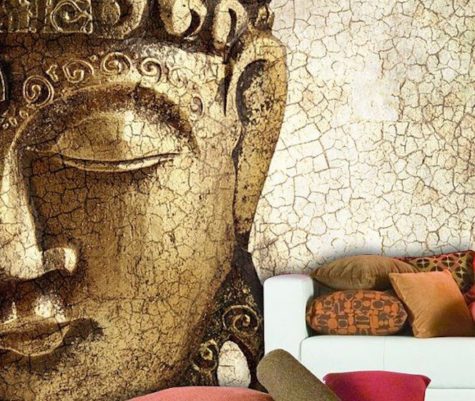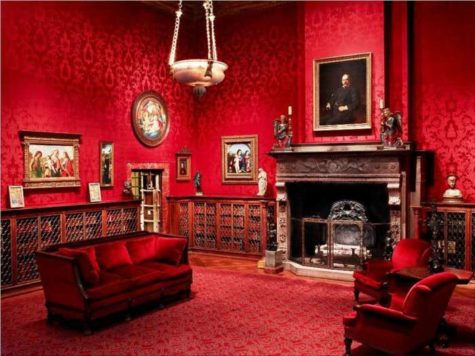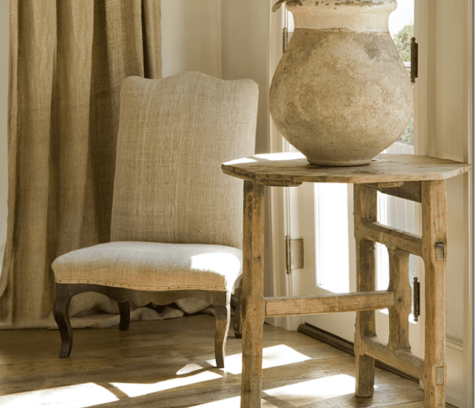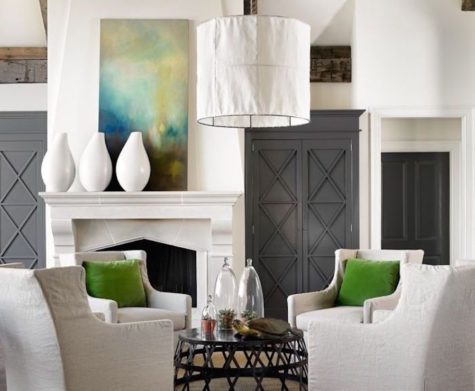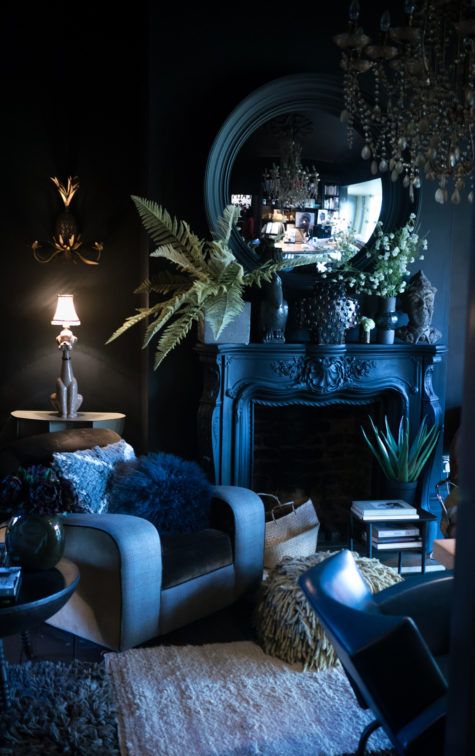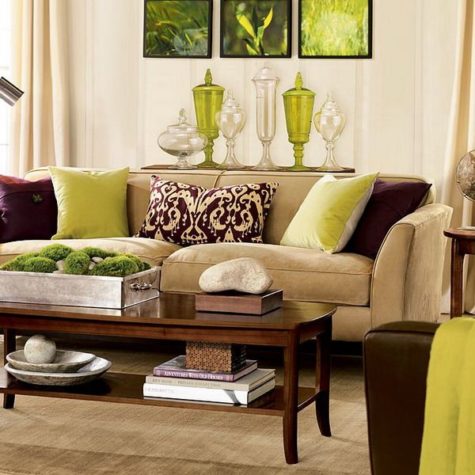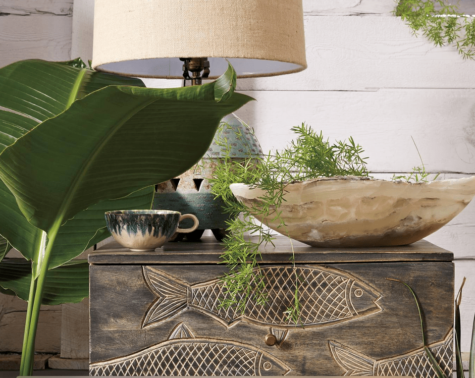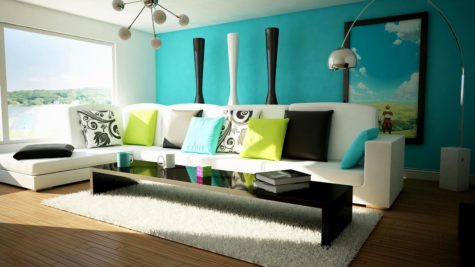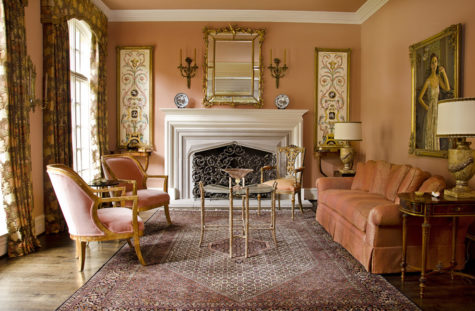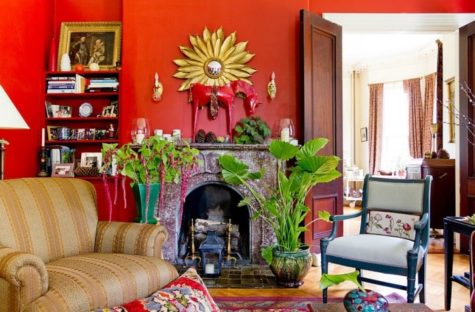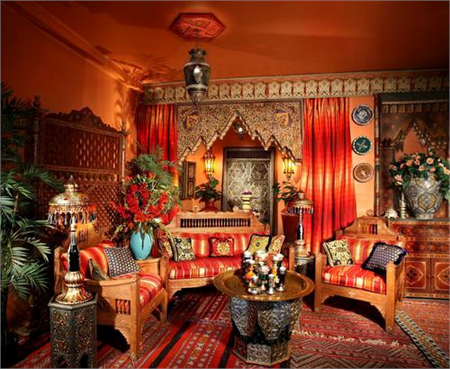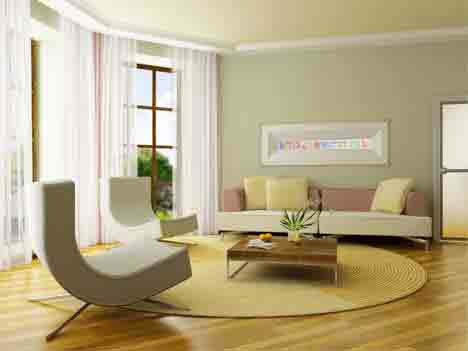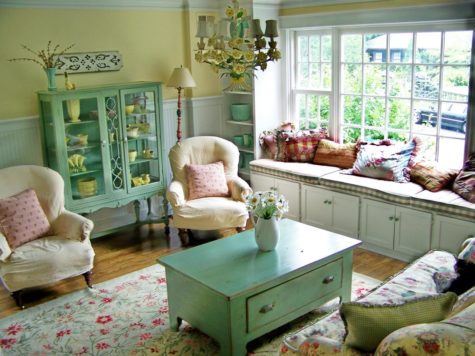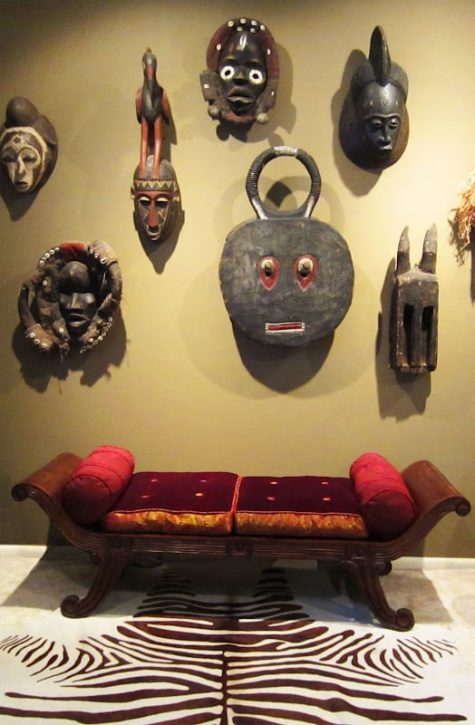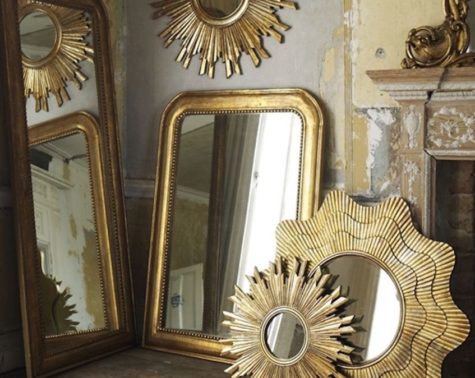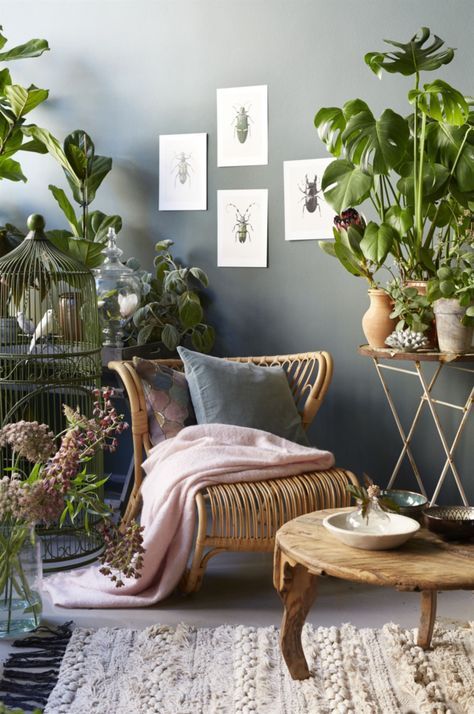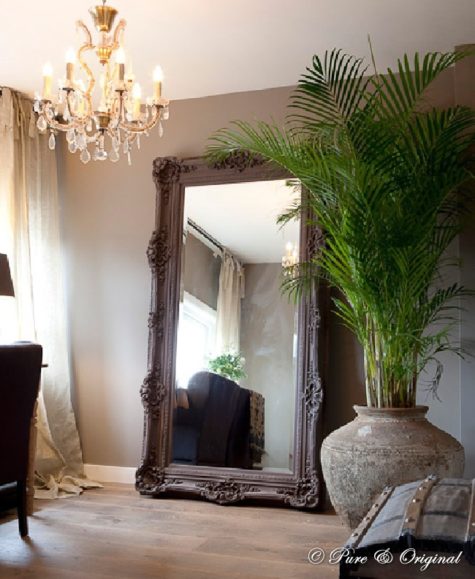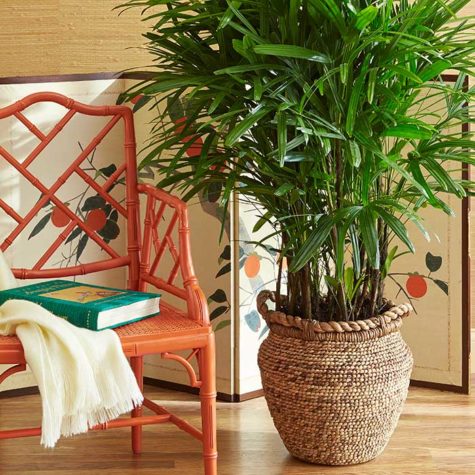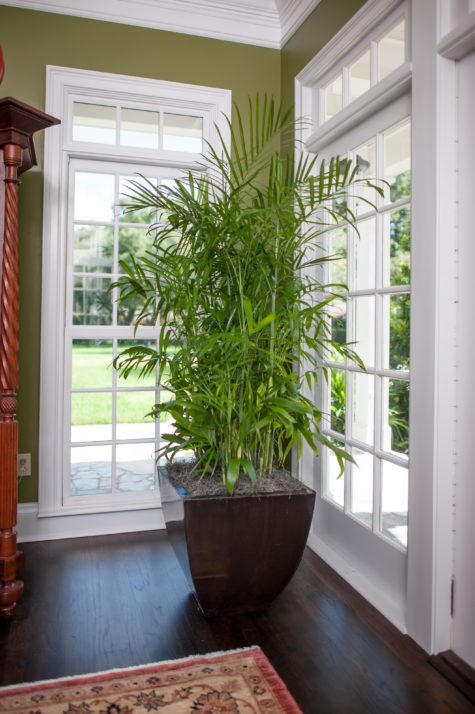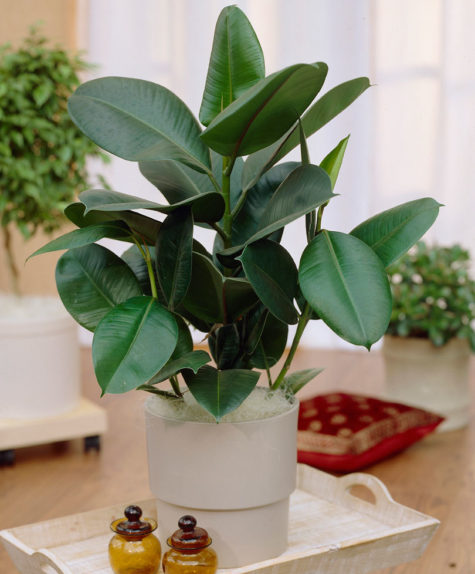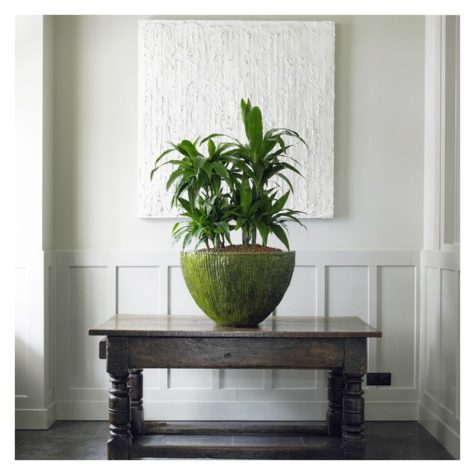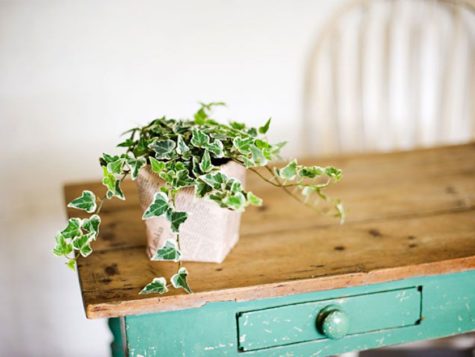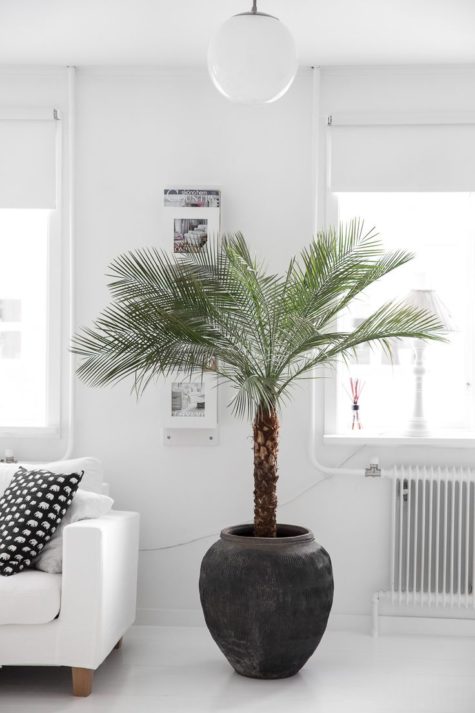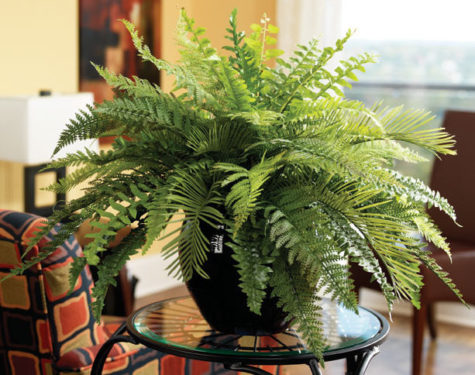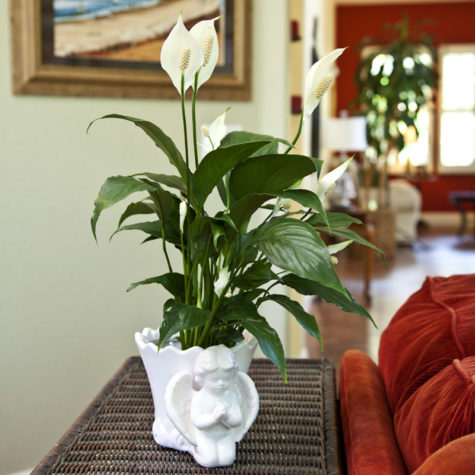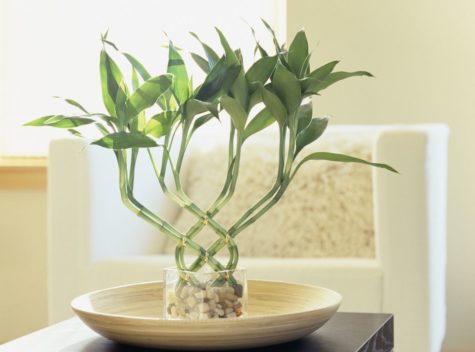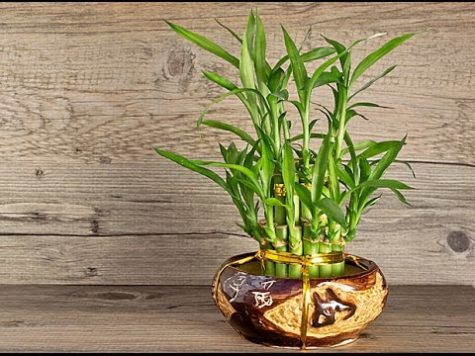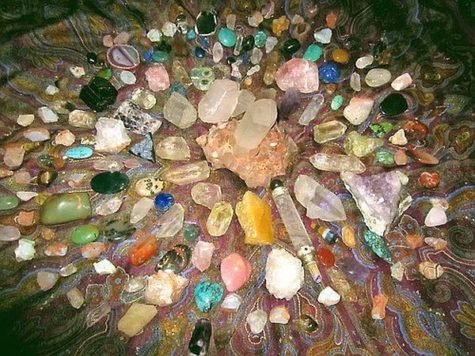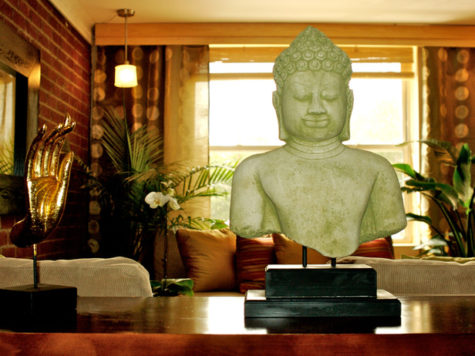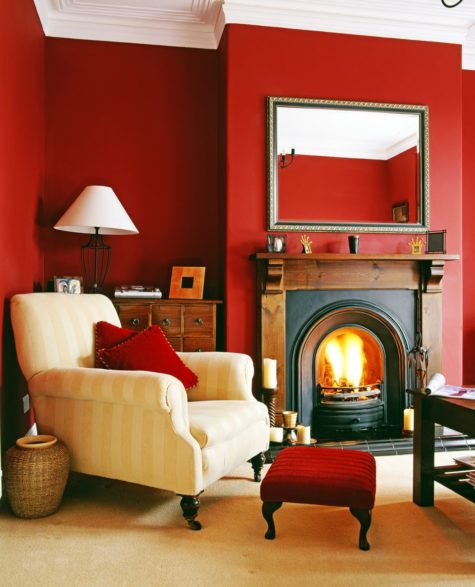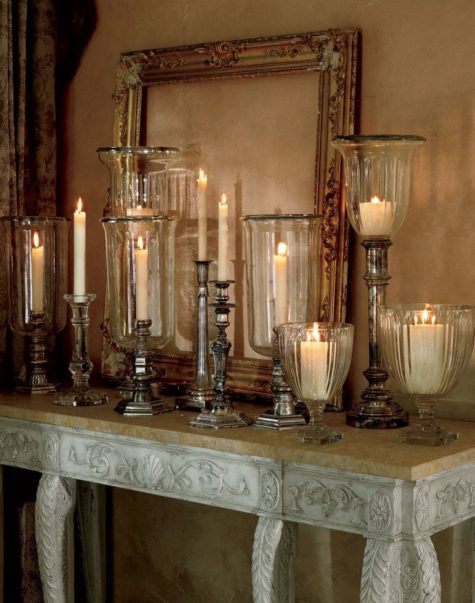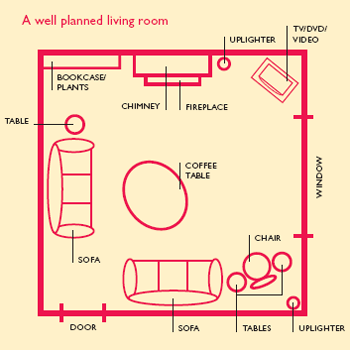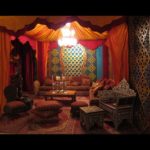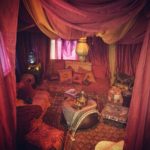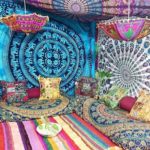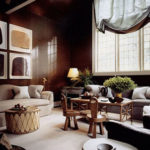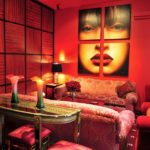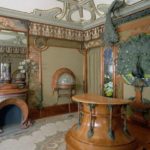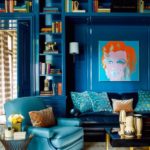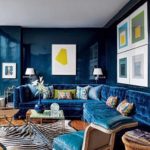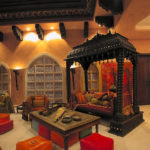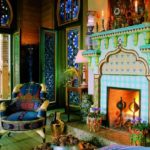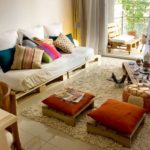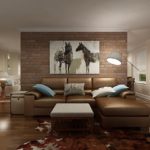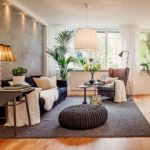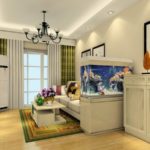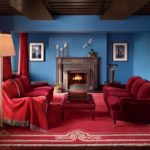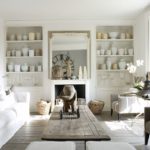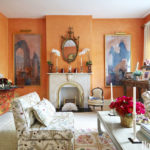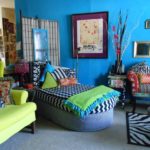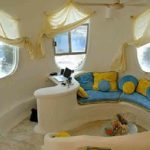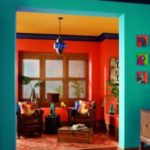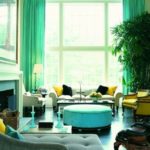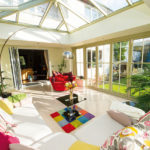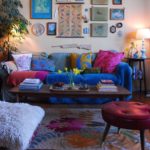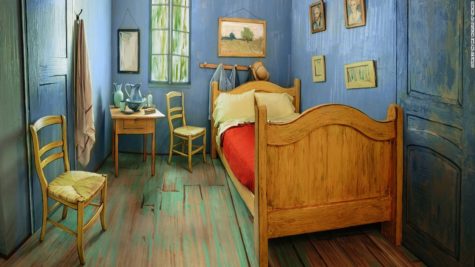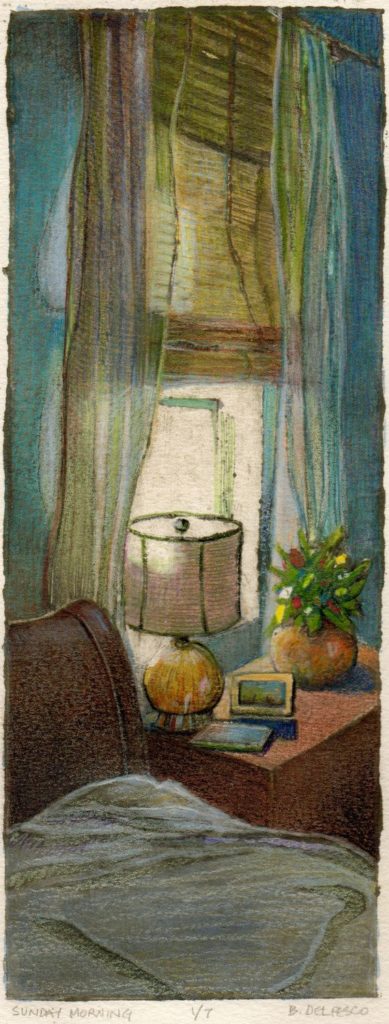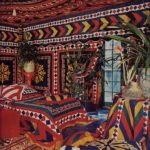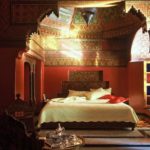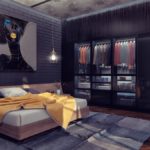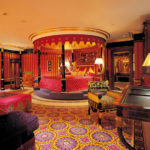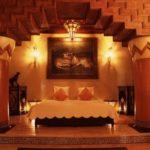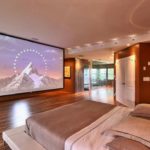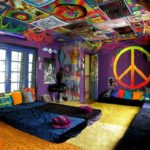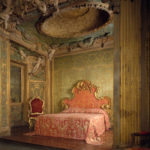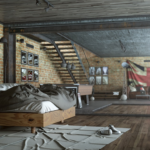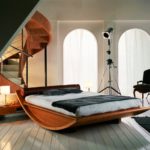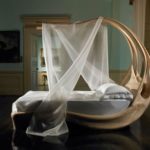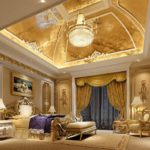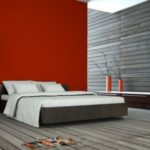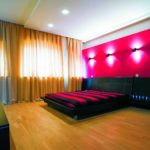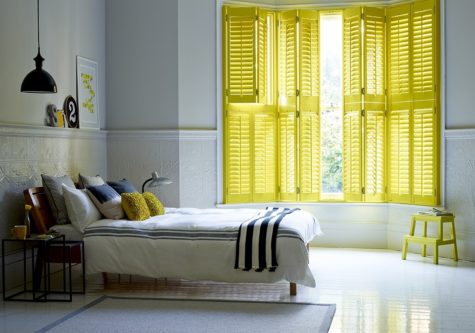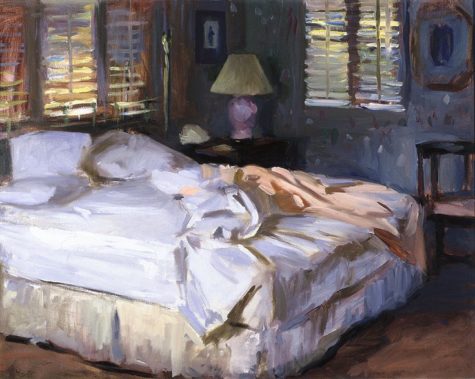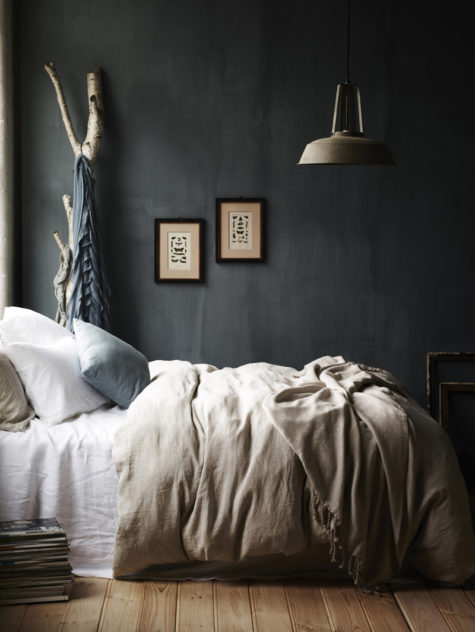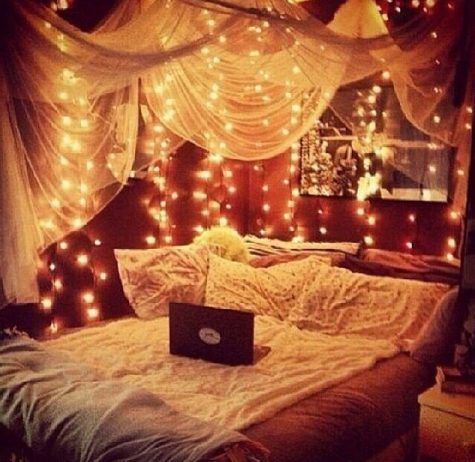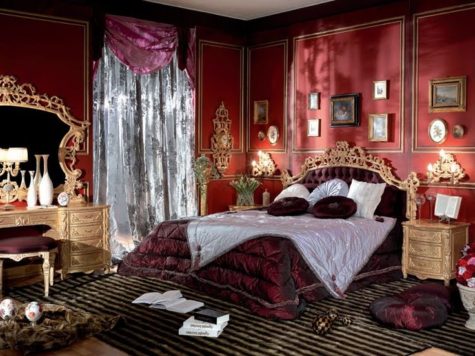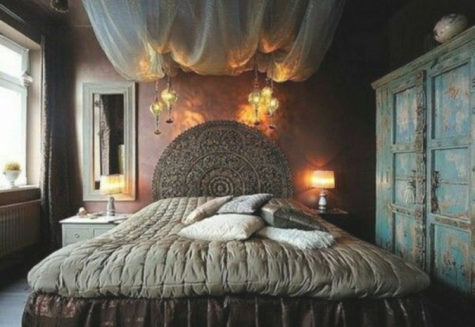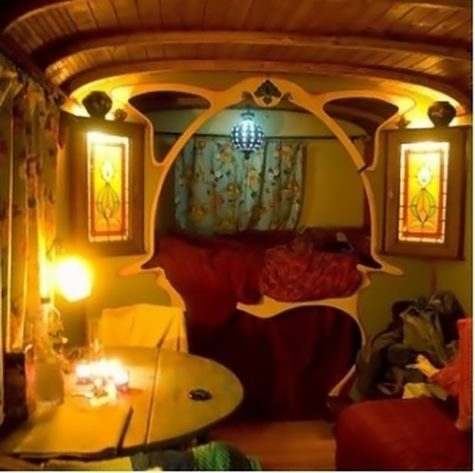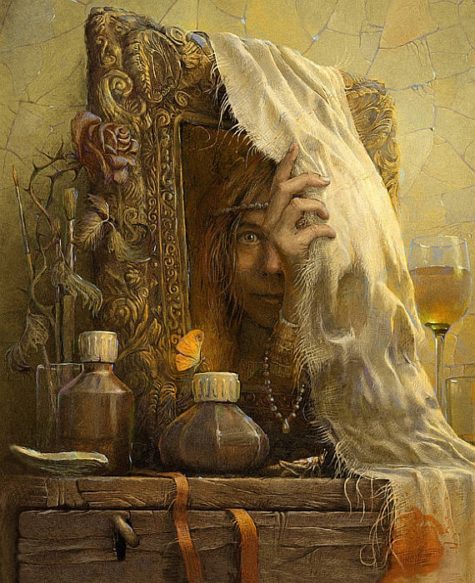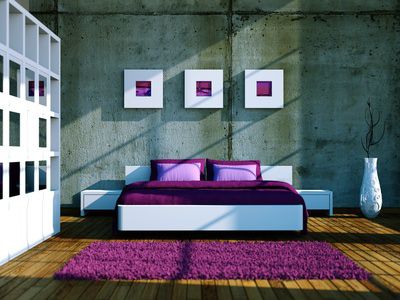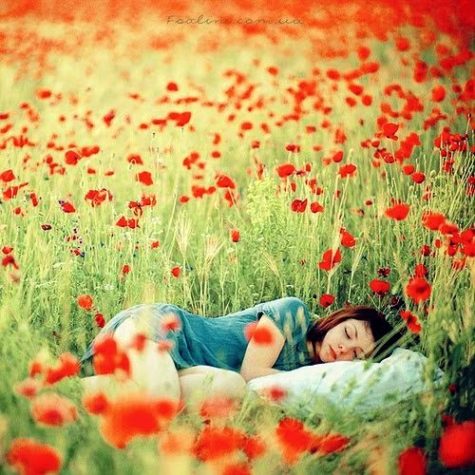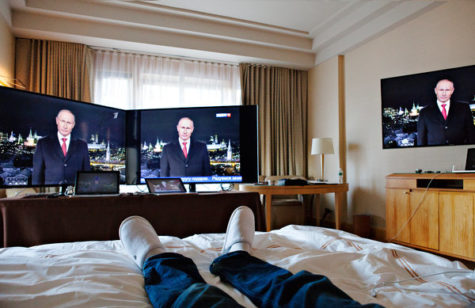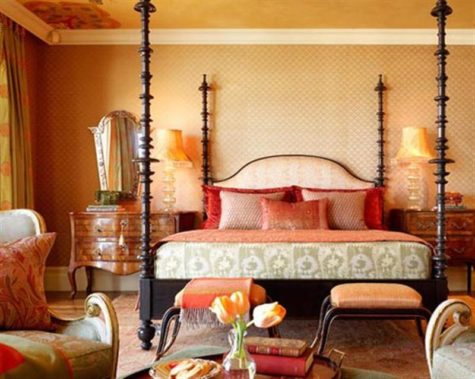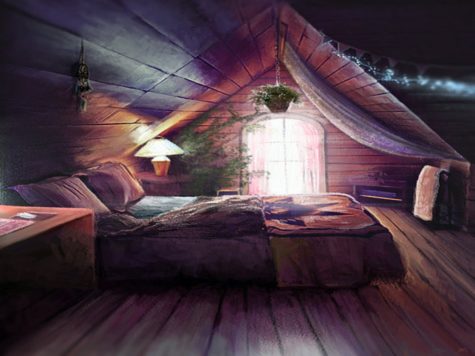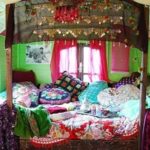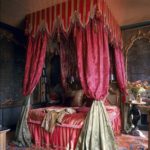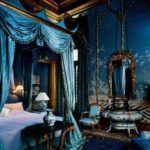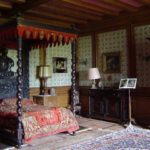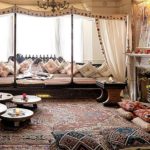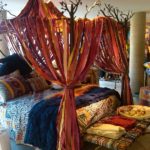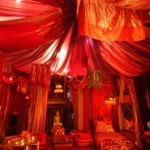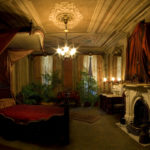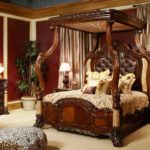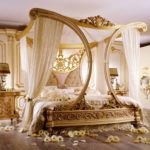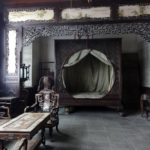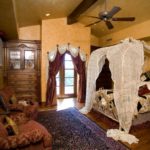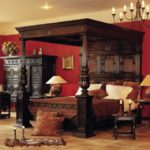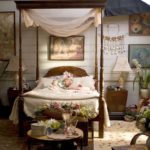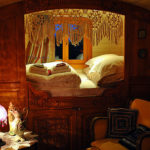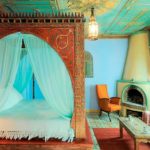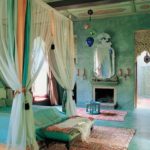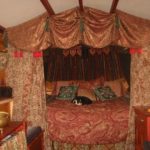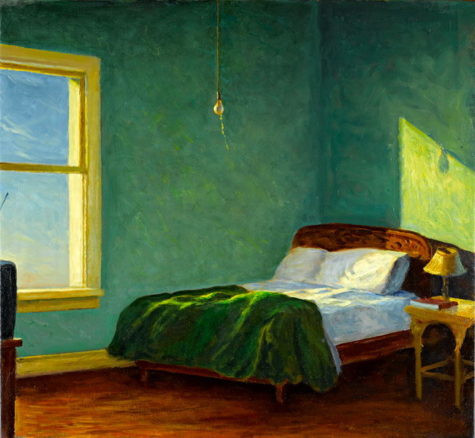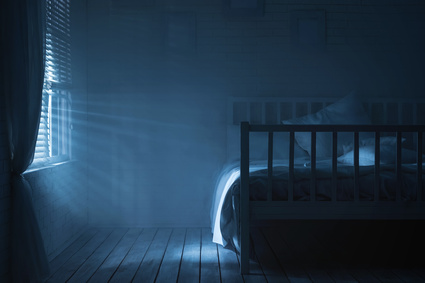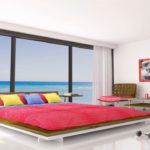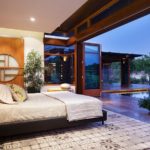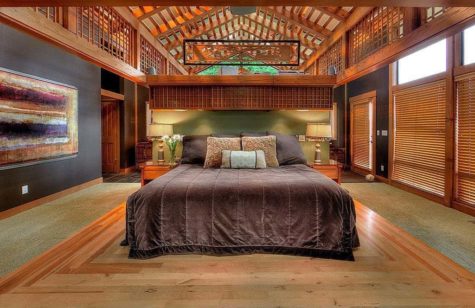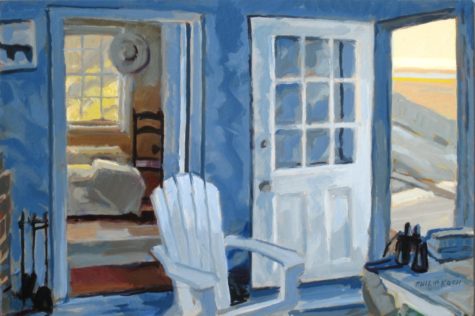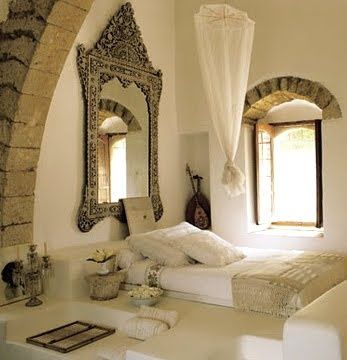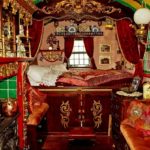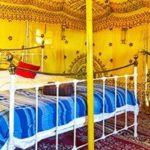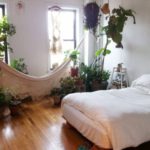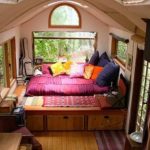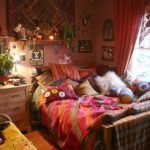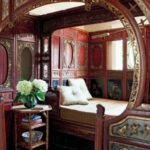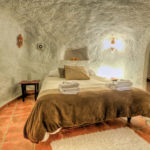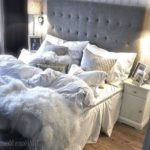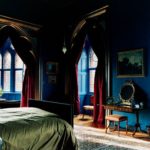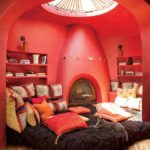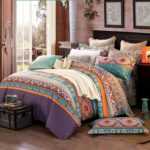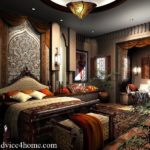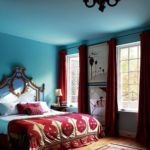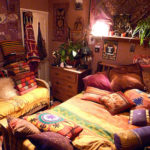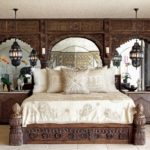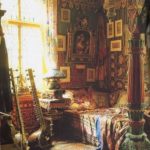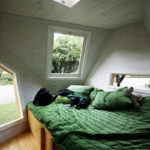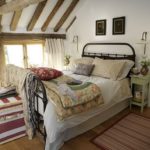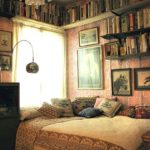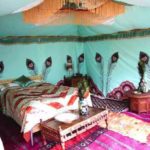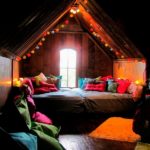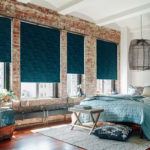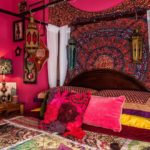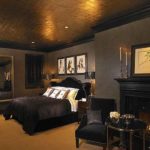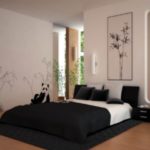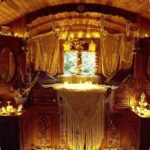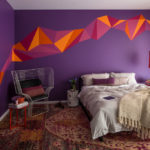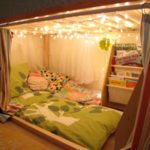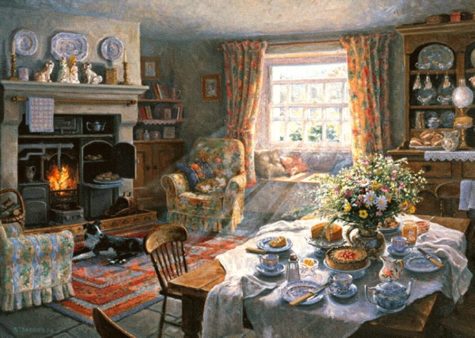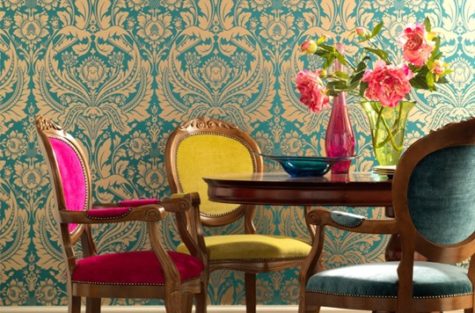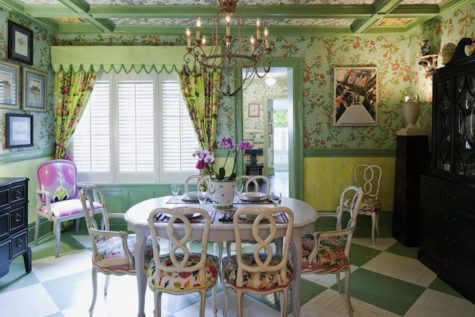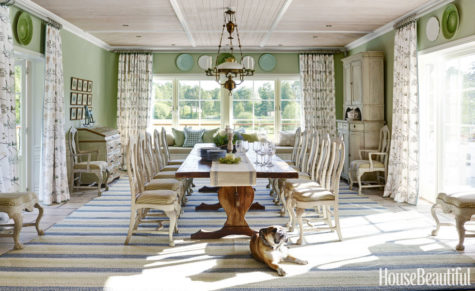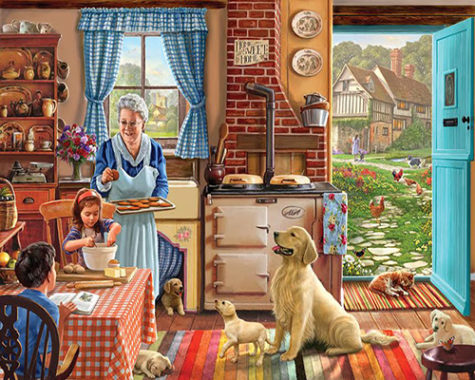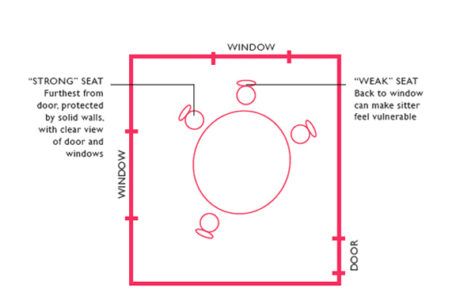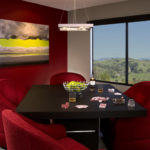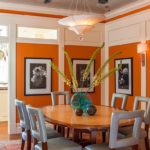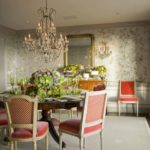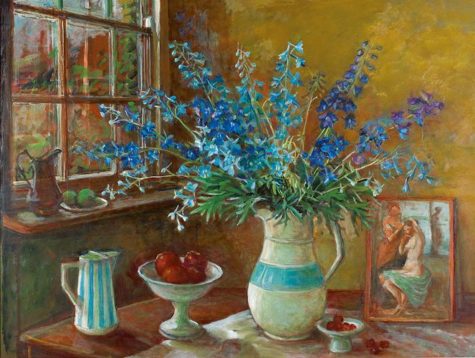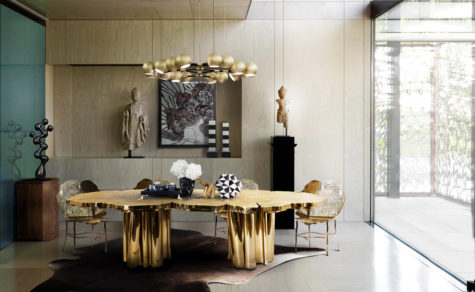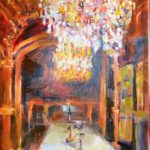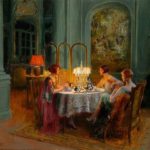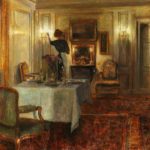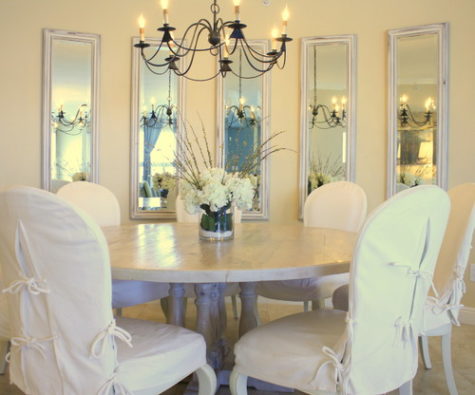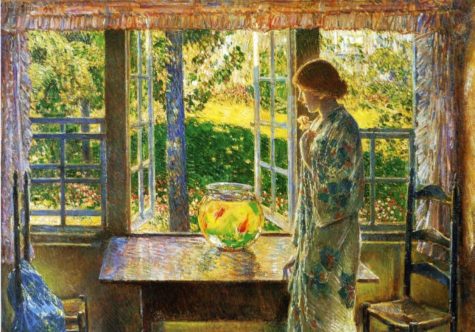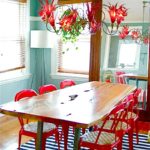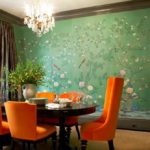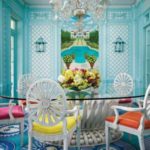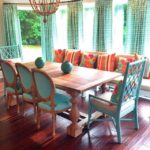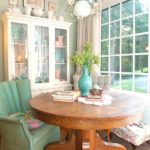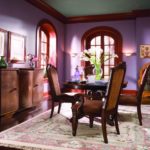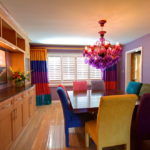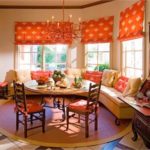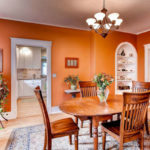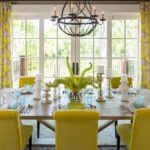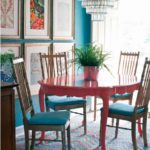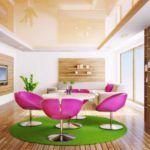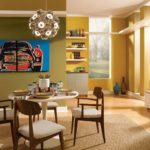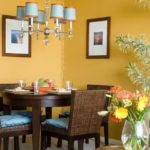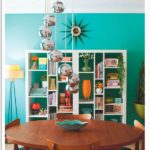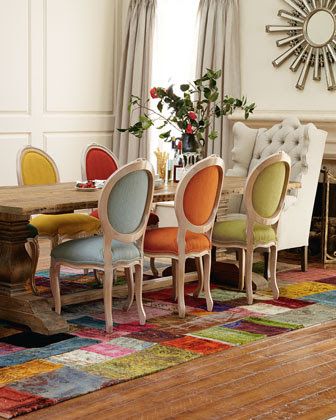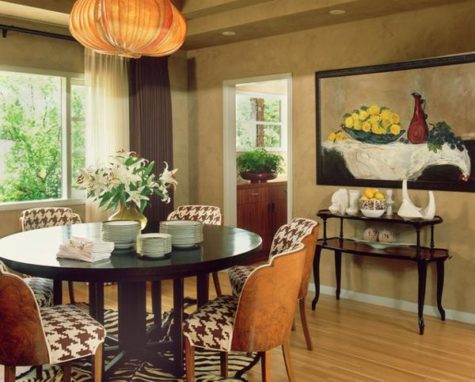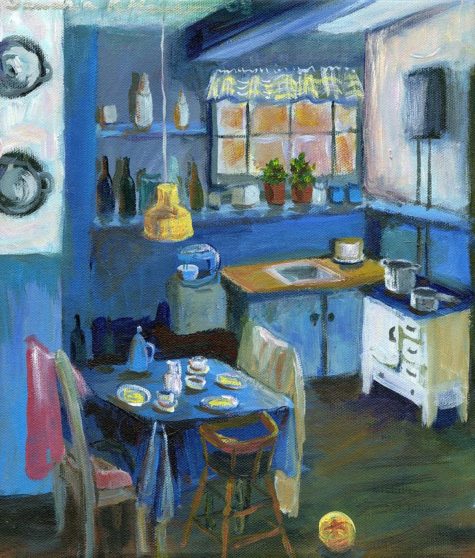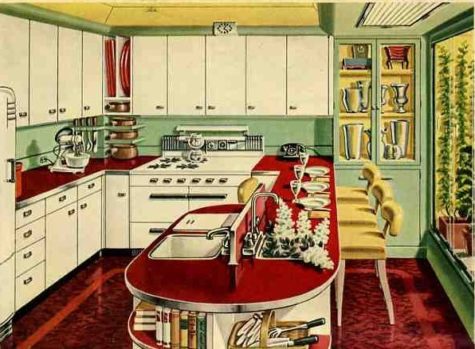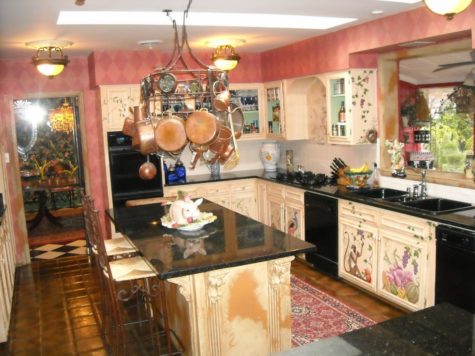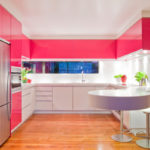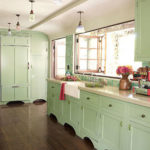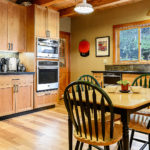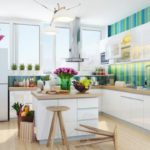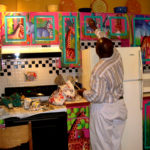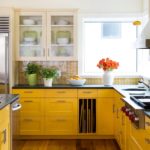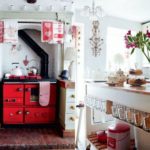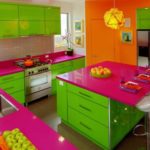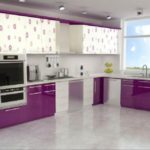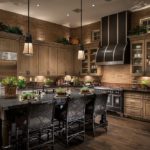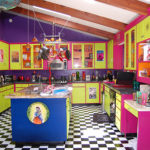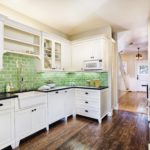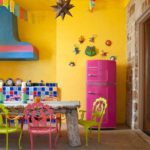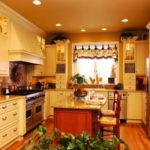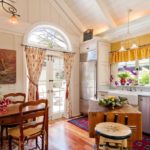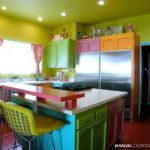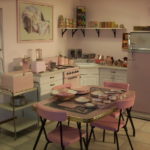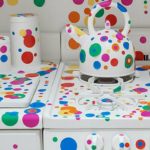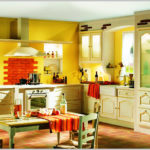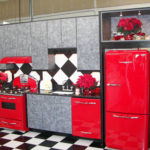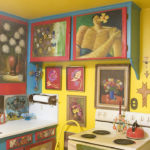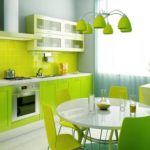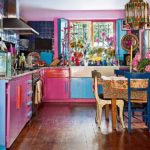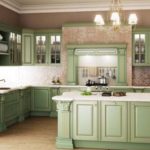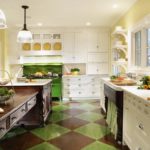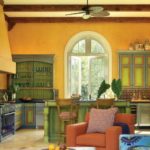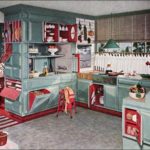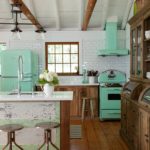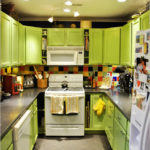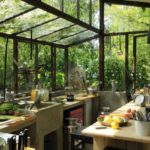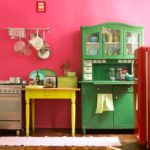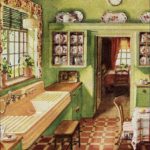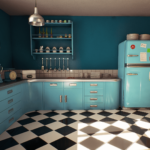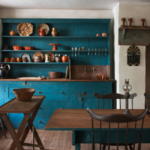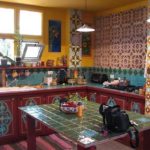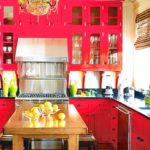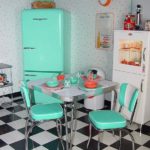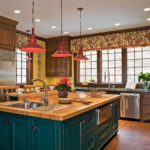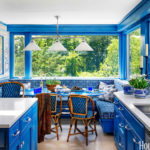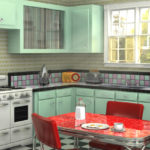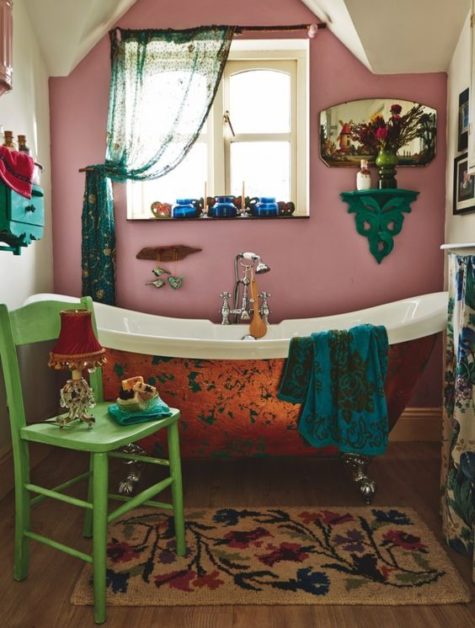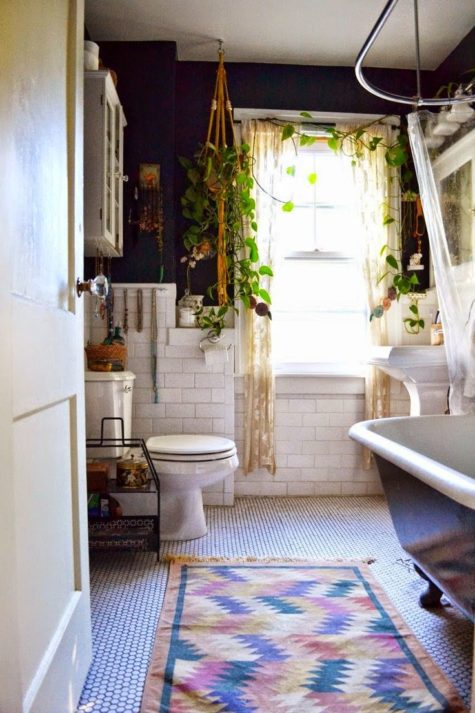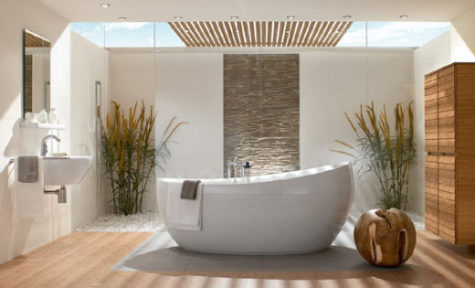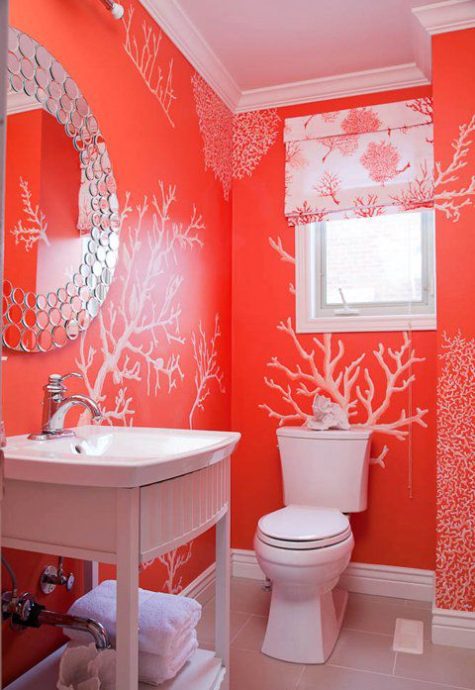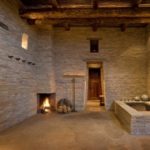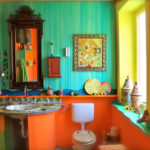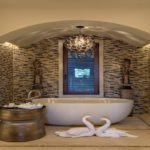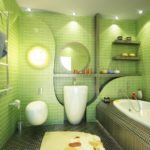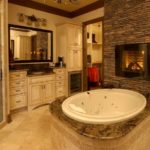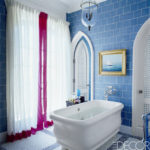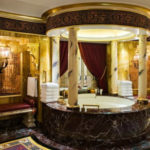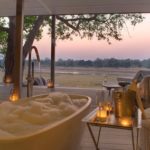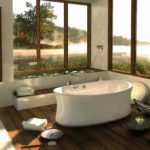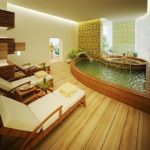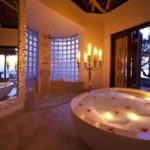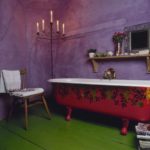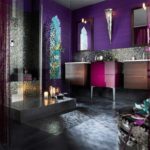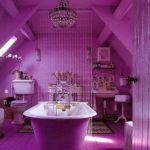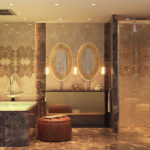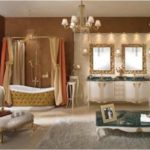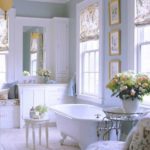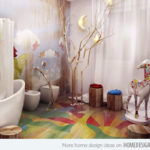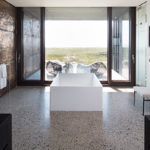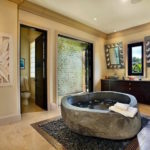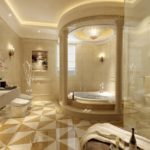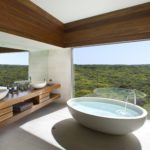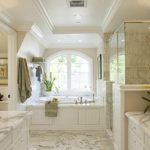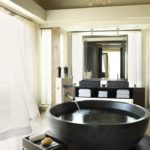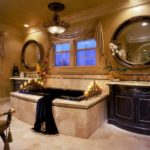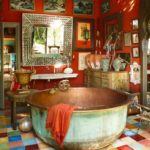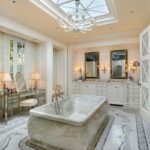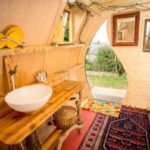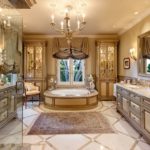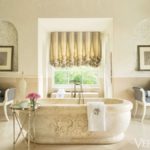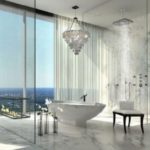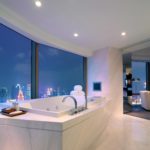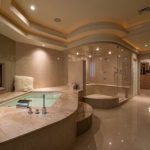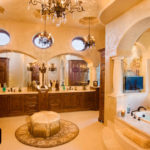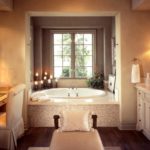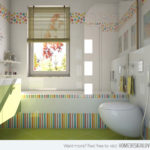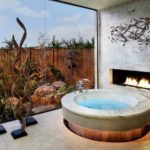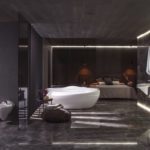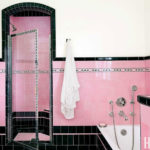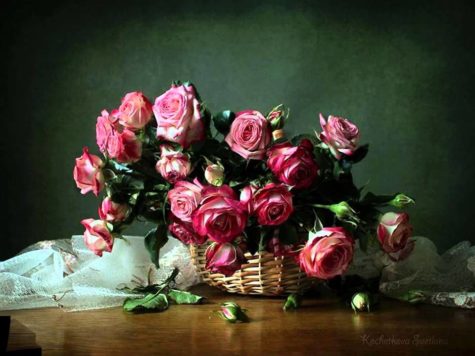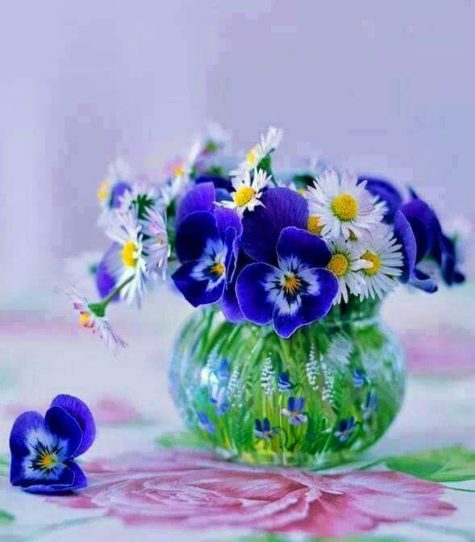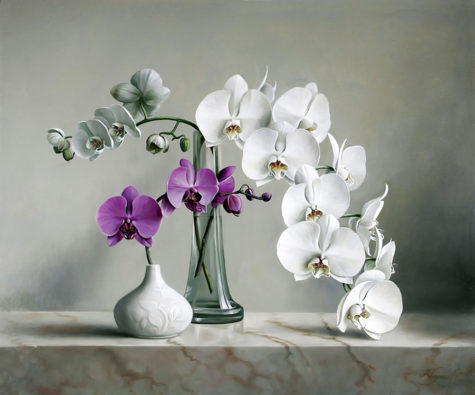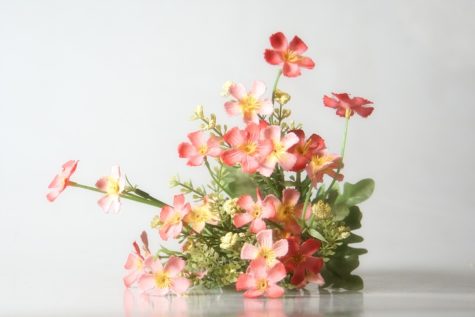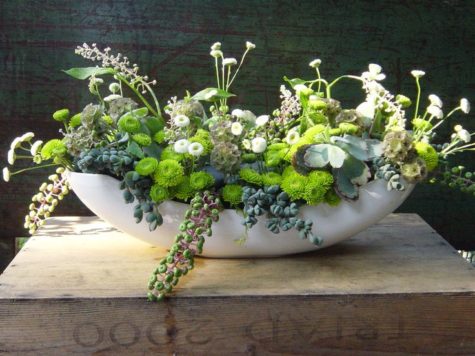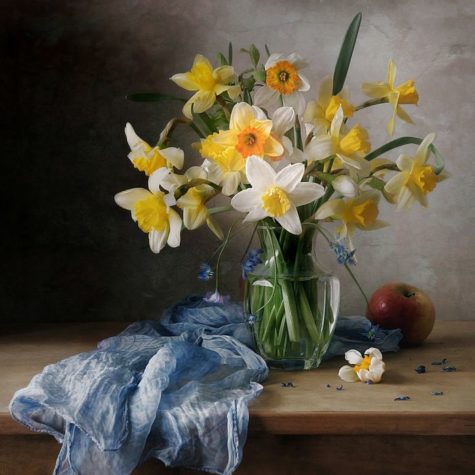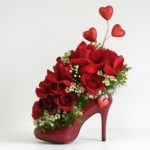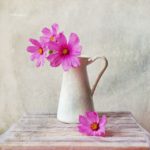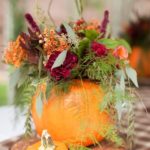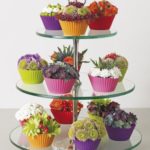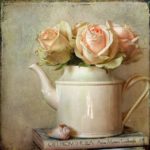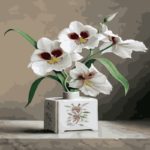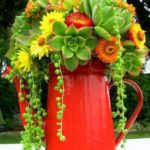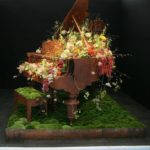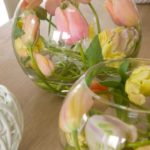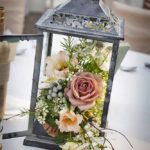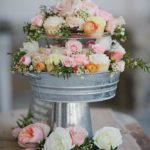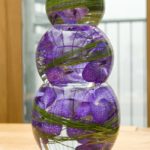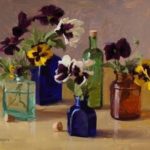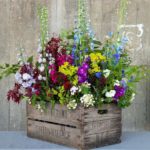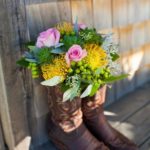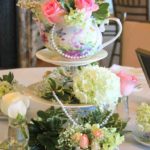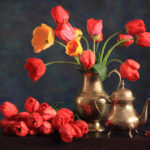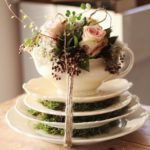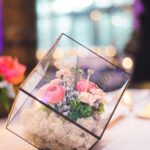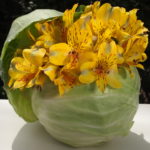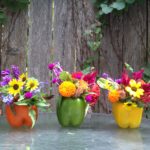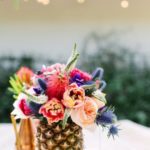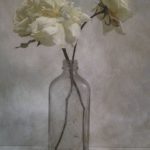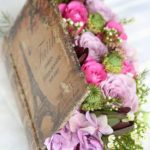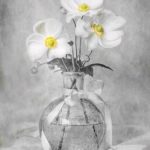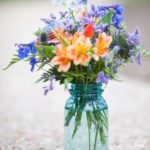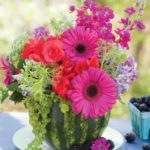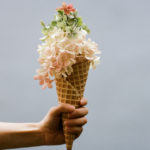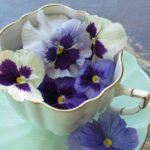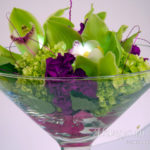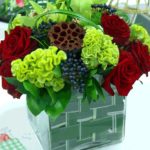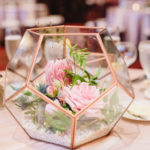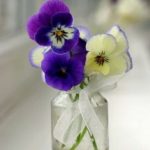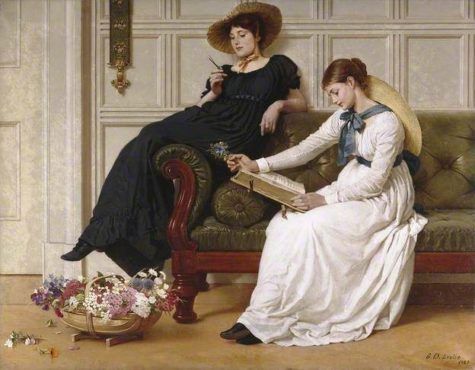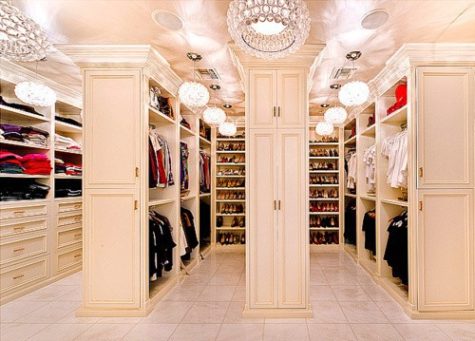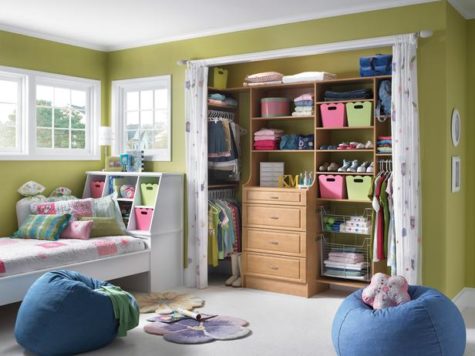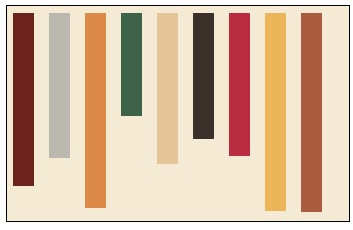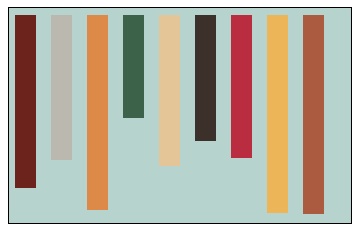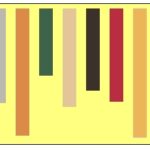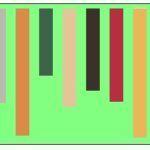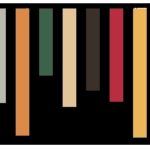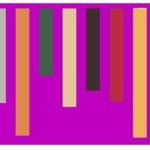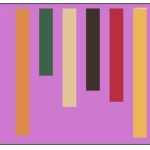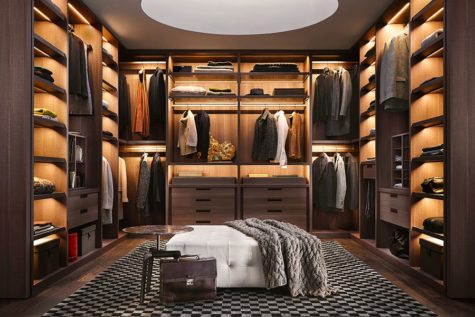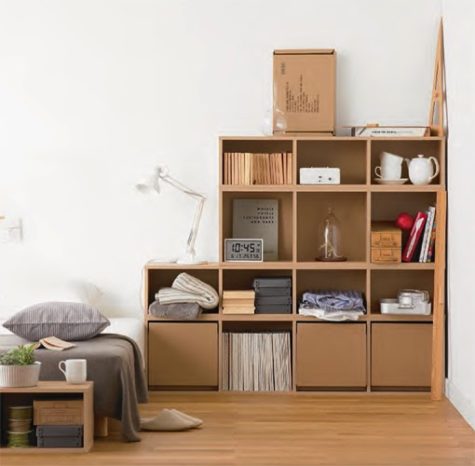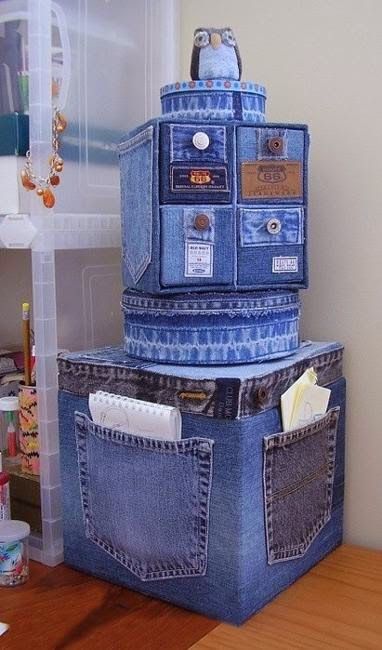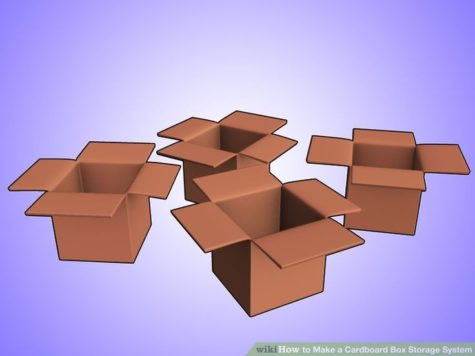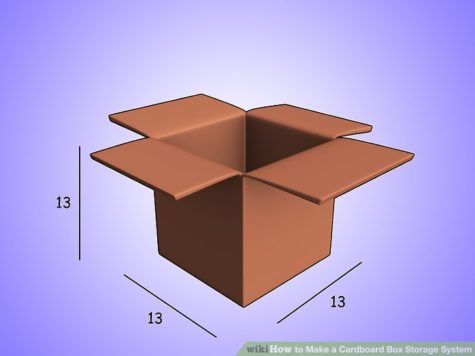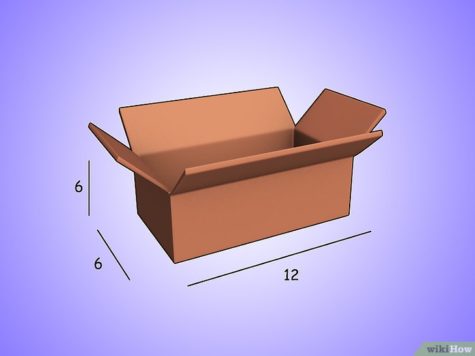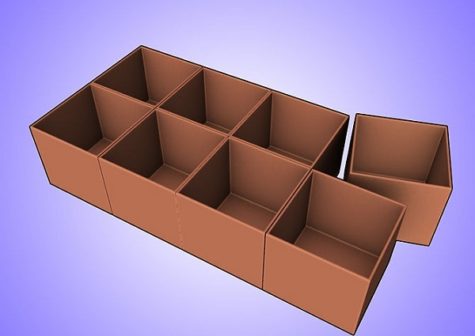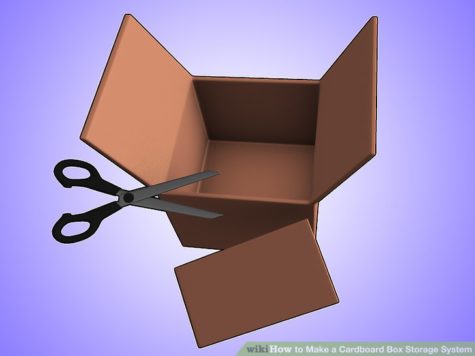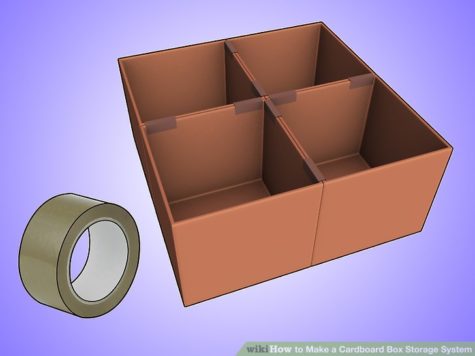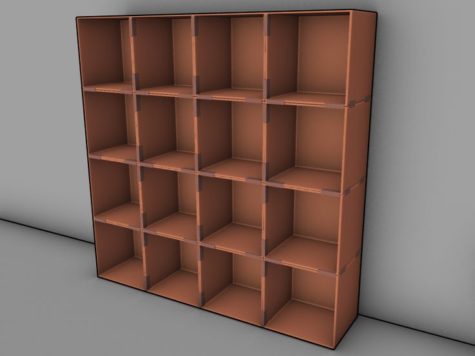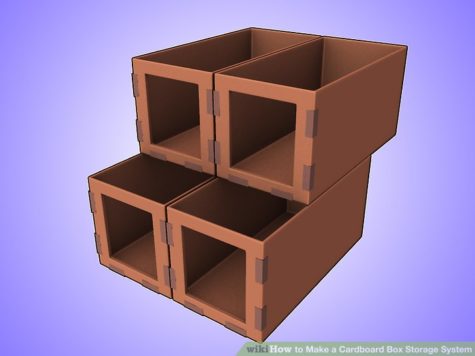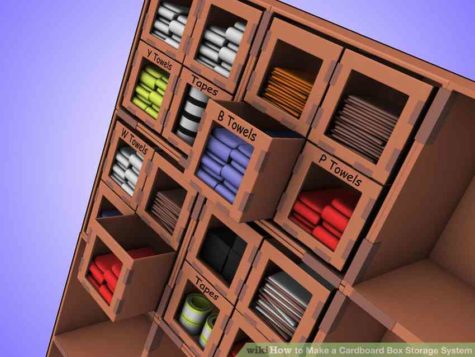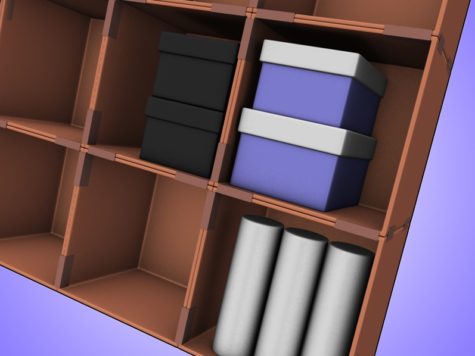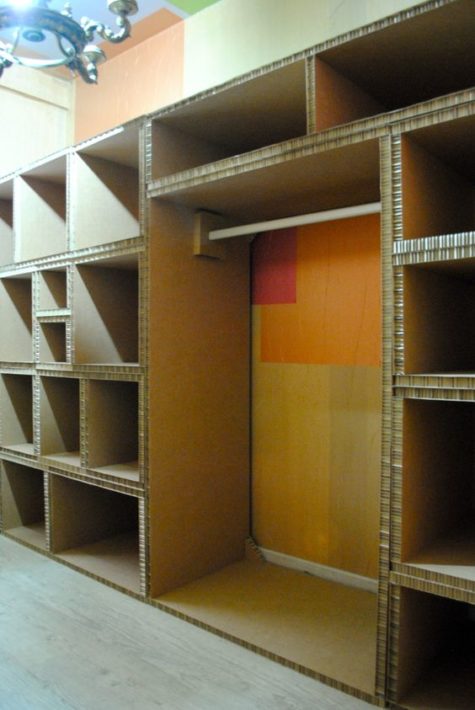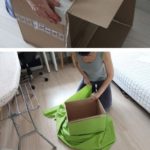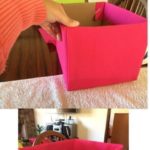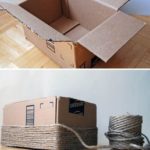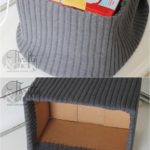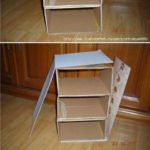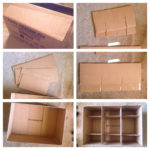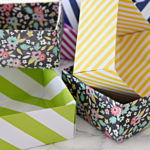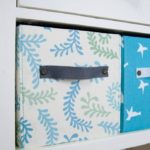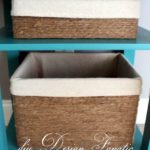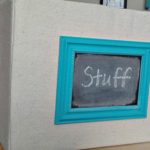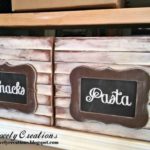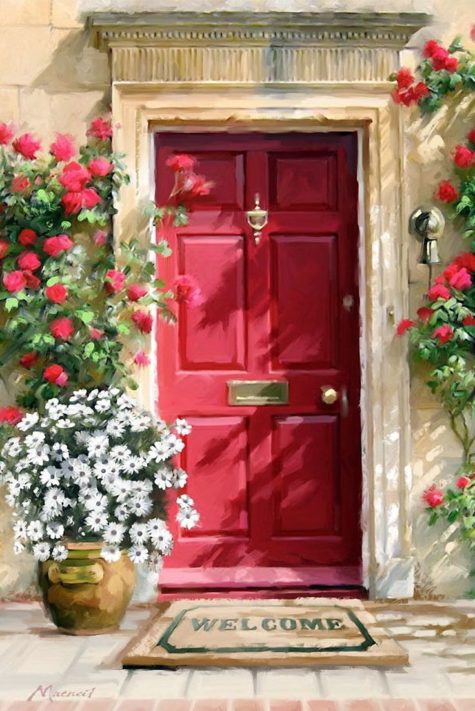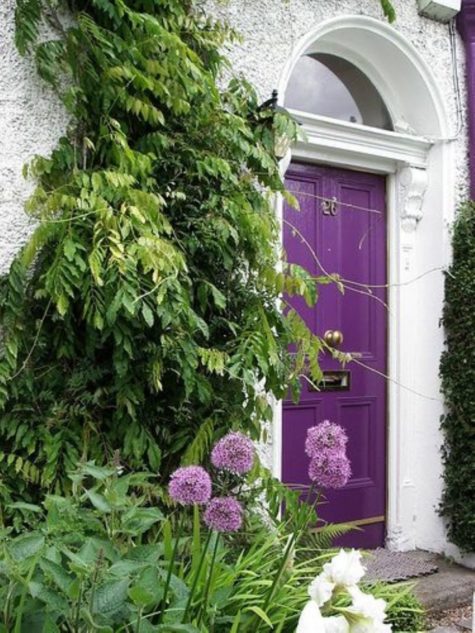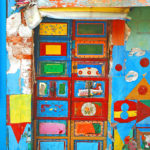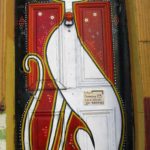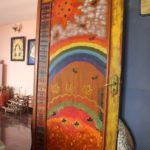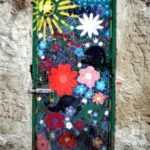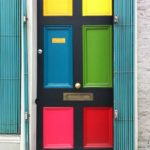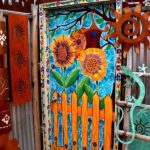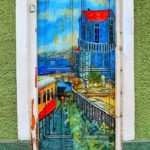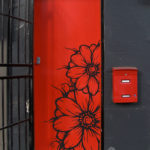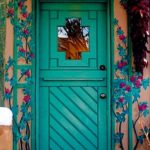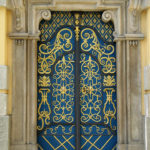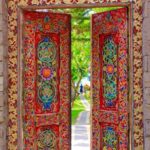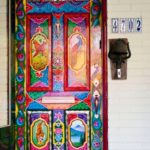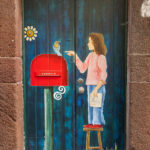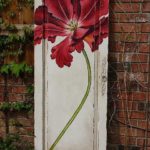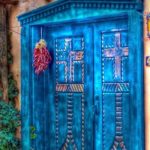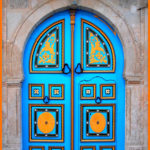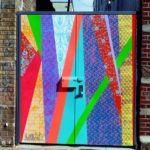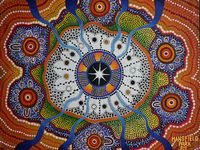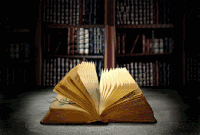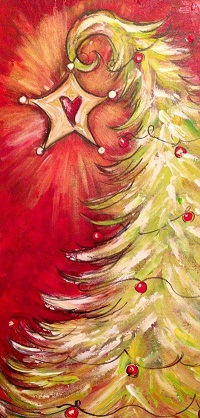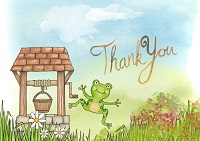Color Choices
All About Yellow
Yellow is the color of sunlight and as such is a cheerful and happy color. Yellow expresses the need for constant stimulation and activity. It is an inspiring and expressive color which expands the mind and the capacity to understand. Yellow is associated with the mentally adventurous. It is the color of the solar plexus chakra.
Yellow is the color of gold, butter, and ripe lemons. Yellow is commonly associated with gold, wealth, sunshine, reason, happiness, optimism and pleasure, but also with cowardice, envy, jealousy and betrayal. It plays an important part in Asian culture, particularly in China.
Yellow enriches, stimulates, lightens and activates many of the systems of the body. It tends to encourage orderliness and clarity. It can act as a mild sedative to relieve many fears and give a mental lift. Gradual and consistent exposure to yellow light decreases blood pressure and heart rate and increases energy and endurance.
Yellow is the color of the mind and the intellect, vitality, power and ego. It is optimistic and cheerful, however it can also suggest impatience, criticism, and cowardice.
Yellow links with and stimulates the solar plexus, or psychic center (the third chakra). It can be used for psychic burnout or other psychic-related conditions or ailments. Activates and cheers up depressed and melancholic people. Gives lust for life.
Yellow is a very favorable vibration for mental or intellectual activity, as it promotes a clear state of mind. Yellow heightens your awareness and alleviates depression, sadness, or any kind of despondency. When studying, having objects of lemon yellow around will help the memory functions of the brain. If exam-stress is a problem, a bright golden yellow encourages relaxation and reduces nervousness.
More About The Color Yellow
The word “yellow” comes from the Old English geolu, geolwe, meaning “yellow, yellowish”, derived from the Proto-Germanic word gelwaz. It has the same Indo-European base, –ghel, as the word yell; –ghel means both bright and gleaming, and to cry out. Yellow is a color which cries out for attention.
The English term is related to other Germanic words for yellow, namely Scots yella, East Frisian jeel, West Frisian giel, Dutch geel, German gelb, and Swedish gul.
According to the Oxford English Dictionary, the oldest known use of this word in English is from The Epinal Glossary in the year 700.
In Ancient Egypt, yellow was associated with gold, which was considered to be imperishable, eternal and indestructible. The skin and bones of the gods were believed to be made of gold.
The Egyptians used yellow extensively in tomb paintings; they usually used either yellow ochre or the brilliant orpiment, though it was made of arsenic and was highly toxic. A small paintbox with orpiment pigment was found in the tomb of King Tutankhamun. Men were always shown with brown faces, women with yellow ochre or gold faces.
Seeing Yellow
Although yellow occupies one-twentieth of the spectrum, it is the brightest color, the most luminous of all the colors. It’s the color that captures our attention more than any other color.
In the natural world, yellow is the color of sunflowers and daffodils, egg yolks and lemons, canaries and bees. In our contemporary human-made world, yellow is the color of Sponge Bob, the Tour de France winner’s jersey, happy faces, post its, and signs that alert us to danger or caution.
Wearing Yellow
Wear yellow to present a cheery, uplifting effect. Use it around your office to help keep a clear your mind, and improve memory and decision making.
Put yellow in your life when there is:
- Confusion and indecision, poor memory.
- Fear and anxiety caused by unknown factors leading to nervous and digestive disorders.
- Nervous exhaustion, nervous breakdown, “burn out,” panic attacks, hot flashes.
- Poor memory, inability to concentrate or study.
- Tendency to SAD, or lethargy and depression in dull weather.
- Irritability, tension, restlessness, feelings of depression and inability to make decisions.
Questions to ask yourself when drawn to yellow:
- Is there a need to start thinking clearly?
- What are you afraid of?
Healing With Yellow
Yellow is associated with the solar plexus chakra. Yellow activates the motor nerves. It generates energy for the muscles. Disturbance in the supply of yellow energy to any part of the body can cause disturbance of function in that area including partial or complete paralysis from the deficiency of sensory and/or motor energy. Its complement is violet.
Yellow activates the motor nerves. It generates energy for the muscles. Disturbance in the supply of yellow energy to any part of the body can cause disturbance of function in that area including partial or complete paralysis from the deficiency of sensory and/or motor energy.
Yellow is a mixture of red and green rays. It has half the stimulating potency of red and half the reparative potency of the green. Hence, it tends both to stimulate function and to repair damaged cells. Yellow light directed at the intestinal tract for short periods is a digestant. For longer periods, it acts both as catharsis and as a cathartic. It also stimulates the flow of bile and has an anthelmintic action (antagonistic to parasites and worms).
Yellow predominantly affects the solar plexus chakra, and it is stimulating to the mental faculties of the individual. It can be used for depression. It helps awaken an enthusiasm for life. It awakens greater confidence and optimism. It is also effective in the treatment of digestive problems. It is beneficial to the stomach, the intestines, the bladder, and the entire eliminative system as well. It is very effective in the treatment of most headaches. It helps to balance the gastrointestinal tract.
Sources:
Blue Solar Water
Blue Solar Water is easy to make, delicious to drink and is very a powerful tool for healing the body and spirit.
As we know, water carries vibrations, energy frequency, crystals, colors… Blue solar water provides the best: the powerful energy of the sun, the source of all life, and the fascinating properties of the healing and calming blue color. This water has become a favorite and popular after the book Zero Limits by Dr. Hew Len and above all through Ho’oponopono, an ancient Hawaiian healing technique.
In addition to being extremely healthy, this water helps cleanse the deep negative subconscious programs that we automatically repeat over and over again. Blue solar water heals emotional wounds and blockages, takes them to the surface and relieves us from them so that we get reset back to zero, in a pure state, to a clean start, without the background noise of negative thoughts. This water meets positivity, peace and love. And everyone can drink it, children, sick with cancer, especially those on chemotherapy. It is even tastier than plain water. And it is very easy to make.
Why blue?
Blue is the color of the fifth chakra, the so-called power center or the throat chakra (Vishuddha). The throat chakra is extremely important because it is the way through which energy from the higher energy centers can move to the lower ones and vice versa. It is the first center of higher frequencies and only when it is completely clean and open, we can reach higher states of consciousness. It is a bridge between the physical and the spiritual world, between the heart and the mind. It separates the secular from the sacred and transmitters the intention of the soul.
And it has been scientifically proven that the color blue has a tremendously powerful impact on our brains, decision-making and behavior.
Blue sky means a nice, relaxing day. Clean calm blue sea means calmness and serenity. In fact, everything blue symbolizes trust, loyalty, wisdom, confidence, intelligence, faith, truth, and heaven. Krishna is blue.
Science says it’s no coincidence these blue things make all of us us feel so good. After all, blue is the only color spectrum that can effectively prevent people from committing suicide.
It is proven that the color blue has a calming effect on people, and that is why it is used in different ways. In 2000, police in Glasgow, Scotland, installed blue lights in areas with a high crime rate. Since then, crime in those infamous neighborhoods decreased by 9%.
In Japan, several major railway companies switched to only blue lights at all railway crossings. To date they have a stunning success: In 2007, a year before the blue lights were installed, they had 640 suicides. In 2008, after the lights were installed, there were zero suicides!
If this is all strange and you do not believe in the incredible efficiency of blue, read on.
One theory says that the color itself has a tangible, biological effect on our brain chemistry. Harold Wohlfarth, president of the German Academy of Color Science, conducted a study in which he found that blue color lighting actually had a psychological impact on children and adults, and what is particularly bizarre in all things is the fact that it had the same effect even on blind people.
Wohlfarth believes that traces of electromagnetic energy from the blue light affects certain neurotransmitters in the brain. When light of a certain color falls on the eye, even if the eye is blind, it affects the gland that produces melatonin, which creates a chain reaction that elevates mood and calms emotions.
How to make Blue solar water?
All you need is a blue glass bottle (the shade of blue is not important) and fill it up with filtered, spring or plain tap water. You also need to make sure that the cap you seal the bottle with is not made of metal. It can be glass or plastic, but never use metal. The cap only serves as a protection against dust or insects that are very fond of this water.
This water bottle should be then kept on the sun for 1-12 hours. The longer you keep it on the sun, the sweeter its taste will get. But remember not to keep it longer than 12 hours.
How to drink it?
Drink this water as much as possible, it is very tasty and drinkable. Somehow, our body recognizes it, so even those who don’t drink so much water will have no problem drinking a few liters.
In addition to drinking it, you can use this water for cooking, watering flowers, for your animals, add it in the washing machine, dishwasher, put in a sprayer and refresh the rooms, add it to your bath…
Once you have made your Blue Solar Water you can transfer it into another container, plastic or glass, doesn’t matter. It can be kept in the refrigerator or at room temperature.
If you get really excited about the solar water, here are some other uses:
- Add some to your coffee, tea, cocoa, juice, etc
- Use it to “wash your hands” of a given situation
- Add Blue Solar Water to everything you cook, pasta, soup, oatmeal, etc.
- Add some Blue Solar Water to your washing machine when washing clothes
- Spray some in your dryer
- Pour it over your head to clear yourself of bad vibes and negative energy
- Add it to your radiator to make your car hummmm
- Add it to your bath water
- Spray yourself with Blue Solar water after showering
- Spray rooms with Blue Solar Water
- Gargle with it.
- Wash floors with it
- Wash your car with Blue Solar Water
Found at: Color Therapy
Living Room Feng Shui
Living rooms have always been an integral and important part of any home – be it an apartment or an independent house – and that’s because living room is the only place in your home where most of the social and family gatherings happen.
As a place of entertaining guests and a space of family chatting, gathering and relaxation, the living room is supposed to be lively and harmonious. The living room Feng Shui is related to personal wealth and health, as well as the peace and happiness of the whole family.
The living room is an essential part of a house and it is also one of the most vulnerable parts of a home. Vulnerable because, in majority of houses, living room is the first room that someone goes to once they enter from the main door and Qi energy isn’t an exception.
Now, imagine a house, in which the Qi entering the home – obviously via living room – is very fast and agitated (fast moving Qi in feng shui is called as Sha-Qi and it’s very inauspicious) or extremely slow and almost still (which is, again, very inauspicious); this Qi will – definitely – interact with family members and bring all sorts of unwanted, unexpected and tormenting situations in life; below is a list of a few – in fact very few – such situations.
- Loss of wealth, money and even leading to bankruptcy.
- Degradation in health and lethal medical conditions.
- Defamation of social reputation.
Now, a feng shui living room is the one that has the ability to transform any type of Qi (extremely fast or dead slow) in to positive Qi (a steady and calmly moving one). The positive Qi is believed to attract wealth, health, good luck and lots of name and fame, which is – after all – what we all want to have. This is – without a doubt – the number one reason to make the living room in your home a feng shui complaint one.
To make it really easy for you to understand and achieve a feng shui living room, we’ve divided the process into steps.
Basic do’s for good feng shui in the living room:
- The living room must be roomy, comfy and pleasing.
- It must receive ample sun light and must be ventilated.
- Place the sofa against a solid wall; it doesn’t need to touch the wall, you can keep 1-2 inches distance.
- While sitting on the main sofa, you must be able to see the main door. If entrance isn’t visible then use a mirror to see the door.
- Place a bowl with crystals, coins, and various wealth symbols on coffee table.
- If there’s a beautiful landscape outside your home, then hang a mirror in such a way that it reflects that landscape. This brings in the positive Qi energy.
- Hang images, posters or pictures that are lively and positive such as a pleasant landscape or smiling faces etc.
- Make sure to cover the TV screen when it’s off else it becomes a sort of mirror.
- Place 2 Foo Dogs on either side outside the main door, as if guarding your home.
For north side of living room
- An aquarium in north brings wealth and auspicious opportunities.
- Keep eight red and one black fish in aquarium.
- Square or rectangular shaped aquariums are best; round ones will also do.
- A water fountain in north also attracts wealth and luck.
- The fountain must flow towards the room and not outwards.
- Hang picture of beautiful water body such as meandering river or a boat/ship sailing (make sure the boat/ship sails into the room).
- Try to use black and blue colors in north.
- TV in north attracts good luck in career.
- Avoid keeping any plants in north side of the living room.
- Avoid placing a fireplace in north side of the living room.
For south side of living room
- Place candles, wood furniture and other wooden décor items.
- You can locate a fire place in south.
- Try to use more of red, pink, orange, and green colors.
- Place TV or plants to get fame and respect.
- Avoid aquarium or anything related to water in south side of the living room.
- Avoid placing mirrors on the south walls.
For east and southeast side of living room
- Put wood items like picture frames, lamps, book shelves etc.
- Hang coins tied with red ribbon in east corner (brings wealth and money).
- Hang dragon painting (looking in to the house) on east wall to bring wealth.
- Place dragon headed tortoise with coin in its mouth in southeast corner (this brings wealth).
- Place a three legged money toad in southeast; it brings money and wealth.
- Use more of green and brown colors in east or southeast.
- Plants in southeast bring wealth and money.
- Plants in East direction attract health.
- Keeping an aquarium in southeast attracts wealth and luck.
- Avoid having a fireplace in the southeast side of your living room.
For west and northwest side of living room
- Keep metal décor objects such as bowls and trays.
- Put metal figurines, furniture, candle holders, photo frames etc.
- Use blue, gray, gold, tan, and bronze colors.
- A family picture in metal frame on west wall brings luck.
- Avoid aquarium or anything related to water in the west or northwest side of the living room.
- Avoid placing mirrors on the west walls.
- Avoid having a fireplace in the west and northwest side of your living room.
For northeast and southwest side of living room
- You can place crystals and other minerals objects.
- Keep pottery and ceramics, such as show pieces, pots, bowls etc.
- Mustard, clay, brown, tan and russet toned colors are best.
- Cut glass and hand-blown glass objects can be kept.
- A fire place in southwest enhances romance and love.
- A fire place in northeast helps in peaceful thinking; also brings luck in education.
- Avoid keeping any plants in the southwest or north east side of the living room.
What you must avoid in the living room
- Avoid windows behind the main sofa.
- Never place the sofa under a beam; this brings head related medical troubles.
- Avoid L shaped sofas.
- Any mirror shouldn’t reflect clutter, dirt or anything negative as that negativity will be attracted to your home.
- Make sure that your image isn’t seen in the mirror while you’re standing at any door.
- Avoid hanging pictures that depict negative emotions such as a weeping girl, vicious animals, war, crime, loneliness etc.
- Avoid clutter and mess in living room (actually this should be avoided everywhere).
- Avoid having a door directly facing the door of living room.
- Avoid turbulent or rough sea paintings as they depict struggle.
Decorating the Feng Shui Way
In feng shui terms, the main challenge with decorating a living room is to create a space that has the ability to not only be beautiful and practical but also have a strong, fresh, clean, and happy energy. A living room that is beautiful and works well on a practical level usually takes quite a bit of planning and persistence (along with the desire to decorate, of course!)
- Clutter
A living room that is clean and clutter free is the only foundation for good feng shui. Yes, we know you might have heard that many times, but this essential first step has to be emphasized again. There can be no solid and good feng shui energy in a space that is infected by clutter, the two of them cannot co-exist; it is either one or the other.
- Air and Light
The next step in good feng shui living room decorating is to be sure your room gets as much natural light and good quality air as it possibly can. Good quality air and good quality light create the foundation of good feng shui energy, and there are many ways to help you do the best with this feng shui step. For example, if you have only a few small windows, decorate with mirrors to bring more natural light, as well as be sure to layer your indoor lighting.
A bright and sunny living room will bring prosperous family luck to the family. Dark colors should be avoided in the decoration of the living room, as it may bring bad luck to the family.
- What does layering your lighting mean?
Simply stated, it means you have several different levels of lighting. So, in addition to a ceiling fixture, you will also have a floor lamp and several table lamps, for example. If you limit your living room lighting to just your ceiling lamp or just a floor lamp, this will tend to create a sad and potentially depressing quality of feng shui energy in your room.
- How about fresh air?
The benefits of fresh air to your health are obvious, so along with opening your windows often we highly suggest you go for a good quality aromatherapy diffuser to benefit from the healing power of pure essential oils. Stale air and poor lighting are big enemies of good feng shui, so be sure you pay attention to the quality of air and light if you want to have good feng shui in your living room.
- Be Practical
Having a welcomed, relaxed (and beautiful!) space for both children and adults to spend time in can be a challenge. Well, we should include pets, too. It is important to know that you can create a very beautiful living room, but if it does not work on a practical level and you keep worrying about your kids messing it up or do not want your pets to be there, then no matter how beautiful your room is, this is not good feng shui.
Basically, a good feng shui space is a space that does the best job for its specific purpose, and beauty at the expense of practical use is just not good feng shui.
Contrary to the popular belief, children can help you with keeping the living room clean, it is just a matter of clear organization and clear communication, of course. If each item in your living room has its own space, the possibility of mess and clutter is greatly diminished, and everyone can feel happy and enjoy good feng shui energy.
Color Matters
Ok, now that we are done with the basics – no clutter, good organization, good quality air and light plus practical beauty, let’s move on to the more specific feng shui decorating tips for your living room.
We start with the color scheme, of course, because color is an expression of light and it has the biggest impact on our mood. It is also very important for good feng shui because each color is an expression of a specific feng shui element.
- Feng shui elements
In feng shui, each color is considered to be an expression of one of the 5 feng shui elements: Fire, Earth, Metal, Water, and Wood. Each of these 5 elements “governs” a specific area of your home (according to the feng shui energy map of your space called bagua). When your choice of color is focused on strengthening and nourishing the feng shui element of the area you are decorating, this results in good feng shui energy.
This feng shui color guide will help you choose best colors to create a harmonious feng shui home. Choose the feng shui colors according to the energy you need and bring them into your space with the wall color, art, photography, or various decor items.
Choosing a good feng shui decor scheme for your living room usually requires a bit of work. It is best to start with understanding the feng shui bagua, or energy map of your home. This is our next step.
- Define and use the bagua
The bagua is the feng shui energy map of your space. In order to create best feng shui energy in your living room, it is best to define the bagua of your home first. Once you know the feng shui area of your living room, you will have clarity on the best choice of colors, shapes, and materials based on the feng shui element that needs to be supported there.
For example, if your living room is in the South feng shui bagua area, then it is excellent to decorate your living room with colors of the Fire and Wood feng shui elements. So colors red, orange, yellow, purple, along with green and deep brown will all create excellent feng shui energy in your South facing living room.
By the same token, a black or blue color scheme is not recommended for a South facing living room because it will create a weak feng shui energy due to the clashing effect of feng shui elements (blue and black colors are the expression of the Water feng shui element that puts down the Fire needed in the South area).
If this all sounds too complicated for now and you just want a shortcut to the best feng shui colors for your living room, here they are:
- East room colors:
If you are looking for best colors for an East facing room, be it a living room or a child’s room, then the colors of the Wood element – green and brown – are your best friend.
Blue and black colors are also good feng shui for an East room. Limit red and purple colors.
- Southeast room colors
Southeast area rooms love the same colors as the East area – green, brown, blue and black, with one addition – golden tones, as traditionally Southeast is considered to be the Money area in one’s home, so bring some gold colored treasures into a Southeast living room or dining.
- South room colors
South rooms have a lot of fire and they love it! Feng shui-wise, best colors to create good energy in your South facing rooms are the Fire and Wood element colors – red, orange, purple, pink, strong yellow, as well as green and brown. Try to limit a strong presence of blue and black colors in your South facing rooms.
- Southwest room colors
Best feng shui in Southwest facing rooms is created by the warm and nourishing earthy colors – meaning colors of clay, pottery, earthenware, bricks, etc. Fire colors are also excellent for a Southwest room, so you can also go for warm red, pink or coral.
Considering that this area in feng shui in connected to your love and marriage energy, add a touch of romance with a floral print or some sensual fabric in blush skin color tones.
- West room colors
A West facing room needs (and loves) a strong presence of the Metal feng shui element, which is expressed in colors gray and white, as well as all metallic finishes. It also loves the warmth of nourishing earthy colors.
Avoid a strong presence of fiery colors, deep blues and blacks.
- Northwest room colors
Northwest area rooms also love the Metal feng shui element, so the same colors are good here: grays, whites, all metallic finishes and warm earthy colors from nature. Avoid fiery colors, avoid black and blue colors. As this is the area connected to Heavenly Blessings in feng shui, a small metal Buddha statue can work very well here.
- North room colors
North loves water, water and more water! So, all shades of blue and black colors are excellent here. White, gray and all metallic finishes are also helping create good feng shui in a North facing room. Avoid a strong presence of earthy colors.
- Northeast room colors
A Northeast facing room loves the Fire and Earth feng shui elements and is connected to the energy of spiritual growth and cultivation.
This golden Buddha wall mural expresses perfectly the best feng shui energy for the Northeast location. Color-wise, all earthy colors plus red, oranges, purple, magenta, as well as golden finishes are excellent here.
- Fire Element Colors
A balanced fire feng shui element in your home or office will bring supporting energy to all your career efforts and will help achieve recognition. Fire element also nourishes one’s sexual energy and inner warmth.
Fire is the dominant feng shui element of South bagua area of your home or office. Northeast and Southwest feng shui areas also benefit from good fire element energy in your decorating.
Fire feng shui element colors are: Red, Orange, Purple, Pink, Strong Yellow
- Earth Element Colors
A strong and harmonious feng shui earth element in your home or office will help create stability, nourishment and calm protection for all your relationships. The earth element is also needed to maintain one’s health and inner balance.
Earth is the main feng shui element of Northeast and Southwest bagua areas. The center of your home and office is also governed by the earth feng shui element.
Feng shui earth element colors are: Light Yellow, Beige/Skin Color, Earthy/Sandy Colors
- Metal Element Colors
Feng shui metal element brings the qualities of sharpness, precision and efficiency; its balanced presence will help you live with clarity and lightness. A good presence of metal element in your home or office will help sustain the energy of calm, crisp clarity and eliminate distractions.
Metal is the dominant feng shui element of West and Northwest bagua areas. North bagua area of your home or office also benefits from the presence of metal element.
Feng shui metal element colors are: Gray, White
- Water Element Colors
A harmonious feng shui water element will bring a refreshing energy of calm, ease, purity and freshness. Water element is also the ancient symbol of abundance, thus a potent feng shui cure for wealth. This related to the use of fountains and mirrors as wealth feng shui cures.
Water is the feng shui element of North bagua area of your home or office. East and Southeast bagua areas also benefit from a strong water element.
Feng shui water element colors are: Blue, Black
- Wood element Colors
Lush and healing, the feng shui wood element brings the energy of vibrant health, vitality, and growth. Wood element is also an expression of abundance, thus it is used as a feng shui cure for wealth and prosperity. This is related to the use of plants and the money tree in feng shui.
Wood is the feng shui element of the East and Southeast bagua areas of your home. South bagua area also benefits from a strong presence of wood element.
Feng shui wood element colors are: Brown, Green
- Some thoughts about color
Color is like music, nourishing and uplifting, and the more colors you harmoniously absorb throughout the day, the higher your sense of well-being. Do not be afraid to bring vibrant colors into your space as color is light, and light is our number one nutrient.
Shapes and Materials
Just as there are specific colors that will help you create good feng shui energy in your living room, there are also specific decorating shapes that can strengthen the desired prosperous and happy feng shui energy in your living room.
Each shape is an expression of a specific feng shui element, so choose the best shape based on the bagua area of your living room. For example, if you have a North facing living room, then wavy shapes resembling the flow of water can create wonderful energy.
The same principle applies to various decorating materials. To continue with the example of a North facing living room, best feng shui decor materials for it would be predominantly metal, glass or mirror-like surfaces. The materials to avoid (in excess) in a North facing living room are Wood furniture or decor items, as well as a lot of earthenware. Because plants belong to the Wood feng shui element, too many plants will weaken the feng shui energy of a North facing living room, so choose wisely.
- East Room Shapes and Materials
Shapes: The decorating shapes you can freely use in an East facing room are square, rectangular, wavy shapes and organic nature shapes such as pebble shape, for example. These shapes stand for specific elements that are good for the main feng shui element of the East area (Wood). Avoid a strong presence of round or triangular shapes.
Materials: Wood furniture and decor elements are the absolute best choice for the East area. Mirrored surfaces, tiles and brick surfaces, as well as all natural fiber rugs can also help create good feng shui energy. Avoid a strong presence of decorating items made from metal.
- Southeast Room Shapes and Materials
Shapes: Rectangular, square and wavy/flowing shapes are all good for a Southeast area room. As in the case with the East area, avoid too many round or triangular/fiery shapes.
Materials: The materials you can freely use in a southeast facing room are wood, natural crystals, earthenware, mirror-like surfaces, natural materials and rugs such as jute, sisal, etc.
- South Room Shapes and Materials
Shapes: The decorating shapes you can freely use in a south facing room are triangles, stars, pyramids, diamonds (all shapes associated with the fire feng shui element) and rectangular shapes. Avoid wavy/water like shapes and too many mirror like surfaces. Also best to limit a strong presence of square shapes (as in a big square coffee table, for example).
Materials: Wood furniture, all natural fibers such as jute, sisal, linen, etc; fireplace and candles are all good for a south area room.
- Southwest Room Shapes and Materials
Shapes: Sensual, receptive/yin energy shapes (as pictured above), as well squares, triangles, diamonds, pyramids, stars (fire feng shui element shapes) are the absolute best choice for the southwest area.
Materials: The materials you can freely use in a southwest facing room are: all earthenware, rock crystals, as well as candles and/or a fireplace. Avoid too many mirror like surfaces or a strong presence of wood furniture pieces and decor items.
- West Room Shapes and Materials
Shapes: Round and square shapes are all good for a west area room. Avoid too many fiery shapes (triangles, pyramids, stars, diamonds).
Materials: The materials you can freely use in a west facing room are metal, glass and all earthenware and rock crystals.
- Northwest Room Shapes and Materials
Shapes: Round, oval and square are the absolute best choice for the northwest area. Avoid a strong presence of triangles, diamonds, stars and pyramids in your decor pieces.
Materials: The materials you can freely use in a west facing room are metal, glass and all earthenware (clay, pottery, ceramics, etc), as well as natural crystals.
- North Room Shapes and Materials
Shapes: Round, oval and wavy/resembling water movement are all good for a north area room. Avoid squares.
Materials: The materials you can freely use in a north facing room are metal, glass and mirror like surfaces. Avoid a strong presence of wood furniture pieces and decor items.
- Northeast Room Shapes and Materials
Shapes: Triangles, pyramids, diamonds, stars and squares are the absolute best choice for the northeast area. Avoid too many round shapes or mirror like surfaces.
Materials: The materials you can freely use in a northeast facing room are all earthenware (clay, pottery, ceramics), rock crystals, candles.
- Important Points
Please be sure not to overthink your decisions; read all about the feng shui guidelines and then follow your own energy as to what is best for your space. Feng shui is a complex art and science that works on many levels, and often your intuition can be your best guide!
Watch for Balance
While it is important to emphasize the colors and shapes that are most needed for good feng shui in your living room; to completely avoid other colors and shapes would be a mistake. An all-pink color living room in your love area or an all-blue color living room in your career area is not really good feng shui.
Feng shui is all about health, balance, and harmony, and we need all 5 feng shui elements in our environment in order to thrive and be happy. So, good feng shui in your living room is based on a subtle dance of all colors and shapes, with two or three taking the main stage based on the feng shui bagua requirements.
For example, you can still have a mirror (Water feng shui element) in the South bagua area (ruled by the Fire feng shui element) if you do not make it into a focal point. For this purpose, choose a mirror with a fiery shape (like a sunburst mirror) and Fire element material (gold finish is a good expression of the fire element).
Arranging the Furniture
Ok, we are done with the complex (but very important!) subject of choosing the best feng shui decor elements according to the bagua area your living room is located in. Now we can finally focus on the best furniture arrangement in your living room – something that many people actually start with.
The best feng shui living room arrangement is an arrangement where all your family members (plus guests) feel at ease and relaxed. This means there is enough breathing room for everyone, and the basic design principles are taken into consideration.
Working with scale and proportion, creating a good relationship between your furniture pieces, creating good conversation areas – these are all well known decorating principles that you are probably familiar with (and can easily find many online resources to help you). Feng shui agrees with the importance of all these principles with just one condition – there has to be a good Chi flow.
- Create A Flow and Go with It
The notion of Chi flow is one of the main principles of feng shui that has to be respected if one wants to benefit from good energy. The Chi – another name for Universal energy – has to flow smoothly in your living room, nourishing it and filling it with energy.
Chi flow can be viewed as water flow, so with this comparison in mind take a look at your living room arrangement and decide if the water (imaginary water as Chi flow) coming in from the living room door would flow smoothly and cheerfully about your living room. Will it get stuck in some areas? Will it easily escape through a big window without having the chance to actually nourish your living room?
Play and experiment with several furniture arrangements until you find the one that allows for the easiest and most graceful flow of Chi/energy.
- How To Check The Flow of Chi
One of the basic ways to check the energy flow in your home is to imagine Chi, or energy, as water. If water were to flow into your home – starting at the main door – where would it stop or stagnate?
Would the water flow harmoniously and smoothly to all areas of your home, gently refreshing it, or would it rush right out the back door in a forceful motion? For example, when you have big objects or specific home design elements in a straight line, the energy will flow more quickly and forcefully, which is generally considered bad feng shui.
One of the first things people remember about feng shui is the benefit of curved lines over straight lines. This is true not only for the outside of one’s home but for the inside, too.
 So the first thing to watch for in checking the energy flow in your home is the presence of long, straight lines that create a harsh quality of energy. More often than not, they will contribute to a considerable leakage of energy, as well as an unfriendly, cold feeling in a home.
So the first thing to watch for in checking the energy flow in your home is the presence of long, straight lines that create a harsh quality of energy. More often than not, they will contribute to a considerable leakage of energy, as well as an unfriendly, cold feeling in a home.
This is especially true if you have an opening, such as a door or a big window – at the end of the straight line.
The second thing to watch for is having blocked areas in your home, meaning areas where the energy just get drained, sucked in or pushed back. Stay with the image of water flowing into your space and ask yourself: “Would water encounter many blockages as soon as it enters my home?”
This can happen when you have a wall facing (and in very close proximity to) the front door, for example. In feng shui we call them blocking walls. This can also happen when you arrange the furniture in a way that blocks the energy from flowing smoothly into the room.
Other feng shui scenarios that can contribute to either the leakage or the blocking of a good Chi flow in your home are as follows:
- A Main Door or big window in Line with the Back Door
- A Mirror Facing the Main Door
- Stairs Facing the Main Door
Be sure to position your furniture in a way that allows for a smooth flow to all areas of your home and avoid any blockages and stagnant areas, such as cluttered closets, for example, as they tend to create bad feng shui energy (Si Chi).
A good flow of Chi will create good, healthy energy in your home.
Avoid Sha Chi and Keep Good Company
At any time during your living room decorating process, be sure there is no attacking energy – called Sha Chi in feng shui – pointing at areas where your and your family spend the most time. In your living room, Sha Chi is the attacking energy that can be created by sharp corners from furniture such as coffee tables or bookcases; architectural features such as the fireplace mantel or various decor elements such as big candleholders or modern lamp bases, for example.
To avoid the detrimental effects of Sha Chi, place your furniture pieces and major decor items so that no sharp energy is pointing directly at any seating areas (or play areas if you’ve created some in your living room for your kids).
Sharp objects, such as knives and swords, firearms and animal specimens, should not be hung on the wall because they will produce Yin and lead to quarrel or violence.
The living room should not be decorated with beast paintings but the paintings about flowers, plants, landscape or fishes, birds, horses, white cranes and other auspicious animals. However, if you prefer to tiger, eagle and other beasts, you should make the beast heading out to form a pattern of defense. Never make the beast heading inward, or you will be threatened and bring accidental disasters to your family.
Another aspect of bad feng shui energy is called Si Chi, which is basically low, sad, and depressing quality of energy. Hopefully, you will never have to deal with it! To prevent it from taking roots in your living room, be sure to use basic feng shui space clearing steps after a strong family argument, unpleasant guests, etc. Even better, make a habit of clearing the energy in your space regularly, this is easy to do and a pleasure to experience.
Here’s a how to: Clean and Clear
About Mirrors
Mirrors are the #1 feng shui decorating must for any living room and in any bagua area. Why? Well, mirrors are such multitaskers – they bring more light, make the space look and feel bigger, add beauty and dimension to any space.
Feng shui-wise, mirrors also bring the water feng shui element – the energy of calm, freshness, and renewal. Mirrors are also the bringers of abundance, so go find yourself a perfect mirror for your living room!
Just remember that the sofa should not have a mirror behind it. When you sit on the sofa, this will expose your head to others from the mirror, which is ominous. It is okay if the mirror is beside the sofa.
Plants
Feng shui is all about bringing the outside in, meaning replicating the vibrant and potent energy of nature in our own often poorly designed homes. If you can find a big beautiful plant that can thrive in your living room, know that this is excellent feng shui! If not, go for a small artistic grouping of several smaller plants.
Below is a list of top 10 air-purifying plants, as defined by NASA research in the early 1980s. Bring them to your home, bring them to your office, and let them do what they do best – clear the air and fill it with oxygen!
Areca Palm.
- Scientific Name: Chrysalidocarpus Lutescens
- Removes: All tested indoor air toxins.
- Benefits: Very popular and easy to care for plant.
Leaves have a gracious flow that will soften the energy of any home or office space.
Lady Palm
- Scientific Name: Rhapis Excelsa
- Removes: Most indoor pollutants.
- Benefits: One of the best plants to improve the indoor air quality.
Very popular and easy to care for.
Bamboo Palm
- Scientific Name: Chamaedorea Seifrizii
- Removes: Benzene, Trichloroethylene, Formaldehyde.
- Benefits: Most resistant to insect infestation.
Adds a peaceful, tropical feeling to any environment.
Rubber Plant
- Scientific Name: Ficus Robusta
- Removes: Most pollutants, especially formaldehyde.
- Benefits: Will survive in dim light and tolerate cool temperatures.
Excellent ability to remove toxins from any indoor environment.
Dracaena Janet Craig
- Scientific Name: Dracaena Deremensis Janet Craig
- Removes: Most pollutants, especially trichloroethylene.
Benefits: Best in Dracaenas family for removing home or office chemical toxins.
English Ivy
- Scientific Name: Hedera Helix
- Removes: Most pollutants, especially formaldehyde.
Benefits: Easy to grow, very adaptable, except for high temperatures.
Another hardy, very popular plant, often used in public spaces.
Dwarf Date Palm
- Scientific Name: Phoenix Roebelenii
- Removes: Most pollutants, especially xylene.
- Benefits: Can tolerate low levels of light.
A slow grower that can reach a height of about 5 to 6 feet.
Ficus Alii
- Scientific Name: Ficus Macleilandii “Alii”
- Removes: Most pollutants, especially formaldehyde.
- Benefits: Easier to care for than the Ficus Benjamina, can loose some leaves while adjusting to a new space.
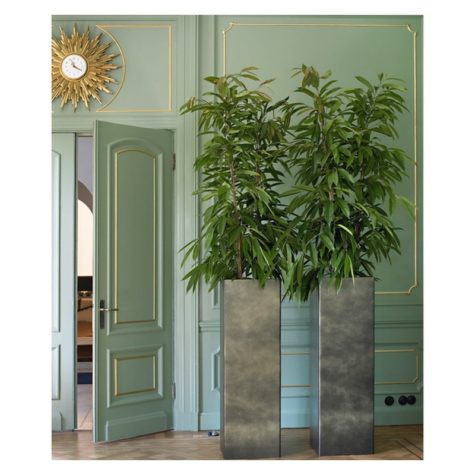 There are 3 types of Ficus Alii: the standard tree, the bush and the braids (several entwined trunks.)
There are 3 types of Ficus Alii: the standard tree, the bush and the braids (several entwined trunks.)
Boston Fern
- Scientific Name: Nephrolepis Exaltata “Bostoniensis”
- Removes: Most pollutants, especially formaldehyde.
- Benefits: Beautiful and lush, a favorite for any home or office.
It does require attention in order to thrive.
Peace Lily
- Scientific Name: Spathiphyllum sp.
- Removes: Alcohols and acetone, Trichloroethylene, Benzene and Formaldehyde.
- Benefits: Beautiful plant with gentle white flowers, easy to care for.
Strong and peaceful energy.
Lucky Bamboo
The lucky bamboo is one of the most popular feng shui cures for home or office. You can see quite a few types of feng shui lucky bamboo in most floral shops nowadays. However, the lucky bamboo in feng shui applications is often one of the most neglected feng shui cures, too.
I have seen countless of feng shui “lucky” bamboo plants that are struggling to survive, have a poor neglected look, and the only luck in them is the “lucky to be alive” factor!
Even though easy to care for and a very tolerant plant, the feng shui bamboo still needs your love and attention, as it likes to look good, just like you do. Do not be afraid to touch your lucky bamboo and take good care of it.
Ultimately, the feng shui lucky bamboo is considered lucky because of its peaceful vitality and strong growth, so it is best to learn to take really good care of it, just like you take care of all your other plants.
- So why is the feng shui lucky bamboo considered lucky?
Bamboo in itself is an amazing plant that brings a very peaceful and wise energy into your home. It teaches the ultimate wisdom: how to be flexible and hollow (open) on the inside so that the spirit can freely flow and heal your being.
If you are lucky enough to have bamboo growing in your garden, you know how soothing, almost transcendental, the sound of it is. The same is true for bamboo feng shui wind chimes, as well as the energy of bamboo floors.
Generally, here is why this specific feng shui cure is considered lucky; this will help you see if the feng shui lucky bamboo you bought at the corner store fits into this category.
A little indoor bamboo plant is considered lucky in feng shui when it combines/represents all five feng shui elements, as these elements are considered to be the foundation of a harmonious universe.
The five elements in feng shui are Water, Wood, Fire, Earth and Metal. Here’s how the feng shui elements are expressed in a lucky bamboo feng shui cure:
- WOOD: the bamboo plant expresses the feng shui Wood element (all plants do).
- EARTH: the rocks that create the foundation of growth for the lucky bamboo represent the Earth element.
- WATER: the water the bamboo needs for its vibrant growth is obviously representing the Water element.
- FIRE: the feng shui lucky bamboo plants usually have a red ribbon tied to them (red color is the expression of the Fire element).
- METAL: the glass pots that most lucky bamboo plants come with represent the Metal element. If your feng shui lucky bamboo is planted in a ceramic pot, it will usually have either a metal coin (Chinese coins for good luck), or a metal figurine, such as the Laughing Buddha.
The number of stalks in the lucky bamboo as a feng shui cure has a specific meaning that is taken into consideration when placing the lucky bamboo plant for good feng shui. You can sure have as many stalks as you feel will look good in your space, but generally, there are some guidelines to follow when you want to use the power of numbers for good feng shui.
Here are the most popular numbers of lucky bamboo stalks:
- 2 for Love and Marriage
- 3 for Happiness
- 5 for Health
- 8 for Wealth and Abundance
- 9 for Good Fortune.
Where should you place your feng shui lucky bamboo?
The best feng shui placement of your lucky bamboo plant is in your Wealth and Money or Health and Family bagua areas. If you are working with the classical feng shui bagua, these are the Southeast and East feng shui areas of your home.
Crystals
Crystals are the absolute darlings of feng shui, and I mean the natural rock crystals, untreated and unfaceted. There is such a variety of crystals out there, many of them really affordable; all waiting to adorn your living room.
Natural crystals bring the grounding energy of the earth feng shui element, much needed with our modern lifestyle.
Family Photos
Displaying happy family photos is great feng shui for your living room. It creates happy, warming energy that spreads throughout the home and uplifts your mood on occasional sad or stressful days. East area of your room is the best spot to display family photos but anywhere in your living room is still excellent feng shui.
Buddha
The serene and peaceful presence of Buddha can grace your home with more peace and real, meaningful moments. There are many Buddhas – from Kwan Yin to the Medicine Buddha, from White Tara to the Laughing Buddha.
There are also many specific Buddha mudras you can choose for your living room decor.
Fire and Passion
Fire is the element of passion, excitement, joy, warmth and love. It makes it easier to connect with your loved ones and truly enjoy their presence. A good and balanced fire feng shui element also helps you be genuinely present in this moment instead of being stuck in what happened a couple hours ago (or worrying about an imaginary future).
Be sure you find your own expressions of the fire feng shui element for your living room – be it with wall art, pillows, and throws or a beautiful rug.
- Candles
Candles purify the energy of negative residues, as well as make any room more calm and peaceful. They also bring a quiet sense of romance and joy, so be sure to grace your living room with a few candles in beautiful candleholders. Of course, candles are also the expression of the fire feng shui element – the element that many of us need to keep and nourish in our relationships with others (and ourselves, too).
By fire energy I mean a solid, nurturing, warm, life-giving fire energy – not the destructive, hollow and angry one. There is a fine balance with all your feng shui decor solutions – you just have to play and experiment until you find the right balance for your living room and for your family.
Other considerations
- Should be visible as soon as entering into the door.
The living room should be visible as soon as entering into the door. According to Feng Shui knowledge, if the living room is behind the bedroom or kitchen, your life will have no privacy, leading to digression and mistakes in work or business.
- Should be in the center of the house.
As a place for the whole family, the living room should be in the center of the house. If a bedroom is transformed from part of a spacious living room, the living room will be the worst one.
- Layout should be rectangle or square.
The overall layout of the living room should be a rectangle or a square rather than the irregular or polygonal spatial pattern. The square living room will improve your luck in terms of both blessing and wealth, and also make the infinite positive energy staying in the home.
- Wealth Direction
You should pay special attention to the wealth direction which is generally at the oblique 45℃ position facing the living room as soon as you enter into the door. The wealth direction should be tranquil and avoid a water dispenser, audio equipment and other shaking items, or your will have your wealth affected and suffer from financial loss.
- Furniture Placement
The furniture should be placed properly. According to Feng Shui knowledge, the storage cabinet in the living room should cling to the wall and the sofa should face the door or TV, and never have its back to the door.
If the sofa backs the door, your interpersonal relationship will be disharmonious and you may easily encounter villains or have disputes with others.
- Avoid Beamed Ceilings
If the living room has a spanning beam, the ceiling should be covered with decorations, or the beam will bring you the sense of pressure and bad luck and make you nervous.
Here’s a nice fix:
- Floor should be even.
The living room floor shall not be uneven; instead, it shall be flat and avoid too many too many stairs or the sense of high and low. Some living rooms adopt the design of high and low partition to make the obvious change of high and low floor. However, this kind of design makes the family luck full of ups and downs.
- Living Room and Doors
If you are sitting in the living room can see the doors of all rooms, the privacy will be poor and you may feel open to the external world.
- Decoration
The living room should be decorated with the circular-shaped decorations since it is a family and friends gathering place requiring the lively and harmonious atmosphere. The circle is a symbol of Yang and dynamic, so the circular-shaped lighting, ceiling and decorations can create the warm and lively atmosphere.
But wait, there’s more!
Here’s a small gallery of living rooms that I didn’t find a place for in the post. Enjoy!
Sources:
Bedroom Feng Shui
The bedroom is an obvious respite from a tiresome world for many reasons: It provides comfort, warmth and familiarity in the face of great stress, hard work and exhaustion.
While it’s certainly wonderful to have a room full of the furniture of your dreams, it’s even more important to address the feng shui characteristics of your bedroom. As pleasing as material items are, the placement of certain items, the colors and even the materials can make an enormous difference in the state of your life affairs.
Bedroom arrangements in feng shui embrace the primary function of your bedroom, which is to serve such activities as sleep, relaxation and sex. Feng shui principles incorporate the right elements and furniture placement to enhance your overall health and well being. These principles ensure the continued flow of chi energy through the balance of yin (female) and yang (male) energies.
Feng shui in the bedroom can bring new and unexpected harmony to life. The benefits range from the financial to the professional to the romantic.
The idea of a perfect feng shui bedroom may bring different images to different people, but they will all have one thing in common – pleasure and dreaming as the keywords. In a good feng shui bedroom, every item will reflect the clear intent for love, healing, and relaxation.
What do you think?
I collected a wide variety of beautiful images of some spectacular bedrooms. Beautiful as they are, most of them would definitely NOT give me a good nights sleep, or a feeling of security, safety and complete restfulness. Here they are. What do you think?
And now that I’ve completed the post and read all the feng shui information, I have a pretty pretty good idea as to why they don’t “feel” quite right for a cozy and comfortable night’s sleep.
What to Do
Your bed should be placed in the “command” position or far away from and unaligned with the door. The door should be visible from the bed. This placement encourages the natural flow of chi, which in turn promotes restfulness, sleep and motivation; all of which are conducive to a successful professional life.
Early to bed, early to rise and to enjoy the sunlight. Natural light is the ideal way to start the day, not only because it releases such positive energy, but also because it raises serotonin levels, which can make your workday more productive.
What Not to Do
Don’t place clutter of any kind, especially work-related items,underneath the bed. Any type of mess has its own unique, negative energy that can disturb everything from sleep to health.
Don’t place a desk in the bedroom. If this is unavoidable, then don’t pile the desk with paperwork, bills and other work or finance related items. If these items must be in the bedroom, use a fabric or a folding screen to separate the area from the rest of your bedroom, which should be your resting area.
3 Steps To A Good Feng Shui Bedroom
So you’ve heard a lot about creating good feng shui in your bedroom and you know that it is so very important to have good energy there, right? You might also be a bit skeptical about feng shui, or maybe intrigued but convinced that it’s impossible to create good feng shui in your bedroom.
Here come 3 easy steps (read: rules) to help you get an easy grasp on good bedroom feng shui and even enjoy it in your bedroom on a constant basis!
- Step 1 – Create A Good Energy Foundation
What does a good feng shui energy foundation mean? It is basically a set of building blocks on which all other good things can be created. There are several factors that make a good feng shui energy foundation in your bedroom.
- The first one is the abundance of fresh, clean air.
- Second is the quality of natural light.
- Followed by the “no clutter” rule and the “no electrical equipment” rule.
These are firm rules like “no computer in the bedroom” or “no cell phone close to the bed”, and definitely “no TV or exercise equipment in the bedroom”.
Why? Mainly because they create high EMFs for which you pay dearly (often without understanding why you are not feeling well). They also slowly but surely destroy all the goodness you want to have in your most intimate space – the energy of genuine love, deep connection and sexual healing.
Basics like keeping the window open for a fresh air flow, letting natural light in, not storing any clutter in your bedroom closets or under the bed have to become just that: basics that you do not think about, argue or make it hard to implement.
- Step 2 – Put Your Bed In The Best Spot
Find the best furniture layout with your bed in the so-called commanding position and/or facing one of your lucky feng shui directions.
Have access to your bed from both sides and have (no matter how small) nightstands on both sides of bed.
Be mindful not to have a mirror facing your bed or any sharp angles pointing at you while you sleep. Understand what makes a good feng shui bedroom layout and see if yours is close to having good feng shui.
If you feel like moving your furniture from time to time, this is perfectly fine, just be sure you know the best spots for your major furniture pieces. A good placement of furniture – especially your bed – in your bedroom will allow for a stable and harmonious flow of energy which every room needs (and more so a bed-room!)
- Step 3 – Beautiful Color and Decor
Beauty is like food, energy-wise. An ugly space can literally poison your energy, while a beautiful, harmonious one will elevate, nourish and heal you.
Do your best to create and maintain a sense of beauty in your bedroom and have only items that you love to be surrounded with.
Follow basic feng shui colour guidelines, such as the one that recommends earth colour tones as best colours for the bedroom (look at a wide range of colours: from deep chocolate browns to light sand colours), and be sure to add sensual, romantic touches in a fire feng shui element colour (red, pink, magenta, lavender or coral orange colours.)
Bring only art that makes you happy and inspired, use comfortable natural bedding and have either candles or dimmer switches to keep the energy soft and nourishing.
Your bedroom is the outward expression of your love for yourself, so start loving yourself more as love leads to all things good, no matter you are sharing your bedroom with a loved one or only with yourself.
Ultimately, love does not come from outside, but is rather an expression of your own ability to feel love. So express it more, as well as nourish and strengthen this expression with good feng shui in your space.
Good luck in creating an excellent feng shui bedroom!
To Encourage Career Growth
While the right design tips will go a long way in positively influencing your professional life, several elements and objects in particular encourage growth in this area. They include:
- Water:
Water has a powerful effect on career growth in feng shui. Its dual energy and serenity mirrors the very qualities necessary for a successful professional path. Despite that, its presence in the bedroom is generally frowned upon since it generates too much yin energy. Place a small table fountain or an elegant piece of artwork depicting water in your home office or North sector of your home, but never in the bedroom.
- Mirrors:
Mirrors are equally beneficial as they relate to careers and feng shui. However, they should not directly face the bed since they can drain your energy. Mirrors are also associated with the water element, which shouldn’t be placed in a bedroom. According feng shui guru Lillian Too, the purpose of mirrors is to reflect negative chi energy away from you.
- Colors:
Yellow is a stimulating color that easily keeps your brain focused, while green is exceptionally calming. Colors like red, purple and gold are heavily associated with wealth. However, these colors are dramatic and deep, and hence should not be used in abundance. Instead, use them as creative accent pieces for your bedroom’s gentle color scheme. Lampshades, candles and small trinkets are excellent items to touch with these brilliant hues.
- Other Considerations:
The key to success in both finance and career is to increase the amount of positive energy in your life. This can only be accomplished if your bed is stable and supported by a strong headboard to protect your personal chi as you sleep.
Placement of The Bed
While the aesthetic elements are the first things generally noticed in a bedroom, the most important feature is truly the position of the bed. As the largest piece of furniture in the room and the place where you rest, the bed is particularly important. The wrong placement can jeopardize your health.
- The ideal placement for your bed is diagonally across from the door. This placement gives you privacy and also allows you to see anyone entering your bedroom.
- Never place your bed directly across from the door. This placement puts you in a sleeping position where your feet point toward the door. This is known as the coffin position and is the worst possible position since it’s considered the position of death and is very inauspicious.
- Avoid placing your bed in front of or underneath a window since chi energy enters and leaves a room through the windows. If your bed is in this pathway, the chi energy will flow over you as you sleep, causing a restless sleep.
- Don’t place the mattress directly on the floor. This is very inauspicious since you’re in the main pathway of the chi energy.
- Floating beds look very appealing, but lack the feeling of support and safety. Choose bed frames with proper support so that you can feel more relaxed.
- Having a headboard against the wall gives you a subtle sense of security that’ll help you fall asleep easier. This has to do with our survival instincts and sense of security.
- Never place your bed on a wall shared by the bathroom, or kitchen.
Note: If the size or configuration of your room, especially window location, prevents you from following feng shui guidelines, then you can apply corrective feng shui cures and remedies.
One easy solution to inauspicious wall placements that cannot be avoided is to use a thick headboard for your bed, which acts as a buffer, and can minimize wanted noise that disturbs your sleep.
Additional Bedroom Furniture
Everything you place in your bedroom has a profound effect on the flow of chi energy. You want to ensure auspicious energy flows easily between the bedroom door and windows. By keeping this natural pathway free of clutter and large pieces of furniture, such as chairs and armoires, you’ll prevent stagnant chi and enhance all activities that take place inside your bedroom.
The bedroom is the most yin place in a home. Think of a comfy cave: dark, cozy, small. There should be a sense of enclosure, and freedom to move within it. Keeping that goal in mind, there are three main rules for your bedroom, which advise against:
- Placements that block natural pathways and doorways.
- Cluttering the bedroom with too much furniture.
- Placements that create poison arrows directed toward the bed.
Poison arrows are created whenever you place an armoire or dresser so that the sharp edge of the corner is angled directly at the bed.
If you can’t avoid placing furniture so that it create poison arrows, then you can remedy this by suspending a multi-faceted crystal ball from the ceiling so that it is between the poison arrow and the bed. Another solution is to use a runner for a a dresser to conceal and soften the corner edges.
Don’t place large furniture by your bed. Some people like putting large bookshelves right by the bed. It provides easy access to books for those who enjoy reading right before going to sleep.
Small bookshelves are fine. However, if you have bookshelves that are more than six feet (180 cm) tall, then you are better off without the bookshelf. The reason is that the large furniture can give you that invisible pressure that makes you feel oppressed. It’s similar to the feeling you get when you drive right next to a truck or when you’re standing right under a monumental structure.
You can place nightstands on either side of the bed; just be sure that the nightstand isn’t higher than the mattress, since this creates a poison arrow targeting the bed. Chairs and other pieces of furniture should also be set in the bedroom according to the same guidelines.
If your armoire doors have mirror insets, then you want to place it where it doesn’t reflect the bed. If this is unavoidable, then you need to cover the mirrors when sleeping.
Mirrors
Mirrors can be used in a bedroom, but with great discretion. There are placements you want to avoid such as placing a mirror directly across or over a bed. You simply don’t want to reflect the bed in a mirror. This invites a third party into your marriage or relationship and results in infidelity. Some practitioners believe that a mirror can also startle the soul when it steps from the body for its nightly astral travels.
If you must place your bed so you don’t have direct line of sight of the bedroom door, you can place a mirror so that you can see the door from the bed, just be sure not the mirror doesn’t reflect the bed.
Clutter
To create chi balance, you must first rid your bedroom of all clutter and work-related equipment. Dirt and dust create stagnant chi which can result in such things as illness, disharmony within your relationships and loss of wealth.
One of the biggest stress producers in most of our homes is… CLUTTER! Even if you consider yourself a hopeless clutterbug, give yourself the gift of creating a clear and clean sanctuary in your bedroom. Be ruthless!
Fresh Air
Open the windows often or use a good quality air-purifier to keep the air in your bedroom fresh and full of oxygen.
Be mindful of the quality of air in your bedroom. You cannot have good feng shui in your bedroom if the air you breathe in is stale and full of pollutants. Please note, though, that plants in the bedroom are not good feng shui unless your bedroom is fairly large and the plants are located far from the bed.
- Essential Oils
Essential oils can also help you purify the air in your bedroom, but be sure to choose actual essential oils (they have healing properties) vs fragrance oils (which are mostly toxic).
If you are new to the world of essential oils, you can first look into the basic properties of most popular essential oils and choose which ones you would like to use in your home. There are many essential oils that are easy to love and use, lavender is certainly the number one essential oil because of its versatility and wide array of healing properties.
Your bedroom, for example, will definitely benefit from soothing sensual scents of lavender, rose, ylang ylang, or jasmine, while a home office can improve its energy with a good dose of peppermint, clary sage, or lemongrass in the air. I love diffusing a mixture of eucalyptus, peppermint, and some citrus oils (tangerine, grapefruit or orange) in my office space, especially in colder season when I cannot have the windows wide open.
Once you have made your choice of pure essential oils for feng shui purposes, how do you actually use them?
Spraying an essential oil mix into the air is the easiest, quickest way to change the quality of energy around you. There is a variety of essential oil mists on the market – from love energy mists with soothing, sensual oils to travel jet lag mists to help strengthen your immune system.
If you want to make your own mix, all you need is a spray bottle, preferably glass. Next, fill the bottle with pure water and add several drops of essential oil. Shake it and test it, see if you like the scent, then maybe add a couple more drops.
The easy to follow guideline is 8-10 drops of your favorite essential oils to 8 oz water (I always tend to make it more concentrated, though, but it depends on the oils I am using). Experiment and find the right ratio for you. Making your own essential oils air spray is really easy, and you can just use it in your space as needed.
Desks and Work Spaces
Work and sleep don’t mix, so don’t place a desk in your bedroom. This is a poor idea for a feng shui optimized bedroom. For good health and rest, keep your work separate from this rest area.
If your bedroom must also double as a work space, then select furniture such as secretary or other cabinet style desk that can be closed and out of sight when not being used. If you live in a small space, you can try dividing your work area and your bed with a curtain.
Electronics and Television
Electronics are out, too. They contribute electrical currents to the room that can disrupt your sleep.
Most feng shui experts believe that all electronics should be banned from the bedroom. “I want to say a special word here about televisions. Get it out of the bedroom! You’re inviting strangers into your bedroom every time you turn the TV on, bringing that often harsh outer world into your private chamber. Perhaps more importantly, you are distracting yourselves from each other.”
In a practical world, televisions and laptops are often a necessary evil in your sacred bedroom space. It’s impossible to get away from technology, so a compromise solution is to place your TV in an armoire or other cabinet that can be closed when you’re finished watching TV for the night. Close your laptop when not being used and store inside a night stand or drawer. That way they are at least out of sight and your space while you rest.
Some say that TV has a similar effect as a mirror, however, most of us use LCD’s now, and I can hardly see any reflections from that. So I don’t think the mirror-effect applies anymore.
Though some claim that TV helps them sleep, the light and sound from the TV are actually causing us to stay awake longer than needed. The light from the TV is a form of artificial light that has the tendency to keep us awake by delaying the release of sleep-inducing hormone, melatonin. Further, whatever show or movie that you’re watching can also invoke strong emotions that’ll keep you awake longer than usual.
Some experts also mentioned that electronics in the bedroom, such as TV, brings electromagnetic field that can potentially harm us. I’m not sure how it affects our sleep, but I do know that strong electric currents create strong electromagnetic fields that can cause many health consequences, which is why you shouldn’t live close to power lines.
Color Matters
You can decorate the bedroom walls in color, texture, patterns and artwork. You can use feng shui compass directions to aid you in color selection. Choose colors that are restful. Soft colors like cream, peach, and pale pink are good choices. A soft yellow is considered particularly beneficial. Blues are nice.
The best feng shui bedroom colors for are considered the so-called “skin colors”, and we know the colors of human skin vary from pale white to rich chocolate brown. Choose colors within this range that will work best for your bedroom decor.
Avoid vibrant colors as the main theme of your bedroom. These colors include bright orange, pink, and yellow, and they are not suitable for your bed linens, curtains, and your bedroom walls.
Brighter colors tend to shout out at you, which can amplify your emotions and give you more energy. They also reflect more light, which is known to disrupt your biological clock and keep you awake. If you desire to use bright colors, you may need to dim down the bedroom lights to balance out the brightness. Another method is to use the bright colors as accents rather than the main theme.
Color is usually used to enhance a particular kind of energy (element), or to balance the yin/yang relationship. Some feng shui consultants work with color a lot, others not so much, saying that there are more powerful ways to affect the energies. Personally, I love color and use it a lot because it can have a tremendous impact on how we feel in a space.
Choosing Art For The Bedroom
Choose your bedroom art wisely, as images carry powerful energy. The best feng shui advice for choosing bedroom art is to choose images that you want to see happening in your life; images with nourishing, happy and beautiful energy. Unless you enjoy being sad and lonely, do not use sad and lonely images in your bedroom.
Best art for the bedroom are images related to the emotions of love, happy relationships, body healing, and intimacy.When you select wall art for your bedroom, choose subjects that are happy and restful. Nature images and themes in twos, such as two mandarin ducks, swans, or peach blossoms, promote romance and a relaxing atmosphere.
Humans have an amazing ability to recognize faces and familiar patterns. It is suggested that you remove animal heads (hunting trophies), pictures of faces, and other odd decors from the bedroom, because they can keep you distracted and awake.
Being surrounded with unpleasant images, such as pictures depicting violence or sorrow, can invoke strong emotions that can keep you awake at night. Worse, these emotions can carry over to your dream, making you wake up tired the next day.
If you have any pictures that invokes strong emotions, remove them. Pictures that soothe and relax you are more suitable for the bedroom.
The Ceiling
If you have a choice, avoid putting your bedroom in rooms with sloping roofs and or low ceilings. Low ceilings give an invisible pressure that makes most people feel uneasy. The same is true with slanted or sloped ceilings.
Though the feeling is very subtle, it does give you some sort of unease or feelings of being compressed (worse for claustrophobics), and those feelings carry over whenever you go to bed. This is especially true if you sleep on the side with the lower ceiling. An easy solution is to use a canopy bed. The four pillars that surround you while you sleep have the tendency to make you feel more “supported” from the downward pressure of the ceiling.
A canopy can also provide protection from other negative ceiling elements, like bright light fixtures, a bathroom on the floor directly above you, and a ceiling fan.
Avoid placing your bed directly beneath exposed beams. Just like the sloped or slanted ceilings, sleeping under a beam can also give you a subtle feeling of unease. Beams give you discomfort because it is similar to having a sharp object pointed at you. Also, they can give you a feeling that your space is being chopped up, which can be highly distracting.
The size and shape of the beam, as well as the height of the ceiling, can all play a role on how much discomfort you feel. The easy cure to this is to use a canopy bed. Or you can add a pair of flutes with red ribbons at an angle so the open end is pointing upwards along the overhead beam.
If you have anything hanging right above your bed, such as a chandelier, you will get that same feeling of discomfort because you may not feel 100% safe, and the effects are worse if it is hanging right above your head. The cure is to remove that furniture and place it somewhere else, like right above a dining table, where people will not reside right under it.
- Here’s a nice little gallery of cool canopy beds:
Lights and Lighting
Have several levels of lighting in your bedroom, or use a dimmer switch to adjust the energy accordingly. Good, appropriate lighting is very important, as light is our #1 nutrient and one of the strongest manifestation of energy.
Candles are the best feng shui bedroom lighting, as they not only clear the energy but also create a very intimate, warm and healing atmosphere. When buying candles, check to be sure your candles are toxin-free.
Avoid using harsh overhead lighting. Bright lights keep us awake and can disrupt our sleep pattern. It is true even with artificial lights and especially true for LED lights, which is known to create “light pollution” that causes sleepless nights (this is also the reason why it’s bad feng shui to sleep with your head under a window).
Try to use dim lights with a soothing color, as it can provide the atmosphere and environment as you are getting ready for bed.
Even a little bit of lighting can disrupt your sleep, simply because light can penetrate our eyelids and influence our biological clock.
You are in complete control of the lights in your bedroom. However, you have little or no control of the lights outside of your home. That is why you need blinds and curtains that can completely block out the light from the outside. If your current blinds or curtains have light shining through the cracks at night, it may be worthy to invest in double layered curtains to improve your sleep sleep.
Plants and Greenery
Remove the plants from the bedroom. Plants have an “evening complex” where they grow taller at night. The vibrant growth energy gives off quite the opposite energy you want when you’re asleep.
Also, most plants release more carbon dioxide than oxygen at night. Carbon dioxide has the ability to affect your sleep quality, and is another reason why plants should not be in your bedroom.
Cures and Elements
You can activate various areas in your life by placing feng shui elements and object in your bedroom. For example, you can activate your wealth area in the southeast sector of your bedroom by placing three metal Chinese coins tied together with red ribbon. Improve or enhance your marriage or relationship with a carved pair of rose quartz mandarin ducks on your nightstand.
Bedroom Location
The ideal location of your bedroom is far from any doors that open to the outside world. For this reason, it’s best if your bedrooms are located at the back end of the house, or or at the opposite end from the street.
The main reason is that bedrooms at the back-end are usually much more quiet. Your sleep is less likely to be disrupted from the sound and movement of anything that roams in front of the house, which includes both human and automobile traffic. Because of this, you will also enjoy higher levels of privacy.
If possible avoid placing your bedrooms at the top of the garage. When your bedroom is on top of a garage, your sleep can be disrupted by a variety of factors, including the smell of car exhaust, noise from garage door movements, insects that creeps into your bedroom, and warmer bedroom temperatures. If these four factors are non-existent, this bedroom location should be fine.
Avoid bedrooms under highly active areas. Active areas can include restrooms, entertainment rooms, or other areas where humans are active instead of sleeping peacefully. This usually does not apply to apartments and high-rises, because the bedroom is likely below another bedroom, and the flooring is usually thick and sound-proof.
However, single family homes are a different story. If your bedroom is right under a restroom, your sleep can be interrupted whenever someone flushes the toilet. Or, if you live right under a room of a teenager who has a different sleep schedule, their movements, music, or other activities can keep you awake all night.
Some say that sleeping above the kitchen stove brings bad energy that disturbs sleep and creates health issues.
Bigger Isn’t Better
Don’t oversize your bedroom. If your bedroom is too large, you may wake up tired even if you get a full eight hours of sleep. Some people feel find it hard to fully relax in extremely large bedrooms.
This could be our survival instincts at play. We are most vulnerable when we’re sleeping, and with a larger space, we may feel less in control of our surroundings, causing us to sleep on high alert rather than fully relaxed.
Open vs Closed
Keep all bedroom doors closed at night, be it the closet doors, the en-suite bathroom door or the bedroom door. This will allow for the best and most nourishing flow of energy to strengthen your health, as well as the health of your relationship.
Keeping your bedroom closet clean and organized will further create a sense of peace and calm in your bedroom. Understand the interaction between the doors and windows in your bedroom and be sure the energy is not escaping your bedroom, but rather nourishes and strengthens it.
- Close the window when you sleep
This is mainly true if you live in an urban area, or if the bedroom is facing the street or other potential sources of noise or outside odors. If you live in a rural environment, or if the bedroom is completely private and well protected, an open window might be just fine, providing fresh air and soothing night sounds and scents.
- Open the Window During the Day
After a full night’s sleep, your bedroom is filled with your own carbon dioxide. To refresh the air quality in your bedroom, make it a habit to open the window right after you wake up. This way, your bedroom will feel more nurturing during the night.
Carbon dioxide is known to adversely affect the quality of your sleep. So even if you live in a region with extreme cold or hot weather, try to keep your window fully open for at least a couple of hours during the day to recycle your bedroom’s air.
- Close your bathroom doors
Many homes have a bathroom attached to the master bedroom. If possible, it’s best to keep the door between them closed at night.
- Close the Bedroom Door
Closing the bedroom door increases your sense of privacy, especially if you live with family members. It can also provide you with a feeling of security, which can further relax your survival instincts to assist you with your sleep.
Closing the bedroom door also cancels out the noise from within your home. These sounds include the humming of the refrigerator or other home electronics, and the noise from your family members or roommates living with you.
Tips and Tricks
- A solid headboard will ensure you have a sound restive sleep since it serves as a wall to insulate you from the outside world.
- Don’t crowd your bedroom with items that don’t belong there.
- Keep clothing neatly in drawers and closets.
- Routinely clean underneath dressers and beds.
- Don’t store things underneath dressers or beds.
- Don’t use your bedroom as a storage area.
- Never place water features or paintings of water scenes in a bedroom. This provides too much yang energy and creates a restless sleep.
- Never place live plants in your bedroom since these stimulate and attract too much yang energy.
- Use subdued, indirect lighting, like that provided by table and floor lamps.
- Remedy any poison arrows created by sharp angles of furniture with multi-faceted crystals or rearrangement of furniture.
- Avoid open bookshelves; books create poison arrow effect. Remedy by adding either glass or wood doors.
But wait! There’s More!
Here is another collection of cool bedroom ideas:
Sources:
Dining Room Feng Shui
A feng shui dining room is one that arouses hunger, brings harmony, strengthens the bond among family members, attracts prosperity, enhances wealth and a whole lot more.
In feng shui, dining rooms are given a very high degree of importance and that’s because it’s “The Room” where a family is “supposed to” dine and spend a real quality time together.
I said “supposed to” because in most houses dining rooms are seldom used (for dining) and they – tend to – become “dumping rooms” for all sorts of things that can’t find a place elsewhere in the home; here’s a list of few – really few – items that are usually dumped in dining rooms:
- kid’s toys
- old cabinets
- seldom used travel bags
- laundry clothes
and the list goes on and on…
However, you must understand that piling all these items – that don’t actually belong – to the dining room has a very negative effect on feng shui of the dining room. In fact, piling clutter in any area of a home or office is bound to deteriorate feng shui for that area because they restrict the free flow of Qi energy in the house.
For good feng shui in the dining room:
- Make sure that the dining room is inviting, comfortable, hunger arousing and calm.
- Maintain balance of colors in dining room; don’t make it too bright or overly dull.
- Dining room must be well ventilated and it should receive plenty of sunlight.
- Hang a mirror in dining area such that it reflects the dining table; this’ll bring in more prosperity.
- You can provide a wash basin in North or East of dining area.
- Keep the dining room as near as possible to kitchen.
- Have kitchen and dining on the same floor.
- If your kitchen is really huge then utilize an area of the kitchen as dining area.
- If the dining room in your home is a part of living room (a common case nowadays) then put curtains or potted plants as a line of demarcation.
- Go for a square/rectangular or oval/circular dining table.
- Make sure that the dining table is of high quality wood.
- The dining table must be big enough to provide space for everyone.
- Keep the number of chairs even.
- Keep sitting arrangement such that no one’s back is towards a door or window as it causes a sense of insecurity.
- East facing is good for head of the family; other members can face North, East or West while dining.
- Be polite and gentle to family member while dining; be gentle and polite always.
- Be relaxed, calm, happy and stress-free while dining; in fact be this way always.
- Always keep something on the dining table; you can keep fruits on it; apples help develop friendship, pears are good to attract positive energy, peaches aid in good health and oranges symbolize richness and prosperity.
- If fruits aren’t your choice then you can keep flowers on dining table. Just make sure not to use dried flowers, they imply deterioration.
- Make sure to have meals with your family daily; however, if that’s not possible then at least have a meal together once a week.
- Images of mouthwatering and lip smacking dishes in dining room arouses hunger.
- Always thank God before you start eating.
Here’s What to Avoid:
- No toilet doors in front of dining table or dining room.
- Make sure that dining room door and house entrance doesn’t face each other.
- Make sure that the dining room doesn’t become a room of dining etiquette for anyone; else they’ll lose interest in eating.
- Never sit under a beam while eating.
- Please avoid TV and other electrical instruments in the dining room; this’ll make the family to spend some quality time together.
- Avoid low ceiling in dining room.
- Avoid negative paintings such as weeping girl, war, crime etc. in dining room; in fact avoid them everywhere.
- Avoid hanging clocks in dining room; they tend to create haste while eating.
- Never eat in dark.
- Avoid eating alone; that increases loneliness. Put on some soothing music if you’re alone.
- Avoid irregular shaped dining tables such as, diamond or hexagonal shaped ones.
- Avoid glass top dining tables as they’ll bring in nervous energy.
- Avoid dining tables that have cushions on top; go for hard top dining tables as they represent solid foundation.
- Never place the dining table touching a wall; it must be away from any wall so that everyone can sit comfortably.
- Avoid rocking chairs in dining room.
- Avoid facing south while eating.
- Don’t allow kids to sit in the South-West corner of dining table.
- Never use or even keep broken or chipped utensils or glass wares.
The Dining Room Table – Shapes and Sizes
There are two criteria to look at when choosing the best shape for your dining table.
- Best visual choice. What is your dining room asking for? What table shape will look and work there the best?
- Best bagua area match. If most shapes would work, then decide based on the feng shui bagua area of your dining room.
From a general feng shui perspective, a round or oval table is considered better than a square or a rectangle one. The reason for it being the flowing shape that contributes to a more even distribution of energy, so to speak. In simple terms, sitting at a round or oval table will make everyone feel more welcome, at ease and equal in their relating to each other.
However, the first criteria to look at is your dining room size and shape. If your space is asking for a square or rectangular shape and you insist on having a round table, you will not be creating a good feng shui dining room.
Good feng shui always starts by listening to your home, and then applying the best feng shui guidelines to it.
So, if you feel that a square or rectangle table would work better for the of your dining room, go for it because it is also good feng shui, just be sure to buy one that has rounded corners. Sharp corners are always best avoided as they create bad feng shui energy called Sha Chi.
Here are the best shapes for each bagua area of a dining room:
- East – Rectangular or Square
- Southeast – Rectangular or Square
- South – Rectangular
- Southwest – Square
- West – Square or Round
- Northwest – Square or Round
- North – Round
- Northeast – Square
- Center – Square
This selection is based on the play of the five feng shui elements and how they either support the energy in a specific bagua area or weaken it.
A couple more details to look at while selecting a good dining room table are as follows:
- The table should be in proportion to the room
- It is considered best to have an even number of chairs (unless you go for a round table).
- Best feng shui chairs are the ones with a solid back.
As the dining table is one of the most versatile and functional furniture pieces in your home, I would suggest taking your time and doing some good research. Ask where the table is made and who made it.
Buying locally, whenever possible; this is always a good idea and excellent feng shui, too. Invest in good quality wood and try to avoid a glass top dining table.
Dining Room Size for Chi Flow
The best feng shui dining room is spacious. There should be enough empty space to allow the chi energy to move about the room freely. Avoid blocking doorways, windows and the natural flow of traffic in and out of the room.
This free flowing chi energy will usher in abundance both in the health and wealth areas of your life. A minimum of 2.5 feet should be given around the table to allow guests to move their chair away from the table. If you can afford more space, all the better.
In traditional Chinese feng shui a dining room relates to wealth. In Chinese culture there is a straight correlation between the size of the dining room and wealth: the more people we can feed the wealthier we are!
Location and Feng Shui Design Aspects
The best location for the dining room is near the kitchen. This is a practical location as well as a feng shui one to maximize the benefit of chi energy.
Ideally, the dining room should be in the corner of your home. This location, like high-pitched ceilings, allows for the chi energy to collect and circulate in this space.
The most auspicious location of a dining room within a house is considered to be southeast and south. Not surprisingly these two directions relate to wealth and fame.
Dining Rooms Close to Front Doors
If your dining room is located too close the front door, try to separate it as much as possible. Keep the dining room door closed or use a decorative screen to block the front door from view. In feng shui, a dining room too close to the front door means chi energy can leave too easily and won’t fully enter the room.
Choosing and positioning the table
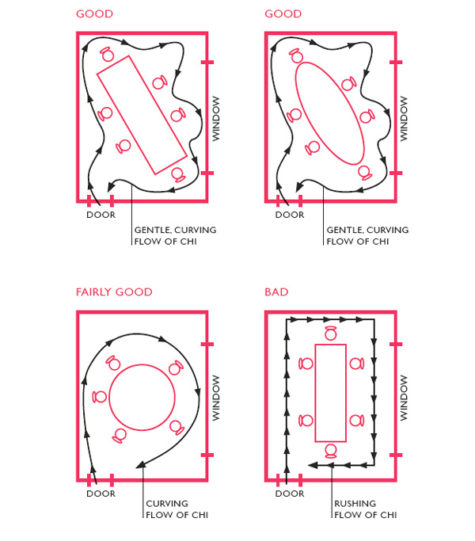 Your dining table should be large but fit comfortably in the room. Oval or round shapes are best, but if your table is rectangular, you can balance it with rounded shapes such as rugs in the rest of the room. It’s best to place the table at the center of the dining room and turn it at a slight angle in relation to the walls, so the chi will flow in a gentle, curving path around the room. If you put the table straight and parallel with the walls, the chi will be channeled in a straight line through the room or around the edges, and may get trapped in the corners.
Your dining table should be large but fit comfortably in the room. Oval or round shapes are best, but if your table is rectangular, you can balance it with rounded shapes such as rugs in the rest of the room. It’s best to place the table at the center of the dining room and turn it at a slight angle in relation to the walls, so the chi will flow in a gentle, curving path around the room. If you put the table straight and parallel with the walls, the chi will be channeled in a straight line through the room or around the edges, and may get trapped in the corners.
Seating arrangements
In feng shui, it’s good practice to seat the oldest family member or an important guest in the “honoured guest” position at the table. This is the seat furthest from the door, with solid walls behind it and offering a good view of the door and windows. If possible, place all the seats so that no one has his or her back to a door or large window, because this “weak” position may leave that person feeling insecure. This problem is especially likely with round tables.
Setting your table
In general, plain colours and simple shapes are best to promote the calming energy you need around the table. If you prefer a pattern, opt for one based on just one or two main colours. Vertical stripes are ideal because they symbolize uplifting energy. However, busy patterns splinter the chi. To get the most benefit from your tableware, keep items in good condition and discard any chipped plates, bowls or glasses.
Table displays
A rounded bowl filled with rounded fruit, in the centre of the table, is excellent feng shui; the more food you show, the more “richness of life” you possess. Many fruits have special significance: you could choose apples to boost friendship, pears for energy, peaches for health and oranges for richness. You can include other favourite fruits as well. Flowers are also a lovely decoration. Yellow ones are ideal to enhance communication. Silk, paper or plastic flowers are also fine. However, don’t use dried flowers because they represent decay and stagnation.
Lucky energy
The table and the area around it need to be “loaded with luck” (chuang ho hsing yun). Healthy, beautiful plants are a must in the dining room! They bring vitality, freshness and color., and nurture goodness in the chi. I especially like using larger plants with rounded leaves and flowers. Cut flower arrangements are fun to make and are also great in the dining room.
Keep electrical items, including TVs and stereos, out of the dining room; their energy is too yang. In addition, remove any clocks, because they are unwelcome reminders of the passing of time. A dining room should be “eternal” (yung yuan te).
The best material for a dining room table is wood. I do not recommend metal or glass tables since they are cold and do not hold energy.
Here’s an example of a beautiful but very cold dining room:
Lighting
Lighting needs to be soft and calming. Wall-mounted lights equipped with dimmer switches are a good idea, because you can alter the lighting levels to suit your mood or a special occasion.
- Use Lighting to Attract Yang Energy
In feng shui, the chi energy is comprised of the negative and positive energies of yin and yang respectively. The yin (female) chi energy is passive/restive while the yang (male) chi is active/energetic. Lights attract yang energy and you want to activate this dynamic energy for this room.
Recessed lighting is subtle and can also be used as direct lighting for wall art and paintings or simply placed on a dimmer switch for ambient lighting options. Torchiere floor and table lamps are great for uplighting to attract chi energy toward the ceiling and allow more energy to flow into the dining room.
A chandelier above the dining room table is the ideal choice of lighting. A crystal chandelier will activate the energy in the room and create an uplifting sparkling feeling. I love to dim the overhead light and use a lot of candles during family and guests gatherings. It always seems to slow down the time and have a magical, relaxing and mood enhancing effect.
Generate Abundance with Mirrors
One of the best kept secrets of a feng shui dining room is the use of mirrors. The mirror should be placed to reflect the dining room table top. This placement doubles the food (abundance, health and wealth) and is considered one of the most auspicious element in a dining room design. However, a mirror should never reflect a kitchen or bathroom or it will double bad energy from these areas.
A mirror will also soften the light. Choose one with a suitable frame for that sector, or with beveled edges.
Mirrors are also great to use in the dining room if they can be hung in a way that reflects the outside. Try to position a mirror to reflect a garden, tree, or anything special to you from outside. You can also use the mirror to reflect a beautiful piece of art or a flower arrangement from the center piece on a dining room table.
- Mirror Height
Be careful not to hang the mirror so that it cuts off the heads of dinner guests’ reflections. This placement is considered inauspicious and brings ill health.
- Floor Mirrors
A floor mirror that extends well beyond chair height is a good choice. Just be sure that it isn’t placed opposite the dining room door or reflects the front door, kitchen or bathroom.
If you’re brave and want to add walls of mirrors, don’t use mirror tiles. Instead opt for full length large mirrors.
- Mirror Placements to Avoid
A mirror opposite a front door will bounce all chi entering your home right out the door, never allowing it to enter your home. In feng shui, if the mirror is opposite the door leading into the dining room, chi energy will never reach inside the room and can mean inauspicious results for family health and wealth.
The water of life
Clean, flowing water symbolizes luck, energy, health and “richness of life”. A small water feature or aquarium will benefit most locations. Alternatively, you could have one or two water symbols, such as shells, or a picture of flowing water.
If you have a southeastern wall in your dining room you can use water to enhance your wealth by placing a wall fountain or a fish tank. However, don’t use water items in the northeast, south or southwest; they clash with the chi of these sectors.
Goldfish signify luck, and are ideal for an aquarium. Three or nine are the most beneficial numbers; include one black fish to represent protection. If you like tropical fish, have golden platys and a black mollie.
Good Feng Shui colors for dining room
Dining room wall colors should be warm, earthy and have a nourishing vibe. For example, yellow stimulates conversation and digestion, red stimulates appetite, and sage green brings freshness and vitality. A cold blue color would is the least appropriate for the dining room walls and décor.
- Here is a collection of colorful dining room ideas:
You can add colors to jazz up your dining room decorating with fabrics, bright tableware, crystal glasses and accessories. Napkins and table cloth designs and colors should be selected in accordance with the dining room table position. Feng Shui room decorating guide suggests blue color for the table in the northern zone of the dining room. Greens are Feng Shui colors for the eastern parts of the room and the house.
For large areas such as walls, single colors are best. You can always use ornaments and pictures, or a display area with items that suit the location, to add splashes of brighter colors. Try to avoid having highly patterned wallpaper, which can splinter the chi. If you already have this problem, remedy it by putting up abstract pictures in strong, plain colors appropriate for the location.
If you prefer neutral colors or like stylish dark or elegant white table cloth, try to add more Feng Shui colors with napkins, flowers, candles, napkin rings, tableware and vases to spice up your dining room decorating design.
I love the way the chairs and the rug in the above photo provide a nice burst of color while the rest of the dining area is pleasantly neutral.
There is another important Feng Shui room decorating detail, – coasters should correspond to the shape of the table in Feng Shui home. If you have a round dining room table, use round coasters and get oval for the oval dining room table, and so on.
One of the most important and easy to follow Feng Shui tips for dining room decorating: never use cracked or chipped plates and glasses. Ancient Feng-Shui teachers say that it brings troubles into the house. Also they suggest to serve glasses with transparent liquids for dinner. Shiny glasses make attractive table decoration and can play the role of individual Feng Shui crystals that stimulate the positive energy flow and attract wealth.
Dining room usage:
Ideally, the dining room should be used often and free of clutter. You may want to say goodbye to those projects and piles of papers that have been residing on a dining room table for several months.. If you don’t use the room and it’s cluttered, the energy stagnates which can cause stagnation in your finances.
Art in the dining room:
Choose art for your dining room that gives you a feeling of wealth and abundance. It’s personal but some examples that work for me are landscapes, seascapes, fruit or flowers. Your choice of art should also reflect the elements needed to enhance wealth in the particular space.
Pictures that give you feelings of pleasure and abundance will also help; good subjects include bright flowers, rounded fruit and sunny landscapes.
Sources:
Colorizing the Kitchen
Home decor is often viewed as simply a matter of aesthetics — what looks attractive. But proponents of color psychology believe that the colors you use to decorate your home can have a profound effect on the emotional well-being of you and your family.
“Color is a universal, nonverbal language, and we all intuitively know how to speak it,” says Leslie Harrington, a color consultant in Old Greenwich, Conn. and a noted expert on the use of color in residential and industrial decor. “What color you paint your walls isn’t just a matter of aesthetics. It’s a tool that can be leveraged to affect emotions and behavior.”
Color consultants say that if you have fond memories of spending time in the kitchen when you were a kid, it might make sense to recreate the color scheme in your grown-up kitchen. “If you grew up in a blue-and-white kitchen and have great memories, blue and white may be the best colors for you and your family,” says Smith.
If there’s no particular paint scheme you remember fondly, reds and yellows can be great colors in the kitchen as well as in the living room and foyer. But watch out if you’re watching your weight: in addition to stimulating conversation, color consultants say that red may prompt you to eat more, if only subtly. “If you’re on a diet, you might want to keep red out of the kitchen,” Harrington says, adding that the restaurant industry has long recognized the appetite-stimulating power of red decor.
The Best Paint Colors for Every Type of Kitchen
Painting your kitchen walls is one of the quickest, and easiest ways to re-do a kitchen. Before you rush out and buy gallons of paint, think carefully about what your dream kitchen looks like. Experts agree that it’s not just the color on the walls that determine how a kitchen looks and feels. How the wall paint color relates to the cabinetry, countertops, tiles, molding, appliances, lighting and flooring is very important.
Before you buy paint, test sample swatches on your walls and observe how the colors look at various times during the day and evening. Bring all your color influencers into the room so you can see how the paint looks with all the various elements.
Paint Color Basics
- Tip #1: Colors can change
Keep in mind that natural sunlight in the kitchen will change in intensity throughout the day. Morning light appears differently than evening light, and shadows can affect the color perception. Color is essentially light – how we perceive a color depends greatly on how light is reflecting off of that color. There is a term used to describe this color-changing experience: illuminant metameric failure. It simply means that two colors may look similar in one light condition but might not match in another. So understanding the light patterns in your kitchen, and knowing what other colors will be going into the kitchen, is incredibly important.
- Tip #2: Select your paint color at home
Don’t choose a paint color while standing in the paint store aisle. Bring home actual paint samples (many brands offer small sample jars) that you can apply to your walls. Paint these swatches next to cabinetry, flooring, countertops and any fabrics you plan on using in the space. Observe how the paint changes during the day and notice if any of your other kitchen materials are affected by light hitting the paint and reflecting onto the surface. For example, a strong red wall color may, at certain times of the day, reflect a pink hue onto white cabinetry or flooring.
- Tip #3: Warm colors work
There’s a reason we see a lot of warm, earthy tones in the kitchen. Kitchens harken back the days of open fires and slow roasted foods. Studies have shown that our appetites increase when we see red or orange colors. Although warm hues may be a popular choice for kitchens, it doesn’t mean you have to ignore blues and greens. Pair cool tones with warm neutrals like a warm gray or warm orange. You’ll be surprised how mixing the palette can create the kitchen of your dreams.
- Tip #4: Paint isn’t just for walls
Don’t forget that paint can be used on a variety of kitchen elements: cabinets, tables, chairs and other decorative objects. If your favorite paint color won’t work on the walls, try using it on a piece of furniture instead. Vintage pieces or new pieces can be painted (or spray painted). Test the underside or backside first to make sure you’ve selected the right type of paint for your project.
Best Colors For:
- Northern Exposure:
Northern light is cool, indirect, and even in appearance, making it the preferred light of artists and painters. Light from northern exposure won’t shift as much throughout the day, so expect a more even color tone in the room. The cooler sunrays will enhance cooler colors like blues and greens. Even cool tones of white will look good in northern light.
- Southern Exposure:
Southern light is stronger, more direct and tends to shift throughout the day. This might make your paint colors look very different at different times. You might notice that the strong sunlight makes paint colors reflect onto nearby surfaces. Kitchens with a southern exposure can do well with all walls being painted with the same color but keep in mind that during the day, each wall might appear to be a different shade. As the warm light will draw out warmth in the color, choose earthy colors.
- Eastern Exposure:
An eastern exposure kitchen will have strong sunlight first thing in the morning and lots of shade in the afternoon. Expect shadowing throughout the day as the sun moves across the sky. You can play up the effect of the sun by having a kitchen with contrasting colors. Think light cabinets and darker walls.
- Western Exposure:
Kitchens facing west will have strong sunlight in the afternoon and into the early evening. Dark colors will help absorb excessive light (and heat). Combine strong cabinet colors with a lighter tone like Ivory Brown. Light cabinets might do well with an offset color.
- No Windows:
A windowless kitchen will need to rely on artificial light. The best kitchen will have a combination of task lighting, overhead light and ambient light and the types of bulbs you use will greatly influence the type of light. Incandescent and halogen bulbs cast warmer, more yellow, tones. These bulbs will bring out warmer hues and cast a warm glow in the room. Fluorescent or cooler bulbs will cast a blue or green hue into the space. Try a neutral blue.
- Tiny Kitchen:
You don’t have to steer away from dark colors in a small kitchen. In fact, having a mix of contrasting colors can help the kitchen feel larger. Depending on your cabinet color, a strong paint like Rapture (4001-6B) has enough blue and red, as well as gray, to make it work with a variety of other colors. Adding rows of shelving and utilizing the kitchen’s vertical space can help break up the paint while maximizing storage.
- Open Floor Plan:
Open kitchens, with nearby dining rooms or family rooms, will need to be color-conscious when it comes to walls. Not only will your paint color need to match the kitchen elements, you’ll want to make sure that it coordinates with the other rooms as well. When selecting a color, try a gray-infused neutral that will go with a variety of color palettes.
- Lots Of Wood Cabinets:
If you have a lot of wood cabinetry in your kitchen you’ll want to be smart about your color selection. Do you want the cabinetry to disappear? Try a paint color that is a shade or two lighter than the cabinets. Do you want to compliment the wood and show it off? Find a paint color from a different palette that has complimentary tones.
- Outdated Countertops:
If all you can afford to do is repaint your walls, don’t worry. Paint can help downplay or distract from any unattractive features in the kitchen. Colors that dominate, or play up your favorite color, will do well. Consider painting three of the walls the same color as the cabinets (to hide them) and use the fourth wall as a strong accent color.
- Stainless Steel Appliances:
Stainless steel appliances have a cool, but gray, appearance, making them a good neutral for the kitchen. However, kitchens with too much stainless steel in the kitchen run the risk of looking cold and utilitarian. Offset the cold by introducing a warm color.
- Black Appliances:
Black appliances, like stainless steel, can look cold and dark. In some kitchens they may appear like black holes within the space. So balancing these strong elements is key for the kitchen. Depending upon the cabinet colors, a warm brown can create a sophisticated look next to black.
- If You Rent:
The best reason for using a neutral paint color on the wall of a rental is that it will be much easier to paint over once you move out. But neutrals don’t have to be boring. If you prefer cool tones, a gray-blue color will work with nearly any color scheme. Warm neutrals will also work well.
- If You Have A Dark Backsplash:
Do you want your backsplash to stand out or disappear? If you want it to stand out, then choose a much lighter color. Some black backsplashes can pair well with similar dark colors.
- If You Have A Light Backsplash:
Light backsplashes, like white or cream, can work well with a variety of paint colors. A bright chalk white will really show off the veining in white marble, for example. Sophisticated grays can also be a great compliment to light colors. Be careful about really dark colors next to white – the color may reflect onto the surface and change the color to one you don’t want.
- If Your Kitchen Also Functions As An Entryway:
If your kitchen serves as the main entry to the home, you’ll want to be less conscious of the color and more aware of the type of paint you use. Be sure you select a paint designed for heavy traffic and can easily wipe down, like a semi-gloss finish. Texture is important too. A smooth wall will show marks faster than a more textured one.
Idea Gallery
This is a gallery of a wide variety of kitchen styles and colors for ideas and inspiration:
Sources:
Feng Shui In The Bathroom
I found this great little article about How A Bathroom Flushes Prosperity & What You Can Do About It. And I thought it was time to take a peek into our bathrooms, especially now that we are making all that wonderfully luxurious and delicious bath stuff.
Bathrooms and toilets have a really bad reputation as far as feng shui is concerned. This is because bathrooms and toilets have the tendency to drain or flush away the positive “Qi” energy of your home.
Hence, if “Qi” enters the bathroom, n rest assured that chances are it’s being flushed right out of your house and we certainly don’t want that to happen.
Since each and every part or corner of a house is related to an aspect of life, a bathroom in one particular corner or part would affect that specific area of life, and without proper precautions, will drain the luck or benefits of that aspect of life.
A bathroom in the center of your home:
A bathroom in the center of the house is usually considered bad feng shui. As the center of the house is the heart of the space in feng shui, also called the yin-yang point, you want to have it open, light and with a sense of beauty to it. Take these steps to fill your center home bathroom with good feng shui:
- Keep the bathroom clean and tidy
- Add art, candles or flowers to the room
- Position several air-purifying plants in the bathroom
- Be aware of the light quality in the room and add a dimmer switch to adjust the light if the room has no window
A bathroom facing the front door:
The reason a bathroom door facing the main door is considered bad feng shui is simple: the Universal energy, or Chi, comes into the house through the front door. If your bathroom is facing the front door, most of the good energy will escape through the bathroom, leaving little or no good feng shui energy to nourish the house. Use these practical tips to improve the potentially bad feng shui situation of a bathroom door facing your front door.
- Keep the bathroom door closed
- Create good feng shui in the bathroom
- Create a focal point near the entry to direct energy away from the bathroom
- Focus on good feng shui in the entry area to enhance the energy in the area
A bathroom in the money area:
A bathroom in the feng shui money area can certainly be a challenge. The first thing to do when you are dealing with any challenging feng shui area is to commit to keeping it very clean and orderly. There can be no good feng shui without cleanliness and order, and this especially applies to a challenging bagua area. Next, you can explore feng shui money area decorating tips and see which ones are possible to apply in your home. They include:
- Decorate the area with lush green plants
- Use pleasant scents, fresh flowers, and candles in the area
- Decorate with images of natural landscapes
- Add a water feature or mirror for good feng shui
A bathroom facing the kitchen area:
Having the kitchen and the bathroom doors face each other is very bad feng shui. You don’t need to know much about feng shui to intuitively understand that this is not a good setup for a healthy home. When two doors are opposite each other, the feng shui energies flow faster in and out of the spaces guarded by the doors. The solution is to create as much division between the two areas as possible. Use these tips:
- Keep the bathroom door closed
- Keep the bathroom clean and filled with good feng shui energy
- Use a divider screen, bamboo curtain or a tall plant to define the boundary between the two rooms
- Use different paint on the kitchen door wall and the bathroom door wall to define the areas
- Create a focal point between the two areas
A bathroom above the bedroom area:
A bathroom located above the bedroom is not good feng shui. An important factor to consider in looking for feng shui cures is how busy the upstairs bathroom will be. Combat the bad feng shui using these tips:
- Limit the upstairs bathroom to occasional use, such as a guest bathroom
- Relocate the bed if it is situated directly beneath the bathroom
- Use very light colors in the upstairs bathroom
- Use design features on the bedroom ceiling such as crown molding or a decorative medallion around the ceiling light
A bathroom over your front door:
If you have a bathroom above your front door, it is very important to take care of its good feng shui, as the quality of energy that comes through the front door determines the quality of energy in the house. Use these tips to address the challenging feng shui of a bathroom over your front door:
- Keep the bathroom clean and tidy
- Strengthen the bathroom feng shui element and keep the door closed
- Create a separation between the two spaces with a bathroom rug or deep color floor
- Position a crystal chandelier in the main entry
- Strengthen the feng shui of the main entrance with tall vertical elements
A bathroom under the staircase:
Stairs have a bad reputation in feng shui, although it isn’t as bad as the reputations of bathrooms. If you have a bathroom located under a staircase, you’ll need to take steps to address this challenging feng shui situation. Both areas require special attention to enhancing good feng shui.
- Keep the stairs well lit and in good repair
- Use light colors for the staircase
- Position a crystal chandelier at the bottom of the staircase for good feng shui
- Move a bathroom located under a staircase if possible
- Keep the feng shui elements of the bathroom strong
- Keep the door to the bathroom closed at all times
- Decorate the bathroom in colors appropriate for its sector
A bathroom in the south-east sector:
Since South-East part of a house is related to wealth, a bathroom in this part will drain away all the money from the house; joblessness, sinking income, increasing debt and even bankruptcy are some effects of South-East bathroom
For bathrooms located in the South-East sector of your home, follow the basic recommendations for good feng shui in any bathroom. Keep the door and toilet lid closed and keep the bathroom clean and tidy. In addition, these tips can improve the feng shui of the room:
- Position several air-purifying plants in the bathroom
- Hang a mirror on the bathroom door (following feng shui mirror guidance)
- Use metallic colored gold, silver or gray rugs, preferably in circular shapes
- Hang a metallic wind chime in the area
- Burn candles in the room frequently
A bathroom in the north-west sector:
The North-West part of the house deals with helpful people and luck from heaven, a toilet in this part will drain away all those from you. No help from anyone, backstabbing, office politics, discredit etc. are some effects of North-West bathroom.
North-West sector bathrooms should follow the basic recommendations for good feng shui. Avoid clutter and don’t position a mirror to reflect the toilet seat. Replace any leaky faucets to prevent them from flushing away money. In addition:
- Use lush houseplants in the bathroom
- Put a container with water in the room
- Use a blue rug on the bathroom floor
- Never use metallic chimes in a North-West bathroom
General Rules For Good Feng Shui in the Bathroom
A bathroom has to be somewhere in the house. Doesn’t it? The answer to that it yes, but remember, it’s vital to minimize – or possibly eliminate – the draining or flushing of chi and the “good” from your life.
The main feng shui cure – and the most solid one – to neutralize the negative energy of a bathroom is to actually take good care of your bathroom. If you focus on creating good energy in your bathroom if you transform your bathroom into a beautiful spa – why would you need protection from its energy then?
There are any ways to create a bathroom that has a clear, fresh and nourishing energy, you just have to put some time and effort into creating good energy, and then maintaining it.
Here is a list of general bathroom tips:
- Always keep the bathroom door closed.
- Make sure to keep the toilet lid closed.
- Replace any torn curtains with new ones.
- Keep the bathroom clean, fresh and airy.
- Use a good air freshener.
- Make sure that the bathroom receives ample sunlight and fresh air.
- Keep windows, ventilators and doors of bathroom clean.
- Get the best essential aromatic oils for a relaxed bath.
If there’s a bathroom in North-East or South-West then;
- Hang a metallic wind chime in the bathroom.
- Make sure that there are no Chinese symbols on the chime.
- Make sure that no one passes or sits under the wind chime.
- Place metallic colored rugs such as gold, silver or grey; circular shaped ones must be preferred.
If there’s a bathroom in South then;
- Hang a crystal ball in the window of the bathroom; the rainbow lights from the crystal will reduce the bad fire energy.
- Make sure to cleanse the crystal ball as it’s going to absorb negative energy.
- Alternatively, you can also use a crystal geode which is a rock with hollow center.
- lace square shaped skin colored rug; you can also opt for yellow, pink or chocolate brown colored ones.
If there’s a bathroom in North then;
- Place some lush green houseplants in the bathroom.
- Put a square shaped rug in shades of green.
If there’s a bathroom in East or South-East then;
- Place glitter lamps in the bathroom and make sure to turn them on for around 2-3 hours daily.
- If glitter lamps aren’t your thing then you can light candles in the bathroom.
- Triangular rugs in shades of red are best for such a bathroom.
If there’s a bathroom in West or North-West then;
- Just place an urn with water in the bathroom.
- Place blue shaded rug; if possible, get a wavy shaped one.
What to Avoid
- Avoid clutter in the bathroom; in fact avoid it everywhere.
- Avoid mirrors reflecting toilet seats.
- Avoid leaking taps and faucets; replace them immediately else they’ll flush away the money.
- Replace broken items, such as, soap dispensers, shampoo bottles etc.
- Don’t keep old and worn-out toothbrushes in bathroom.
- Avoid a bathroom or toilet at the center of home.
- Avoid bathroom door facing bedroom, kitchen or dining room.
- Avoid locating a bathroom adjacent or near to house entrance.
- Never have a bathroom above kitchen or main door.
- Avoid locating a bathroom or toilet under staircases.
- Never place metallic wind chimes in North, North-West or West bathroom.
- Never try to place metallic things in the South-East bathroom; it’ll drain away all the money from house.
Mirrors and bathroom doors:
The reason mirrors are sometimes recommended in feng shui for the bathroom door is because a mirror can make a wall or a door energetically disappear, so to speak.
A mirror also pushes the energy back; this is why, for example, it is always recommended to avoid a mirror facing the main door.
A mirror outside the bathroom door is sometimes used in feng shui as the mirror pushes the energy away from entering the bathroom, thus the energy is prevented from going down the drain. Bathrooms have a very bad reputation in feng shui, so a mirror on the bathroom door became a popular feng shui cure for it.
You have to decide for yourself if a mirror on the bathroom door is something you would like in your home decor scheme. And if it makes sense to you.
If you do love mirrors, the best place to have them is not on the bathroom door, but actually in the bathroom.
Mirrors bring the feng shui energy of the water element, and this is excellent for any bathroom as it cleanses – energetically speaking – and refreshes the stagnant and stale energy. Busy bathrooms create a lot of low or challenging energy very quickly, so instead of trying to pretend that there is no bathroom there – which is the goal of placing a mirror on the door, I suggest to actually deal with the energy of the bathroom in the first place.
Another point to consider is this: when you place a mirror on the bathroom door, you actually make the door disappear, too! And doors are very important in feng shui as energetic guardians of any given space, they create good containers for specific energies.
Sinks:
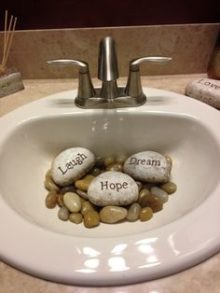 Here is a cute idea for the bathroom sink so that the energy doesn’t simply run away down the drain. Of course, the stones you use would have to be maintained so that they wouldn’t attract anything furry or green… like algae or soap scum, but it’s really a cute idea, and worth doing, if you like it!
Here is a cute idea for the bathroom sink so that the energy doesn’t simply run away down the drain. Of course, the stones you use would have to be maintained so that they wouldn’t attract anything furry or green… like algae or soap scum, but it’s really a cute idea, and worth doing, if you like it!
Important points:
The first and foremost thing about feng shui cures that work is that they have to be really liked by you and make sense in your overall home decor style.
If you bring a so-called powerful feng shui cure that is supposed to work but looks totally out of sorts in your space, I assure you it will not create good feng shui for you. Maybe even quite the opposite.
Last but not least:
Lastly, I thought it might be fun to upload a gallery of really amazing and wonderful bathrooms so that we can drool, and fantasize, and dream…
Sources:
Stopping To Smell The Roses
One of the most powerful ways to improve your home and life is by adding plants and flowers.
Feng Shui and Flowers
Beautiful plants and flowers lift the energy of your home, bringing beautiful healthy growing chi. And the most auspicious part of plants? Flowers. They are are the yang expression of a plant.
Flowering blooms aren’t just lovely to look at, they can promote love and are regarded as symbols of good fortune and bring auspicious energy. You can use them to brighten up your home by displaying them in vases in your home. A mixed bouquet brings bright, happy yang energy to the house. Think of flowers as the way a plant smiles – and those smiles create happy feelings for you, your family, and visitors to your home.
Bear in mind, though, that dried flowers are generally regarded as dead energy, making them unsuitable for lifting chi. Here are some more important guidelines on flower feng shui.
- Display flowers as an offering.
If you’d like to imbue fresh, spring-time or renewal energy for yourself or your home, place flowers in a vase according to the energy you wish to inspire. For healing energy, select white flowers, for love choose pink, and for wealth, display purple or gold flowers.
- Offer flowers to those in need.
When friends or family members are ill, offer them a bouquet of white flowers, such as magnolia or lilies. If friends or family are in need of more prosperity, offer a bulb flower, such as narcissus to inspire greater wealth. Golden-colored chrysanthemum and narcissus are always a good choice, too, for promoting wealth chi, particularly when moving into a new home, beginning a new undertaking, or at the beginning of the New Year. Pink hued flowers represent fond affection and happiness and are perfect for friends and creating loving ties.
- Singles should display peonies.
The Chinese have long held that peony flowers are the flower of romance and many a young Chinese woman displayed red peonies, the ultimate symbol of youthful love and romance. Singles who wish to marry should display a vase of peonies or a painting of the blossoms in the living room, where they represent seeking love versus in the bedroom where the flowers are a symbol of carnal love.
- The lotus is the flower of enlightenment.
As a symbol of purity, the lotus rises from the muddy waters to bloom, symbolizing rising above the worldly problems. Buddhas are often shown seated in a lotus and the Buddhist chant Om Mani Padme Hum literally means “Hail to the Jewel in the Lotus.” As such, it’s highly regarded as a symbol of great good fortune and enlightenment. The flower represents unending success and ceaseless abundance. Display these in a vase or as a painting or figure to inspire your life and home.
- Orchids are the career flower.
Despite their reputation as fickle flowers, orchids are quite simple to raise and bring beautiful career chi to those who display them. Purple orchids bring opportunity and success and are regarded as the most beneficial color to display. In a living room, the orchid bestows family luck and harmony.
- Flowers to symbolize prosperity, success, and wealth.
Chrysanthemum seen so abundantly in floral shops and in fall gardens represents bumper harvests, abundant joy and a long, fruitful life. Other flowers that represent acquired wealth include bulb flowers such as narcissus, tulips, paperwhites, gladiolas, iris or lily.
- Flowering branches represent longevity, overcoming adversity.
Whether it’s a plum, cherry, or peach branch, flowering branches because they typically bloom in winter represent overcoming obstacles. These are wonderful reminders of succeeding after difficulties and of longevity.
- Flower cleansing baths purify and uplift.
To create essential yang chi and clear your mind and rejuvenate your body, simply bathe in a bathtub that has been sprinkled with the petals of at least five different flowers in the five colors of the five elements. There should be pink, yellow, white, blue, and green petals from flowers or herbs, like rosemary, in your bath. You may also wish to include Bach flower essential oils in your bathe to help create a beautiful aroma as well, or use fragrant flowers such as lavender, jasmine or gardenia to perfume your water. This uplifting ritual will help to infuse your body with beautiful yang energy and soothe your mind.
- Choose color combinations carefully.
Although beautiful, red flowers are not regarded as auspicious for giving to someone who is ill and should be avoided when visiting someone sick or giving at the beginning of a relationship as the color can be overpowering and “flame out” the romance. Red peonies symbolize passionate, amorous love and can reawaken a dormant sex life for a couple when displayed in the living room.
When giving flowers in a new relationship, opt for sentimental colors such as pink or yellow or a combination of these colors. Red and white flowers should never be put together, but a rainbow of colors is always a good color option as long as all colors are represented. Purple is regarded as auspicious and harbinger of prosperous times and success, as is gold. Purple, gold and white are especially harmonious and auspicious.
Have you ever gazed at a lush and beautiful floral arrangement and wished you knew how to pull one together? Now you can. We turned to a flower pro to give us her flower arranging tips, tricks, and styling shortcuts so you’ll never have to shell out money for a store-bought bouquet ever again.
Flower Arranging 101
- Create a foundation with foliage. This is the framework for the arrangement. Build a pleasing, asymmetrical shape that leans on the lip of the vase and has a high point in back. Make sure it’s not too thick, so there’s room for the flowers.
- Add large “face” flowers, cutting stems at different lengths so some blooms nestle low and others extend. The crisscrossed foliage stems in the vase work like webbing to hold flowers where you want them. Take your time, experimenting until it looks good.
- Weave in wispy elements, like climbing flowering vines or ferns, in three strategic spots: up high on one side, down low (spilling out of the vase), and in the middle, as if they’ve pushed their way through a cluster of larger blooms.
Flower Arranging Tips and Tricks
- Use opaque vases instead of glass. They hide messy stems and quietly complement flowers rather than competing with them.
- Mimic the randomness of nature. Think asymmetry, odd numbers, and varied depth and height when arranging.
- Don’t be afraid to cut tall flowers very short.
Playing with scale can give even a solitary bloom a lot of impact: Imagine looking down into the face of a single sunflower in a low, round bud vase.
- Clip backyard plants to make arrangements more interesting.
Shrubbery or garden foliage, like forsythia, coleus, begonia leaves, and ivy, can add depth to a display. And don’t dismiss beautiful weeds, such as Queen Anne’s lace.
- Opt for slender-necked vessels if you’re unsure about your skills.
Vases with smaller mouths do the work for you—holding flowers artfully without letting them plop—so even the most basic display looks gorgeous.
The Only Vases You Really Need
- A tall, fluted column, slightly wider on top than on the bottom, holds supermarket bunches, bouquets from guests, and any long-stemmed roses that come your way. A height of about 10 inches works well.
- A small footed urn is perfect for a centerpiece. It’s low, so it won’t interfere with dinner conversation, and it offers a nice view from above. Six inches tall by eight wide makes a statement but isn’t hard to fill.
- A trio of bud vases in complementary shapes can work as a cluster centerpiece or be separated to showcase single gorgeous blooms. Choose one medium-height, one tall, and one squat, all with narrow mouths.
Think Outside The Box
There are a wide variety of items that make for wonderful flower holders and vases. Some of them allow for a small jar or vase to be placed inside, others are watertight enough to be used alone. I found a bunch of images that I think will give us some really great ideas:
Some of these ideas might require some expertise and more than a little thought, but they really got my creative juices going. What about you? See any that you’d like to try?
The Language of Flowers
The language of flowers, sometimes called florigraphy, was a Victorian-era means of communication in which various flowers and floral arrangements were used to send coded messages, allowing individuals to express feelings which otherwise could not be spoken. This language was most commonly communicated through Tussie-Mussies, an art which has a following today.
I think it might be fun to make a flower arrangement with a message, here are some ideas. Much more can be found here: The Language of Flowers, and here: Dictionary of the Language of Flowers
- Domestic (happiness) – Honeysuckle (Sent Monthly); Holly;
- Encouragement – Golden Rod;
- Excellence (unpretending excellence) – Camellia japonica;
- Family (family union) – Pink Verbena;
- Feeling (warmth of feeling) – Peppermint;
- Feelings (warm feelings) – Spearmint;
- Friendship (everlasting) – Arborvitae;
- Friendship (lasting) – Pear Blossom;
- Friendship (true) – Oak Leaf Geranium;
- Fruitfulness – Hollyhock; Orange Blossoms;
- Gay Life – Peony;
- Gentility – Pompom Rose;
- Gladness – Myrrh;
- Good Luck – Camellia; Mugwort;
- Good News – Guelder Rose (Snowball-tree);
- Good Wishes – Sweet Basil;
- Goodness – White Zinnia; Snowball;
- Grace – Yellow Jasmine; Pink Rose; Multiflora Rose; China Rose;
- Gratitude – Campanula; Canterbury Bells; Dark Pink Rose;
- Happiness – Dandelion; Mugwort; Rose (Red and yellow together);
- Happiness (domestic) – Honeysuckle (Sent Monthly); Holly;
- Happiness (return of happiness) – Lily of the Valley;
- Happiness (rural) – Tulip-tree;
- Happy (love) – Bridal Rose;
- Happy (marriage) – Peony;
- Heart (light heartedness) – Shamrock;
- Hope – Flowering Almond; Hawthorn; Iris (Fleur-de-Lis); Star of Bethlehem; Snowdrop;
- Hope (hope in adversity) – Pine (Spruce);
- Hope (hope in misery) – Milkweed;
- Joy – Rose (Red and Yellow together);
- Joy (joys to come) – Celandine;
- Joy (of life) – Light Pink Rose;
- Lasting (pleasure) – Everlasting Pea; Parsley;
- Life (gay) – Peony;
- Life (joy of ) – Light Pink Rose;
- Life (long life) – Peach Blossom
- Life (you’ve made my life complete) – Lily of the Valley;
- Light heartedness – Shamrock;
- Luck – Bells of Ireland;
- Luck (good luck) – Camellia; Mugwort;
- Marriage (happy) – Peony;
- Pleasure – Red Poppy;
- Pleasure (blissful) – Sweet Pea;
- Prosperity – Peony; Cattail; Wheat;
- Protection – Juniper; White Heather;
- Success – Yellow Poppy; Palm Leaves;
- Victory – Palm Leaves;
- Warm (feelings) – Spearmint;
- Warmth (warmth of feeling) – Peppermint;
- Warmth (warmth of sentiment) – Spearmint;
- Welcome – Mayflower;
- Wisdom – White Mulberry; Iris (Fleur-de-Lis);
- Wish (a wish) – Fox Glove;
- Wishes (good) – Sweet Basil;
- Wishes (wishes will come true) – White Heather;
- Worth – Mignonette; Evergreen (trailing woodland plants that stay green all year);
- Worth (worth beyond beauty) – Sweet Alyssum;
LOL… I couldn’t resist!
Sources:
Back In The Closet
Now that we’ve gotten excited about decluttering and cleaning out our closets, and it’s time to put everything back… but before we get started with that, here are a few more helpful ideas:
Paint The Closet
The closet is actually a very important “room” or space in the home. It really can make or break a home sale if there’s insufficient closet space. So, taking it one step further, when designing your closet, also keep color in mind.
For the most part when I’m at a color consultation I always ask my client if they’d like to paint their closet. The majority of the time it’s a no because after all, “why do I need color in my closet” anyway?
There are several reason why you’d want to paint your closet:
- It’s probably still the contractors beige or white.
- It’s probably a flat or matte sheen which gets dirty very easily.
- It looks unfinished.
- It’s hard to keep clean.
- Painting is a minor detail that will have a high impact if you have to sell your home.
- It will look better.
- I don’t know what color to choose for my closet.
- I’d have to take all the shelves out or paint around them.
- It’s a HUGE project.
- No one will look inside my closet.
- It’s just a closet.
The best time to paint your closet of course is when you first move into your home and it’s still empty. You’ll more than likely have some type of wire shelving to paint around but it will definitely be worth it.
Now to the question – What Color Should I Paint My Closet?
Best colors for a closet:
You may not give much thought to the inside of your closets when painting a room but paint pros say that choosing the right color and sheen will not only improve the appearance of your closet but yours as well. No more reaching into a dark closet and grabbing the navy blouse instead of the black one. Debbie Zimmer of the Paint Quality Institute has some pointers on what to consider when painting a closet.
- An open closet.
Your best bet with a closet or storage space that’s open to the rest of the room is to paint it the same color as the room or a slightly lighter shade. That way it’s more integrated and less likely to draw attention to what’s inside.
- Your primary closet.
You’ll want the closet where you store your wardrobe to be bright so you can actually see the color of your clothing. White or a light color are good choices. Choose a paint with a shinier sheen such as semi-gloss, which will reflect more light.
- Pantry or bathroom closets.
Use a durable paint in your pantry and other closets where you store things that may spill or get sticky. Use a semi-gloss sheen that stands up to scrubbing. As for color, choose one that blends in with the room.
- Your junk closet.
For those catch-all closets where you stash off-season sporting goods, boots, cleaning supplies, or other gear, think about a darker color that de-emphasizes what’s inside. And keep the door closed
- Guest room closet.
You can be more playful with a closet in a guest room that’s used infrequently. Try a contrasting color. That way when your guests open the door they get a pop of color. Zimmer says that darker colors are more forgiving and can make dust less noticeable.
DESIGN TIP:
Interior designers recommend that you keep the color in your closet subtle and neutral. There really is no need to put substantial color in this room. Here’s why:
This graphic represents a neutral closet. The background is an off white or beige and the rectangles are your clothes. We all have just about every color from lights to darks in our closets so having the background a neutral will visually make the closet more appealing and easier to see. It’s really a small detail that will make a large impact in your closet.
Now this closet was painted the same coastal blue that’s been trending for quite some time. So many people have this color in their bedroom and have taken it into their closet but look what happens. It’s very unsettling to see all this color in a closet. The color of your clothes fight with the blue and it just becomes a mess. It’s like painting every room in your home a different and unrelated color. It doesn’t make sense and it’s just ugly! By the way – the color of the “clothes” are the same in both these graphics but see how different they look?
According to Feng Shui principles, white is the ideal color is ideal as it opens the energy more, as well as brings the crisp quality of the metal feng shui element.
So, I was thinking about red or maybe orange… I did some experimenting with the graphic, even made one a bright white. Here’s a sampling of the different colors:
Wow… I really like the black! I wonder if I could make it work in real life, or if it just looks good because it’s on a digital graphic instead of on a wall.
So my friends, whether you have a very large walk in closet or a very small closet, take the time out to finish it. And remember, color matters!
Organizing The Closet
Now that we have our closets painted, it’s time to get them organized. I looked around for inexpensive and easy storage systems, and found something that I think might work just fine. At least for a while.
Now that we’re cleaning up our clutter, you may notice that you have a lot of cardboard boxes that you need to get rid of. Packages are often delivered in boxes, you might get some extra boxes from shopping trips to warehouse grocery stores like Costco or Sam’s Club. It can be a little overwhelming when you look at all of the boxes you’ve brought into your home!
As you’re cleaning up these boxes, you might want to consider using them to make easy, inexpensive storage bins. One of the great things about having so many cardboard boxes on hand is that you have a lot of different shapes and sizes to choose from. If you’ve been meaning to implement a storage solution in a particular part of your home, this might be the perfect time to find something that will fit your needs!
Org Junkie says:
“I like using cardboard boxes for storage in our home because they’re free, and they’re disposable. We move a lot, and I’ve found that often a storage solution that worked in one home won’t work in another. We have another move coming up in the summer, and I’m hesitant to spend a lot on storage solutions that might not translate well to another home. By repurposing cardboard boxes for storage, I’m saving money, and cutting down on the amount of stuff we have to move to a new home.
I also used a smaller cardboard box to store toilet paper in our powder room. Our powder room doesn’t have any cabinets or shelves at all. We were forever having to run to our linen closet to replace our toilet paper rolls, so this new storage solution is a welcome addition in our home.
As you’re going through your cardboard boxes, think about different ways you might be able to use them to help you work towards a more-organized home. The storage solutions you’ve been looking for might be right under your nose! Happy organizing!”
To make the storage bins look great and give them more durability and strength, I think it’s worth revisiting a yesterday’s post and taking another look at these:
Build Your Own Storage System
From WikiHow, we have a great tutorial for a cardboard box storage system. It looks pretty sturdy, and I think it just might work if it’s not loaded down with anything too heavy. Here’s the tutorial:
If you have a lot of small supplies to store but would rather not invest in a permanent storage system yet, you can make your own from boxes and add to it as your collection grows. It’s not the best, and sturdy system, but it’s flexible, easy and inexpensive, and that might be just what you’re looking for!
Step 1
Get the boxes. Try to use sturdy heavy duty cardboard boxes. Thin, bendy boxes probably won’t work very well. You can use any measurements you want, as long as four long boxes (drawers) fit into one cubic box (compartment). Here are some suggested measurements and quantities:
This box is 13 inches by 13 inches by 13 inches. The “drawers” for this compartment would need to be 6 inches high, 6 inches wide, and 13 inches deep. This gives a 1/2 inch clearance on the top and sides. Make sense?
Step 2
Assemble the square “compartment” boxes into a shelving unit as shown in the picture.
Note: If these cardboard boxes are not as sturdy as you’d like, you can fold the flaps inward and glue them to the sides of the box. I would recommend using a good wood glue and weighting them down with books until the glue dries. Obviously this step would have to be completed before the boxes are assembled into the above shelving unit.
If you have nice thick sturdy cardboard boxes, you can cut the flaps on one side as shown below:
Step 3
Tape the cubes together – front, back and sides. When taping is completed, put the completed shelving unit against a wall.
Note: This tutorial shows a storage unit that is a 4 boxes by 4 boxes square… you can make your own to suit your needs. It doesn’t have to be square like this one. I do, however, think it will look better and hold up longer over time if the boxes are the same depth. That’s because the weight is distributed evenly. I haven’t made one of these yet, so I’m not entirely sure.
Step 4
Now it’s time to make the “drawers” for the compartments. This part is optional, and not all of the compartments need to have drawers unless you want them to.
Assemble the long boxes, which will be drawers. Cut the flaps off the top of the boxes unless you want to forego the option of pulling the “drawer” out. In which case, leave the flaps on and tape them well. Cut out a square at one end of the box. Four drawers fit in one compartment.
This tutorial does not include any kind of decoration or spiffing up of the boxes. The drawers are loaded up, inserted, and labeled.
The suggestion is to:
- Sort the drawers alphabetically.
- Alternatively, sort the drawers so that things you use most often are at arm level, easiest to reach, and things that are less frequently used are lower or higher.
- Slide the drawers into the compartments.
Use compartments without the drawers for larger objects.
Use small containers to store small objects. The cannisters are tennis ball cans. Check with your local tennis club – you might get a bunch of them for free.
Community Q&A
These questions and answers were also part of the tutorial, and I thought it might be good to include them here.
Where can I get cardboard boxes?
- Look at the dollar store or ask a local convenience store to save their leftover boxes for you.
- The easiest way is to find a box that is not being used in the house. You can paint it or cover it in duct tape to add strength and color. You can also label and decorate it if you like.
- Local furniture stores are a great resource for heavy duty cardboard. The boxes are really big, but
What if the system is not stable?
- You may want to cover it with duct tape, or add pieces of wood on the bottom and sides to make it strong.
How can I color cardboard furniture?
- You can use all different types of paint, markers, stickers, or any other art tools you can think of!
What is the effect of a cardboard box storage system on the environment?
- By reusing things like boxes, you’re generally cutting down the amount of energy that would be needed for recycling.
- You’re also preserving the environment by cutting down on the energy needed to produce other materials like wood or plastic.
What kind of tape should I use? What tape is best to paint over without it peeling?
- You should use duct tape, it has a strong flexible adhesive that will hold the boxes together, and provides a clean look.
But wait, there’s more!
This is a picture of a whole closet made from super heavy duty cardboard. I wonder where they got that!
Here are a couple of YouTube tutorials:
Her English isn’t that great, but I like her tutorial because it doesn’t look like an expert make it. Also, I love her idea on how to strengthen the shelving. I recently bought a convection oven, and those corner pieces were in the box. So, I might be able to use them when I make my own.
This is a nicely done tutorial, and I like the idea of using wood between the boxes. This looks very sturdy!
This tutorial was for using big sheets of heavy cardboard, that they got from a local furniture store, and making them into a really sturdy shelving unit. I don’t think you’d actually need a table saw, or power tool for this. A nice sharp box cutter would probably work just fine. He also doesn’t give exact dimensions, so you’d have to think it through and draw a good diagram. He had another tutorial where he tested it to see how much weight it would hold, and I was impressed. So am also considering this as a viable idea, I think it might actually be capable of holding books !!
And here is one more. It’s really short, but she makes it look so easy. I like the idea of using nuts and bolts to attach the boxes together. Her finished product looks a little rough, I think it needs some contact paper, paint, fabric, and/or bling.
Making it pretty:
I found a variety of tutorials about how to turn a cardboard box into something that looks cute. These are visual only, and don’t come with written directions, but I think you can get the idea from the pictures:
I also found these ideas:
- Wrapping paper is pretty but may not last very long.
- Fabric is a nice choice. You could even add a handle.
- Wrapping twine around the outside, and gluing fabric to the inside makes these boxes nice and sturdy.
- Sturdy fabric and a small framed chalk board makes for a cool storage box.
- These boxes have cheap wood slats glued on the sides along with a nice framed chalk board.
So, lets get our closets painted and organized so we can put all our favorite stuff back in them and get started making even more cool stuff out of the left overs!
Sources:
The Front Door
Furnishing and decorating your home starts at the front door. The front door can be considered a great opportunity for personal expression, not to mention the ultimate way to grab the attention of everyone in the neighborhood (if this is what you are after). The main entrance to any home can reveal much about the house and its inhabitants, so why not make the best of it?
Generalities
There are plenty of key elements that can make your project successful. The pathway or stairway leading to the front door can be added a fresh touch by using flower pots and other creative green arrangements.
The door mat, bell, door knob and door knock can all enhance the look of the main entrance, so try to take advantage of their presence the best way you can. Make a powerful statement by painting your door in a vivid, yet visually pleasing color, well integrated in the overall exterior design of the house. Then add a large street number or some other fun decorations to match the color.
Consider outdoor pendant lamps or various lighting solutions to flank the main pathway or stairway leading towards the main door.
Feng Shui and the Front Door
In feng shui, the front door is considered the called the mouth of Chi. It is through the front door that the house receives its feng shui nourishment of energy. The quality of this energy determines the quality of energy in your home. In classical feng shui, the choice of most auspicious color is based on the direction of the front door and its corresponding feng shui element.
Feng shui is all about good energy, and you can welcome this energy with a strong, auspicious feng shui front door. Because it is through the front door that the house absorbs most of the energy it needs in order to nourish your personal energy, it is important to do your best in creating a strong feng shui front door.
The easiest way to do that is to find the appropriate feng shui design for your door – be it with colors, shapes, images or materials. The best feng shui design is the one that nourishes the feng shui element that corresponds to the direction your front door is facing.
-
East
The feng shui element of the east is wood, so if your front door is facing east, your best choices are the wood element colors green and brown.
The Wood feng shui element is nourished by the Water feng shui element and supported by the Earth feng shui element, so you can also choose the colors of these two elements.
To sum it up for you, best feng shui colors for an East facing front door are (in order of their auspiciousness): green, brown, blue, black, very light yellow and all earthy colors.
Avoid the following colors for your East facing front door: red, purple, white and gray. These colors represent the element of Fire and Metal that are destructive to Wood.
-
Southeast
The color choices for your southeast front door are similar to an east facing door because they share the same feng shui element. The feng shui element of the Southeast direction is the Wood element, and the corresponding feng shui bagua energy is Money and Abundance.
In case of a Southeast facing front door, you have additional color choices because there are two more elements that bring good energy to this area. These two elements – the Water and the Earth feng shui elements – are both nourishing and supportive of Wood, so you can use their colors, too, for your Southeast facing front door
Because a Southeast facing door is considered a prosperity door in feng shui, often the best color and design choices are those corresponding to the Water feng shui element, as water is the universal symbol of prosperity flow and abundance.
To sum it up, the best feng shui colors for a Southeast facing front door are (in order of their auspiciousness): green, blue, brown, black, very light yellow and all earthy colors.
Avoid the following colors for your Southeast facing front door: red, purple, white and gray. These colors represent the elements of Fire and Metal that are destructive to Wood.
-
South
South is the only direction with the fire feng shui element, so the best feng shui color for a South facing front door is the red, of course! Other feng shui fire element colors that are good for your South door are yellow, purple, orange and strong pink/magenta. As some of these colors might not work with your house exterior, here are a couple other color choices.
The element of Wood is nourishing for the Fire element/creates it, thus the Wood element colors are also good for a South-facing front door.
To sum it up for you, best feng shui colors for a South facing front door are (in order of their auspiciousness): red, purple, strong yellow, deep orange, deep pink, green and brown colors.
Avoid the following colors for your South facing front door: blue, black and all earthy colors. These colors represent the elements of Water and Earth that are destructive/weakening for the Fire element of South.
-
Southwest
The feng shui energy associated with a southwest door is maternal energy, as well as the energy of love and marriage. Because of this, you should choose a color of the Earth element or go for a color of a feng shui element that nourishes Earth.
In case of a Southwest facing front door, there is one more feng shui element that you can use for an additional choice of colors. The element of Fire is nourishing for the Earth element/creates it, thus the Fire element colors are also good for a Southwest facing front door.
So, the best feng shui colors for a Southwest facing front door are (in order of their auspiciousness): earthy/sandy colors, yellow, burgundy red, purple, deep orange, and rich pink.
Avoid the following colors for your Southwest facing front door: green, brown, white, gray, blue and black. These colors represent the elements of Wood, Metal and Water that are destructive/weakening for the Earth element of the Southwest bagua area.
-
West
For a western facing door go for the colors of the metal feng shui element, which are white and gray. If they’re a little bland for your tastes, you can also go back to Earth element color choices for your western facing front door.
In the case of a West facing front door, there is one more feng shui element you can use; this gives you a wider range of good colors. The element of Earth is nourishing for the Metal element, thus all Earth element colors are also good for a West facing front door.
So, the best feng shui colors for a West facing front door are (in order of their auspiciousness): white, gray, light yellow and all earthy/sandy colors.
Avoid the following colors for your West facing front door: blue, black, red, purple, orange, and deep pink. These colors represent the elements of Water and Fire that are weakening/destructive for the Metal element of West direction.
-
Northwest
A northwest front door has the same best color choices as the western facing door because both directions share the same feng shui element of metal. However, because in feng shui the northwest direction is associated with helpful people, you might need to pay extra attention to it.
In the case of a Northwest facing front door, you can also use the colors of the Earth feng shui element, as this element is nourishing/creates the Metal element.
So, the best feng shui colors for a Northwest facing front door are (in order of their auspiciousness): white, gray, light yellow and all earthy/sandy colors.
Avoid These Colors for Your Northwest Facing Front Door: blue, black, red, purple, orange, and deep pink. These colors represent the elements of Water and Fire that are weakening/destructive for the Metal element of Northwest direction.
-
North
North is the only direction of the feng shui element of water, so the best choices for a north facing door are the water element colors, black and blue. If these two colors do not work well with your house exterior, you can go for metal element colors.
In case of a North facing front door, there is one more feng shui element that you can use for an additional choice of colors. The element of Metal is nourishing for the Water element/creates it, thus Metal element colors are also good for a North facing front door.
So, the best feng shui colors for a North facing front door are (in order of their auspiciousness): blue, black, white and gray.
Avoid the following colors for your North facing front door: green, brown, yellow, red, purple, orange, and deep pink. These colors represent the elements of Wood, Earth and Fire that are weakening/destructive for the Water element of North direction.
-
Northeast
A northeast facing front door is an opening to the energy of spiritual growth and cultivation. Its feng shui element is Earth. When you have a Northeast facing front door, there is one more feng shui element that you can use as an additional choice of color.
The feng shui element of Fire is nourishing for the Earth element because it creates it, thus the Fire element colors are also good for a Northeast facing front door.
So, the best feng shui colors for a Northeast facing front door are (in order of their auspiciousness): earthy/sandy colors, yellow, burgundy red, purple, deep orange, and rich pink.
Avoid the following colors for your Northeast facing front door: green, brown, white, gray, blue and black. These colors represent the feng shui elements of Wood, Metal and Water that are destructive/weakening for the Earth element of the Northeast area.
Wow! So that’s a lot of information. And all I was thinking about was painting the front door red. Not a good feng shui color for my East facing door.
Painted Art Doors
So… I’m going to have to get creative. And well… I found a bunch of really fun and interesting painted doors, and now I have some great ideas. Here’s a gallery of the images I found:
Sources: The Spruce, and Fresh Home
- Radical Self Care Project Overview by shirleytwofeathers - No Comment
- Radical Self Care Image Gallery by shirleytwofeathers - No Comment
- It’s A Wrap by shirleytwofeathers - 3 Comments
- Something To Consider by shirleytwofeathers - 1 Comment
- Nurturing Your Precious Self by shirleytwofeathers - 3 Comments
me: Make Your Own Violet Fire
Abdulrahman: Money Chant – Very Fast
Shirley Twofeathers: It’s A Wrap
Daniel Knirs: It’s A Wrap
Shirley Twofeathers: It’s A Wrap



